Fast Track Immigration FTI-TTP
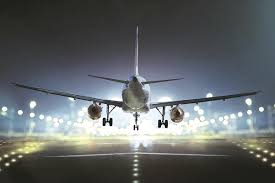
- 17 Jan 2025
In News:
The Government of India is launching the Fast Track Immigration Trusted Traveller Program (FTI-TTP) to streamline immigration at seven major airports.
Key Highlights:
- The initiative, inaugurated by Union Home Minister Amit Shah, aims to enhance the travel experience for Indian nationals and Overseas Citizen of India (OCI) cardholders.
- This comes seven months after the programme was first introduced at Indira Gandhi International (IGI) Airport, New Delhi. The airports included in this initial phase are: Mumbai, Chennai, Kolkata, Bengaluru, Hyderabad, Cochin and Ahmedabad
Objectives of FTI-TTP
- Provide seamless and secure immigration services.
- Reduce human intervention using automated e-gates.
- Align with the Viksit Bharat@2047 vision for modern infrastructure.
How the Programme Works
The FTI-TTP simplifies immigration with automated e-gates. Travellers must complete a one-time online registration to enroll. The process involves:
- Online Registration: Submit personal details and upload necessary documents via the official portal (https://ftittp.mha.gov.in).
- Biometric Submission: Fingerprints and facial images must be submitted at an airport or Foreigners Regional Registration Office (FRRO).
- Immigration Clearance via E-Gates:
- Passengers scan their boarding passes and passports at e-gates.
- Biometrics are automatically verified.
- Upon authentication, the e-gate opens, granting clearance.
Validity: Registration is valid for five years or until the registered passport expires, whichever comes first.
Who is Eligible?
The first phase of the FTI-TTP is open to:
- Indian nationals.
- OCI cardholders aged between 12 and 70 years.
- Children aged 12-18 can register using their parents’ email/phone number.
- ECR (Emigration Check Required) passport holders are not eligible.
Documents Required for Registration
- Passport-sized photograph (as per Indian passport specifications).
- Scanned copy of passport (front and back pages).
- Proof of current address.
- OCI card details (if applicable).
Key Points to Note
- Registration may take up to a month due to verification by field agencies.
- Applications with incorrect or outdated information may be rejected.
- In case of passport loss or expiry, travellers must reapply and submit fresh biometrics.
- Passports must have at least six months’ validity at the time of applying.
- For support, travellers can reach out via email at india.ftittp-boi@mha.gov.in.
Implementation Phases
The FTI-TTP will be implemented in two phases:
- Phase 1: Covers Indian citizens and OCI cardholders.
- Phase 2: Will extend to foreign travellers.
- The programme will be expanded to 21 major airports across the country.
Comparison with Similar Global Programmes
Several countries have implemented similar fast-track immigration systems:
United States: Global Entry
- Introduced in 2008.
- Offers self-service kiosks for pre-approved travellers.
- Requires background checks and in-person interviews.
United Kingdom: Registered Traveller Service
- Launched in 2015.
- Allows frequent visitors from select countries, including India, to use e-gates.
- Requires visa eligibility or multiple prior visits.
European Union: Smart Borders Initiative
- Implemented in 2016, with full deployment expected by 2024.
- Pre-registers biometric data for faster processing at Schengen Area borders.
Australia: SmartGate
- Started in 2007 for Australian and New Zealand passport holders.
- Uses automated kiosks for identity verification via passport scans and photos.
Saudi Arabia: Smart Travel System
- Launched in 2019.
- Uses automated e-gates for faster immigration clearance.
- Expanding as part of Vision 2030 to improve travel experience, particularly for Hajj pilgrims.
US AI Hardware Export Restrictions and Impact on India

- 16 Jan 2025
In News:
Days before demitting office, the Joe Biden administration has released an expansive regulatory framework on the export of artificial intelligence (AI) hardware such as graphics processing units (GPUs), which could have far-reaching consequences for India’s AI ambitions.
Three-Tier Framework for AI Hardware Export Restrictions
- Tier 1: Closest US Allies
- Countries: Australia, Belgium, Canada, South Korea, UK, etc.
- No restrictions on computing power deployment.
- Minimal security requirements.
- Impact: Free access to AI technology for these nations.
- Tier 2: Majority of Countries (Including India)
- Countries: India, Brazil, South Africa, etc.
- Restrictions: Limited to importing approximately 50,000 advanced AI chips (around $1 billion) through 2027.
- Potential to Double Cap: If countries sign agreements to uphold strict security standards.
- Impact on India:
- Short-Term: Likely to fulfill current demand for 10,000 GPUs for the IndiaAI Mission.
- Long-Term: Challenges in scaling AI infrastructure, with possible delays in large AI data centers and difficulty acquiring large-scale GPUs.
- Tier 3: Countries of Concern (Restricted Nations)
- Countries: Russia, China, North Korea, Iran, etc.
- No Access to US AI Technology: Nearly total prohibition of AI tech exports.
Special Provisions for India and China
- General Validated End User (GVEU) status for India and China:
- India: Authorisation for civilian and military use, excluding nuclear applications.
- China: Only civilian use permitted under similar conditions.
Why the US Imposed These Restrictions?
- National Security: Prevent adversaries (China, Iran, Russia) from acquiring advanced AI technologies.
- US Technological Leadership: To protect US AI leadership and prevent loss of competitive edge.
- Trusted Ecosystem: Build secure and trusted AI environments for allied nations.
Impact on India
- Short-Term:
- IndiaAI Mission: Current procurement of 10,000 GPUs unlikely to be affected.
- Subsidized GPUs: Available for startups, academia, and researchers.
- Long-Term Concerns:
- Licensing Uncertainties: Possible delays in large-scale AI deployments and AI data centers.
- Impact on Large Firms: Companies like Reliance and Yotta may face challenges scaling up AI compute infrastructure.
- National AI Mission Challenges: Difficulty in acquiring enough GPUs for large-scale AI projects beyond 2027.
- Strategic Leverage: US could use AI export restrictions to negotiate trade deals or tariff adjustments.
Nvidia’s Criticism of the AI Diffusion Rules
- Overreach and Bureaucratic: Nvidia criticized the 200+ page regulatory framework as excessive, secretive, and bureaucratic.
- Harming US Competitiveness: Claims that the rules would hinder US innovation and global leadership, weakening the competitiveness of the US semiconductor and software industries.
- Contrast with Trump’s Approach: Praises the earlier Trump administration for fostering AI growth through industry competition without compromising national security.
Enforcement of the Rules
- Regulatory Control: Managed by the US Bureau of Industry and Security (BIS) under the Department of Commerce.
- Technology Access: Ensures AI chips and models do not reach adversaries or nations posing security risks.
Potential Impact on India’s AI Strategy
- AI Hardware Infrastructure: Challenges in large-scale AI hardware deployment.
- Competitive Disadvantage: Potential delays or downsizing of AI data centers could affect India’s competitiveness in AI technology.
- Strategic Partnerships: India may need to secure General National Validated End User authorizations to ensure uninterrupted access to advanced chips.
- AI Market Growth: India’s AI market projected to grow to $17 billion by 2027, with an annual growth rate of 25%-35%.
Iran's Capital Relocation
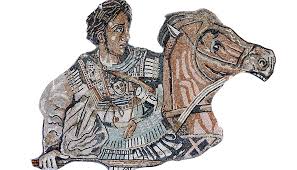
- 15 Jan 2025
In News:
Iran has announced plans to relocate its capital from Tehran to the Makran coastal region due to economic and environmental concerns.
Reasons Behind Relocation
- Overcrowding and Resource Constraints: Tehran, the capital for over 200 years since the Qajar dynasty (1794-1925), faces overpopulation, air pollution, water scarcity, and energy shortages.
- Strategic Importance of Makran: Located in Sistan and Baluchestan Province, Makran’s proximity to the Gulf of Oman enhances its potential for economic development.
- Economic and Maritime Significance: Home to key ports like Chabahar, Makran is vital for Iran’s petroleum reserves and coastal trade.
- Geopolitical Considerations: The development of Makran as an international trade hub could strengthen Iran’s economic ties with Central Asia and the Indian Ocean region.
About Makran
- Geographical Overview: A semi-desert coastal plateau shared by Pakistan and Iran, bordered by the Arabian Sea and the Gulf of Oman.
- Key Ports and Trade Routes: Gwadar (Pakistan) and Chabahar (Iran) serve as critical gateways to the Strait of Hormuz, a global oil supply route.
Alexander’s Invasion and Makran’s Historical Significance
Background of Alexander’s Invasion (327–325 BCE)
- Entry into India: Alexander, King of Macedonia (336-323 BCE), entered India via the Khyber Pass after conquering Kabul.
- Key Battles:
- Battle of Hydaspes (Jhelum): Faced and defeated King Porus, later reinstating him as an ally.
- Retreat at Hyphasis (Beas River): His army, exhausted and wary of the Nanda Empire’s strength, refused to march further east.
The Gedrosian Desert March
- Extreme Hardships: While retreating through the Makran Desert, Alexander lost a third of his army to dehydration, starvation, and exhaustion.
- Comparison with Cyrus the Great: Unlike Cyrus II, who failed to cross the desert, Alexander’s army endured the harsh terrain, albeit with heavy casualties.
Impact of Alexander’s Invasion on India
- Cultural and Trade Exchanges: Facilitated early Indo-Greek interactions and opened key trade routes linking South Asia and Europe.
- Greek Settlements: Established cities like Alexandria (Kabul) and Boukephala (Jhelum), influencing local governance and trade.
- Mauryan Expansion: Weakened regional rulers enabled Chandragupta Maurya to establish the Mauryan Empire.
- Influence on Art and Culture: Indo-Greek fusion led to the Gandhara School of Art, integrating Greek and Indian artistic traditions.
Israel-Hamas Ceasefire and Hostage Release Deal
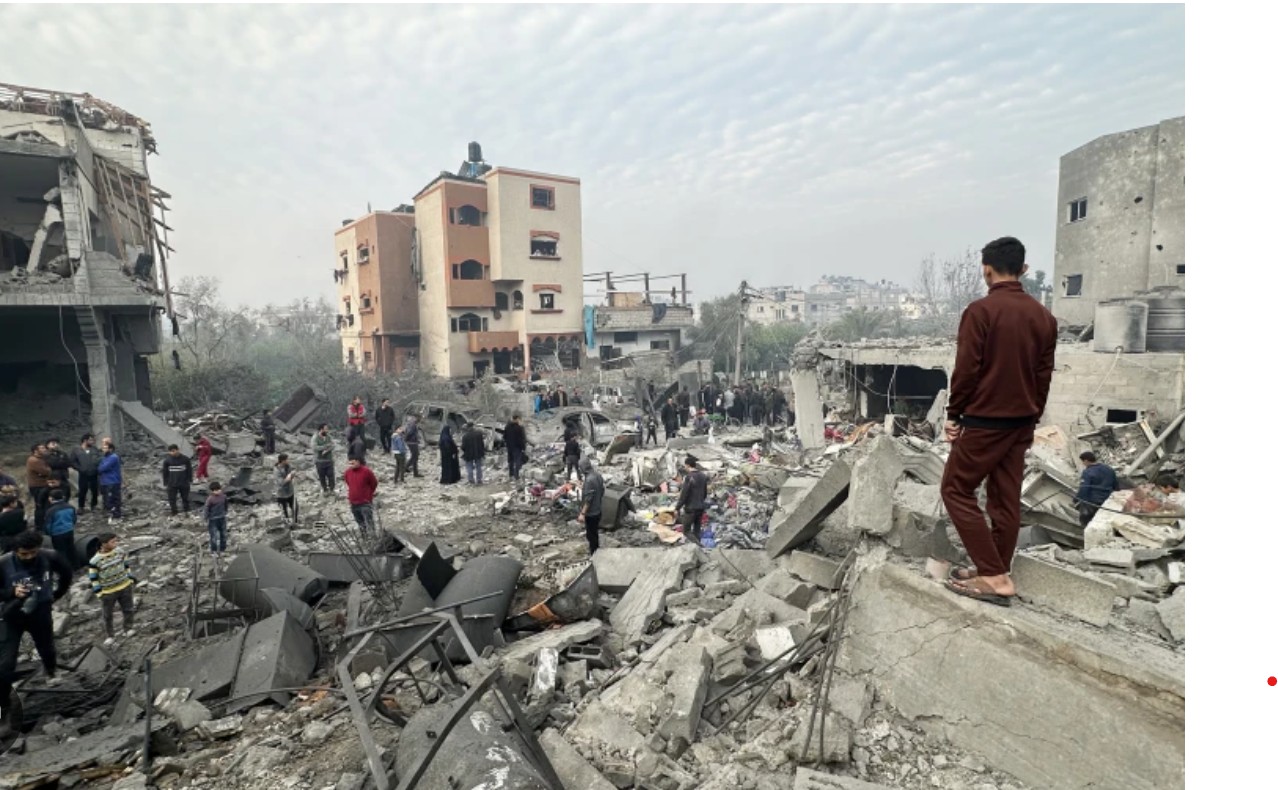
- 14 Jan 2025
In News:
Israel and Hamas have agreed on a Gaza ceasefire and hostage release deal after 15 months of war.
Key Highlights:
Ceasefire Agreement Details:
- Location: The deal was brokered in Doha, Qatar.
- Approval Process: The deal must be approved by Israel’s Cabinet to take effect.
- Mediators: The agreement was negotiated by Qatar, Egypt, and the United States, with their involvement ensuring the implementation of the deal.
Phases of the Deal:
- First Phase (42 Days):
- Release of 33 hostages by Hamas, including women, children, and elderly people.
- Hostage Exchange: Hostages will be exchanged for Palestinian prisoners in Israeli jails.
- Gaza Ceasefire and Withdrawal: Israeli forces will gradually withdraw from Central Gaza and move to the borders.
- Return of Displaced Palestinians: Displaced Palestinians will be allowed to return to Northern Gaza.
- Humanitarian Aid: 600 humanitarian aid trucks will be allowed into Gaza daily.
- Second Phase:
- Hostage Release: Negotiations will begin for the release of remaining hostages.
- Full Israeli Troop Withdrawal: Israel will fully withdraw its forces.
- Third Phase:
- Reconstruction of Gaza: Overseen by Egypt, Qatar, and the United Nations.
- Reopening of Border Crossings: For movement in and out of Gaza.
- Return of Hostage Bodies: Return of any bodies of hostages who died.
Background of the Israel-Hamas Conflict:
- Start: On October 7, 2023, Hamas launched an attack on Israel, called Operation Al-Aqsa Flood, causing significant casualties.
- Israeli Response: Israel launched Operation Iron Sword in retaliation.
- Casualties: The conflict resulted in 46,707 Palestinian deaths, mostly civilians, and 1,210 Israeli deaths.
About Gaza Strip:
- Location: A Palestinian enclave on the Mediterranean Sea, bordered by Israel and Egypt.
- Administration: The Gaza Strip is governed by Hamas since 2006.
- Movement Restrictions: Israel controls air space and shoreline, imposing restrictions. Egypt controls one border and also restricts movement.
Gaza Truce Deal:
- Nature: A proposed ceasefire to end the ongoing conflict.
- Primary Parties: Israel and Hamas.
- Supporting Nations: United States, Qatar, and Egypt.
- Significance:
- Aims to stop fighting and address the humanitarian crisis in Gaza.
- Potential to influence regional stability and Israeli politics.
- Marks an important moment in U.S. diplomacy under the Biden administration.
Indonesia Becomes 10th Member of BRICS
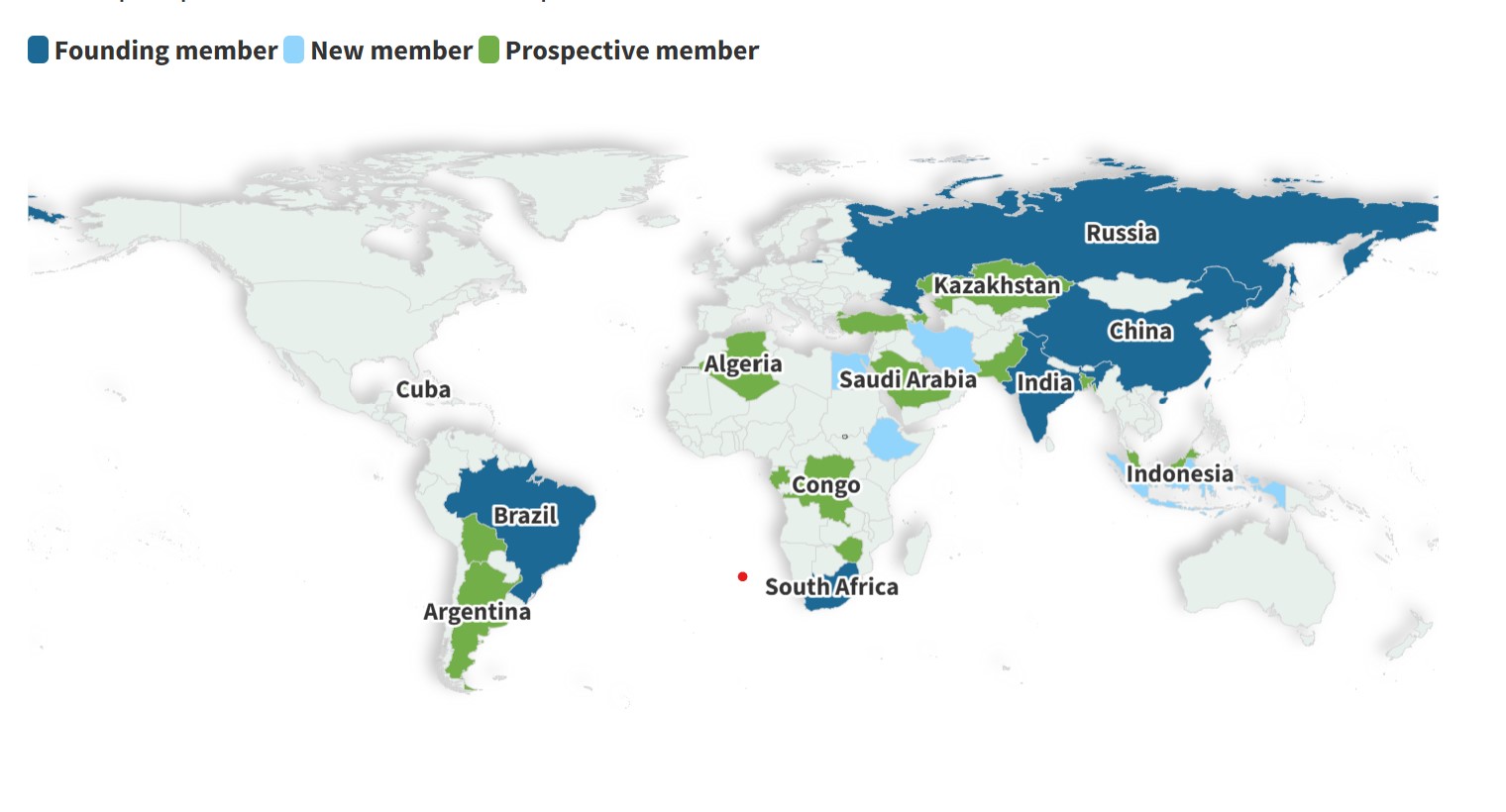
- 10 Jan 2025
In News:
In January 2025, Indonesia officially joined the BRICS group as its 10th member, signaling the expansion of this influential coalition of emerging economies. The addition of Indonesia, a Southeast Asian powerhouse, strengthens BRICS' global position and highlights the group's evolving dynamics.
BRICS Overview:
BRICS (Brazil, Russia, India, China, South Africa) is an informal intergovernmental group that fosters cooperation among major emerging economies. Initially coined as BRIC by economist Jim O'Neill in 2001, the group became BRICS in 2010 with the inclusion of South Africa. The bloc has grown steadily, with Indonesia now joining as its 10th member.
Recent Expansion:
- In 2023, invitations were extended to Saudi Arabia, Iran, UAE, Egypt, Ethiopia, and Argentina.
- By 2024, Iran, Egypt, Ethiopia, and UAE had joined as permanent members.
- Indonesia's membership was finalized in 2025, following its presidential elections and government formation.
Key Objectives of BRICS:
- Economic Growth: Promote trade, investment, and infrastructure development.
- Global Governance Reform: Advocate for equitable representation in global institutions like the UN and IMF.
- Cultural Exchange: Strengthen people-to-people connections and cultural ties.
- South-South Cooperation: Foster collaboration among developing nations.
BRICS Structure and Mechanisms:
- New Development Bank (NDB): Established in 2014, the NDB finances sustainable development projects in BRICS countries.
- Contingent Reserve Arrangement (CRA): A $100 billion safety net for financial crises.
- BRICS Academic Forum: Encourages academic collaboration across member states.
Global Influence and Economic Impact:
- Global Share: BRICS+ represents over 45% of the world’s population and 35% of global GDP (PPP-based).
- Strategic Position: The group acts as a counterbalance to the G7, challenging Western-dominated global financial systems.
- Financial Independence: BRICS aims to reduce dependence on the US dollar by facilitating local currency transactions and exploring a common currency.
- Technology Collaboration: Member countries, such as India and China, collaborate on digital payments and renewable energy technologies.
Indonesia’s Entry into BRICS:
Indonesia, the world’s fourth-most populous nation, strengthens BRICS’ representation in Southeast Asia. The country brings a robust economy and extensive trade networks, boosting the group's negotiating power. Indonesia’s membership was approved during the 2023 BRICS Summit and finalized in January 2025.
- Strategic Importance for Indonesia: The membership aligns with Indonesia's goals to enhance global cooperation, particularly with the Global South. It also reflects Indonesia's growing influence in international trade and geopolitics.
BRICS Challenges:
- Diverse Interests: Differences in economic priorities, such as India's ties with the US and Russia-China’s geopolitical rivalry, complicate consensus-building.
- Geopolitical Tensions: Disputes like the China-India border issue and Russia’s sanctions limit BRICS' ability to present a unified stance.
- Economic Sanctions and Internal Challenges: Countries like Russia face Western sanctions, while domestic issues in Brazil and South Africa divert attention from regional collaboration.
Significance of BRICS’ Expansion:
The expansion of BRICS marks a pivotal shift in global power dynamics, with a focus on South-South cooperation and equitable global governance. Indonesia’s membership further solidifies the group’s influence in Southeast Asia and adds to its efforts to challenge the dominance of Western-led financial institutions.
- Local Currency Use: The group promotes the use of local currencies for trade to reduce reliance on the US dollar.
- Global South Advocacy: BRICS champions the cause of developing nations, ensuring that emerging economies have a voice in global governance.
Recent and Upcoming BRICS Summits:
- 16th BRICS Summit (2024): Held in Kazan, Russia, with a focus on strengthening local currencies and promoting non-dollar transactions.
- 17th BRICS Summit (2025): Scheduled for July 2025 in Rio de Janeiro, Brazil, under the theme "Global South," with an emphasis on payment gateways to facilitate intra-BRICS trade.
Emergency Declared in Trinidad and Tobago
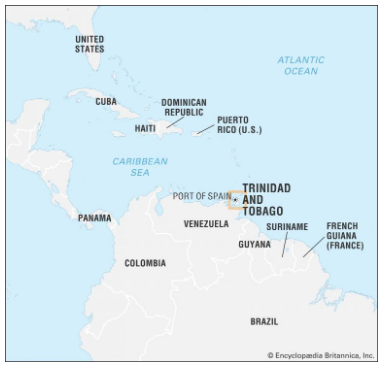
- 11 Jan 2025
In News:
- Trinidad and Tobago declared a state of emergency, in response to a surge in gang violence, which raised the annual death toll to the highest since 2013.
Trinidad and Tobago:
- Location: An island nation in the southern Caribbean, near Venezuela and Guyana.
- Capital: Port of Spain.
- Population: Approximately 1.5 million.
- Ethnic Composition: African (36.3%), Indian (35.4%), Mixed (22.8%), and others.
- Religions: Christianity (64%), Hinduism (18%), Islam (5%), and others.
- Independence: Gained from the UK on August 31, 1962, and became a republic in 1976.
- Member of: Caribbean Community (CARICOM), Commonwealth of Nations, and the United Nations.
- Major Rivers: Ortoire and Caroni.
- Geography:
- Total Land Area: 5,128 sq. km (Trinidad: 4,768 sq. km, Tobago: 300 sq. km).
- Climate: Tropical, with dry and rainy seasons.
- Highest Point: Mount Aripo.
- Natural Resource: Pitch Lake, the world’s largest asphalt reservoir.
- Mountain Range: Northern Range, part of the Andes extension.
Economic and Cultural Significance
- Exports: Major exporter of liquefied natural gas (LNG), methanol, ammonia, and petrochemicals.
- Culture: Known for Carnival, Calypso music, Soca, and the Steelpan (the only musical instrument invented in the 20th century).
- Infrastructure:
- Ports: Port of Spain, Point Lisas, Scarborough.
- Airports: Piarco International Airport (Trinidad) and A.N.R. Robinson International Airport (Tobago).
Engagement with India
- Trinidad and Tobago became the first Caribbean country to adopt India’s UPI platform.
- Both countries granted each other Most Favored Nation (MFN) status in 1997.
- Bilateral trade reached USD 368.96 million in FY 2023-24.
- The Indian diaspora constitutes about 42% of the population.
Past Emergency Declarations:
- 2014: State of emergency declared in response to gang violence.
- 2021: Emergency declared for Covid-19 restrictions.
- 2011: Limited state of emergency for drug-related crimes.
India-Malaysia Cooperation in Critical Minerals and Rare Earth Elements
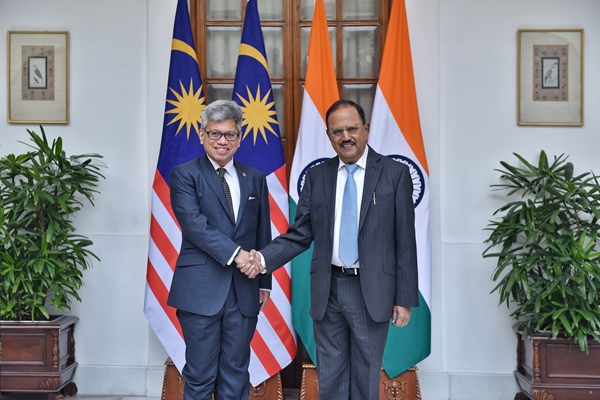
- 08 Jan 2025
In News:
- On January 7, 2025, during the inaugural India-Malaysia Security Dialogue in New Delhi, both countries agreed to enhance cooperation in critical minerals and rare earth elements (REEs).
- The meeting was co-chaired by India's National Security Adviser, Ajit Doval, and Malaysia’s Director General of the National Security Council, Raja Dato Nushirwan Bin Zainal Abidin.
- The agreement follows the upgrade of bilateral relations to a Comprehensive Strategic Partnership during Malaysian Prime Minister Anwar Ibrahim’s visit to India in August 2024.
- The dialogue also focused on other security aspects such as counter-terrorism, cyber security, and maritime security.
Importance of Critical Minerals and REEs:
-
- Critical Minerals: These are essential for a variety of industries like IT, energy, and defense. They are integral to manufacturing electric vehicle batteries, solar cells, and advanced electronics.
-
- Rare Earth Elements (REEs): Used in high-tech applications such as wind turbines, electric vehicle engines, and high-powered magnets. While their extraction is not rare, it is technically difficult due to their complex nature.
Strategic Relevance:
-
- Global Demand: The global demand for critical minerals is rising, and both countries see it as a strategic necessity to ensure a stable supply of these materials.
- Malaysia's Resources: Malaysia possesses significant deposits of non-rare radioactive earth ores, including essential REEs like Neodymium (Nd), Dysprosium (Dy), and Praseodymium (Pr). These elements are crucial in today’s technological innovations.
- India’s Dependence on Imports: India, which currently imports a substantial portion of its critical minerals, aims to diversify its supply chain by collaborating with Malaysia.
Sustainability and Ecological Accountability:
-
- Both countries recognize the environmental challenges of mining these critical resources. Malaysia aims to adopt responsible mining practices that minimize ecological harm.
- India seeks to ensure a supply chain that aligns with sustainable development goals, balancing economic needs with environmental responsibilities.
Enhancing Supply Chain Resilience:
-
- Diversification of Supply Chain: This partnership aims to reduce India’s dependency on a limited number of countries for critical minerals, enhancing resilience against global supply chain disruptions.
- Collaboration in Extraction and Processing: Both nations are exploring joint ventures in the exploration, extraction, and processing of critical minerals to boost their technological and economic standing globally.
Future Prospects:
-
- The institutionalization of this dialogue through annual meetings is expected to strengthen bilateral cooperation in the critical minerals sector.
- Increased cooperation is likely to enhance economic growth for both countries, aligning them strategically in the global minerals market as demand for these resources continues to soar.
Broader Security Cooperation:
-
- Beyond critical minerals, the India-Malaysia Security Dialogue explored enhanced collaboration in areas like counter-terrorism, cyber security, maritime security, and defense industries.
- This broadening of security cooperation complements the strategic minerals partnership, further solidifying the bilateral ties between the two nations.
Torrijos-Carter Treaties
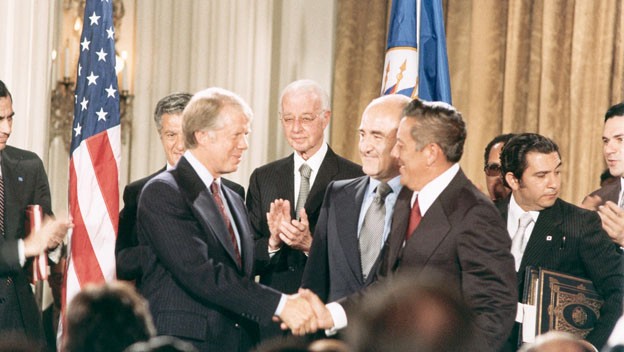
- 04 Jan 2025
In News:
Recently, Donald Trump threatened to take back the Panama Canal, calling the transfer treaty “foolish”.
Why Trump Called the Panama Canal Transfer 'Foolish'?
- Transit Fees:
- Trump expressed frustration over high transit fees imposed by the Panama Canal Authority (ACP) on U.S. vessels.
- In 2023, due to droughts affecting Lakes Gatun and Alhajuela (which are crucial for canal operations), the ACP reduced crossing slots by 36%, leading to an increase in transit fees for ships.
- Chinese Presence:
- Trump is also concerned about the growing Chinese influence in the Panama Canal region.
- In 2017, Panama became the first Latin American country to sign a Belt and Road Initiative (BRI) agreement with China, increasing Chinese investments.
- Hutchison Ports PPC, a subsidiary of a Hong Kong-based company, operates ports near the canal, raising concerns over China's influence on logistical operations and potential surveillance capabilities.
The Torrijos-Carter Treaties and Canal Transfer:
- Panama Canal Treaty (1977):
- The treaty transferred control of the Panama Canal from the U.S. to Panama by December 31, 1999.
- The U.S. would no longer control the canal, and Panama would assume full responsibility for its operation and defense.
- Permanent Neutrality Treaty (1977):
- Declared the canal to be neutral and open to vessels of all nations.
- U.S. Right to Defense: The U.S. retained the right to defend the neutrality of the canal and had priority passage in case of military emergencies.
Panama’s Response to Trump’s Criticisms:
- Defense of Transit Rates:
- President José Raúl Mulino rejected Trump’s claims, defending the transit fees as being in line with international standards and based on a transparent procedure.
- Sovereignty:
- Mulino emphasized Panama’s sovereignty over the canal, asserting that Panama’s control over the canal was non-negotiable. He categorically denied the presence of Chinese soldiers in the canal, stating that there would never be any.
China’s Response:
- China's Position:
- China's Foreign Ministry responded by emphasizing that the Panama Canal is a neutral passageway, a vital infrastructure for Panama and the global trade system.
- China affirmed its respect for Panama's sovereignty and denied any military presence in the canal area.
Implications and Future:
- Diplomatic Tensions:
- The issue of transit fees and foreign influence, particularly China's presence in the region, is likely to remain a point of diplomatic negotiation.
- Panama is expected to assert its sovereignty and seek international support to prevent any external interference in the canal’s operations.
- U.S. Influence:
- The U.S. might attempt to renegotiate terms related to the Panama Canal's operations, especially concerning transit fees and military rights, although Panama remains firm on maintaining control.
Torrijos-Carter Treaties:
- Significance:
- Panama Canal Treaty and Permanent Neutrality Treaty marked a major shift in U.S.-Latin America relations, ending U.S. control and restoring Panamanian sovereignty.
- The treaties also ensured the neutrality of the canal while maintaining U.S. military access in emergencies.
- Impact:
- The treaties were a symbol of Panama’s regained sovereignty and played a key role in stabilizing relations between the U.S. and Panama, as well as resolving tensions over control of the canal.
Quad 20th Anniversary
- 03 Jan 2025
In News:
Quad Foreign Ministers reaffirmed their commitment to a free, open, and peaceful Indo-Pacific. Marked the 20th anniversary of Quad cooperation, originally formed to respond to the 2004 Indian Ocean earthquake and tsunami.
Key Highlights:
- What is the Quad?
- A strategic forum of the US, Japan, India, and Australia aimed at regional security and economic cooperation in the Indo-Pacific region.
- Founded on shared principles of democracy, human rights, rule of law, and countering China's influence.
- Origins:
- Quad traces its origins to the 2004 Tsunami relief efforts.
- Formed formally in 2007, but Australia withdrew in 2008 due to regional tensions. It rejoined in 2017 following strengthened US-Australia ties.
- Commitment to Regional Security:
- Focus on countering China’s assertive behavior in the Indo-Pacific.
- Ensuring maritime security, countering illegal fishing, promoting infrastructure, and advancing economic cooperation.
- Key Initiatives:
- IPMDA: Real-time monitoring of maritime activities.
- MAITRI: Capacity-building for maritime security.
- Quad Fellowship: Funds graduate-level STEM education in member countries.
- Open RAN: Promoting secure 5G infrastructure.
- Cancer Moonshot: Focus on cervical cancer prevention.
- Military and Naval Cooperation:
- Malabar Exercises: Joint naval drills between India, Japan, the US, and Australia.
- ASEAN and Regional Cooperation:
- Emphasis on ASEAN's central role in the Indo-Pacific region.
- Support for the Pacific Islands Forum and the Indian Ocean Rim Association (IORA).
- Future Developments:
- India to host the next Quad Summit in 2025.
- Continued focus on sustainable regional development, scientific collaboration, and disaster relief efforts.
- Significance of the Quad for India:
- Strategic Importance:
- Provides a platform to counter China's assertive policies, especially in the South China Sea and the "String of Pearls" strategy.
- Aligns with India’s Act East Policy, enhancing ties with East and Southeast Asia.
- Maritime Security: Ensures freedom of navigation and counters illegal activities like piracy and illegal fishing in India’s maritime domain.
- Economic Opportunities:
- Strengthens cooperation on infrastructure projects and trade initiatives, such as the Blue Dot Network.
- Post-COVID, Quad may aid India in attracting manufacturing units shifting from China.
- Scientific and People-to-People Collaboration: Supports STEM education and enhances soft power diplomacy through academic and cultural exchanges.
H-1B Visa
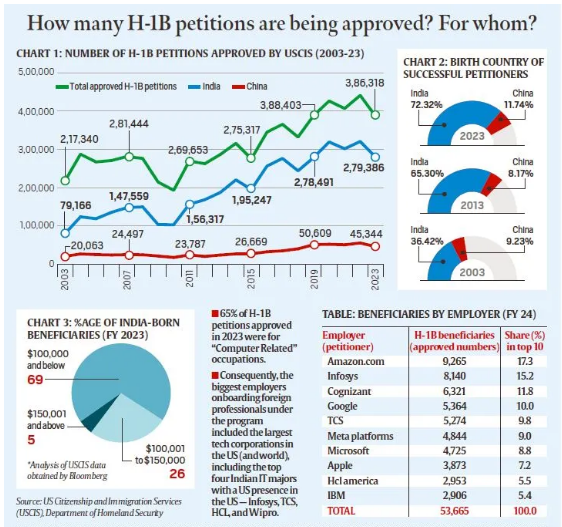
- 02 Jan 2025
In News:
In the weeks leading up to his return as US President, Donald Trump’s supporters are embroiled in a public dispute over skilled immigration and H-1B visas.
What is the H-1B Visa Program?
- Purpose and Overview:
- The H-1B visa is a non-immigrant visa allowing U.S. companies to employ foreign workers in specialized occupations like STEM (Science, Technology, Engineering, Mathematics) and IT, which require at least a bachelor’s degree.
- Introduced in 1990 to help U.S. employers fill positions when there’s a shortage of qualified domestic workers.
- It allows workers to stay in the U.S. for a maximum of six years, with the option to apply for permanent residence (Green Card) or leave for 12 months before reapplying.
- Annual Cap and Exemptions:
- 65,000 new visas are issued annually, with an additional 20,000 for those with a master’s degree or higher from a U.S. university.
- Certain petitions, such as for continuing employment or positions in higher education or nonprofit research, are exempt from the cap.
- Dominance of Indian Beneficiaries:
- Indians are the largest beneficiaries, accounting for over 70% of H-1B visa approvals annually since 2015, with China coming second at around 12-13%.
The Current Controversy
- Trigger for Debate:
- The controversy was sparked by Sriram Krishnan, a Chennai-born tech entrepreneur appointed as Donald Trump’s top AI adviser. His post on X (formerly Twitter) in November 2024, advocating for unlocking skilled immigration, led to backlash within Trump’s anti-immigration base.
- The Political Divide:
- Trump’s supporters, particularly from the MAGA (Make America Great Again) faction, voiced opposition to the H-1B visa program, arguing it undermines American workers and wages.
- This prompted pushback from pro-H-1B advocates like Elon Musk and Vivek Ramaswamy, who argue that the program is crucial for addressing the U.S.'s STEM talent shortages.
- Economic and Political Context:
- Immigration is a polarizing issue in the U.S., with a focus on low-skilled labor migration and its alleged effects on wages and job opportunities for American workers.
- Trump’s stance against low-skilled immigration echoes similar critiques about H-1B workers being employed at lower salaries in tech companies, which some claim depresses wages and reduces job opportunities for U.S. workers.
Criticisms of the H-1B Program
- Abuse of the System:
- Critics argue that companies exploit the H-1B program by hiring foreign workers, especially from India, at lower wages than American employees, particularly in tech industries.
- Elon Musk suggests that the program is “broken” and needs reform, proposing raising the minimum salary for H-1B workers to make it more expensive to hire overseas talent.
- Salary Disparities:
- Data from USCIS (U.S. Citizenship and Immigration Services) shows that 70% of H-1B petitions for Indian professionals in 2023 were for salaries below $100,000, while the median salary for U.S. IT professionals was $104,420.
- Impact on American Jobs:
- Critics argue that companies prefer to hire foreign workers at lower wages to save costs, despite the availability of qualified U.S. talent, thus taking away opportunities for American workers.
Support for the H-1B Program
- Filling the STEM Gap:
- Proponents, including Musk and Ramaswamy, argue that the H-1B visa is essential for filling the STEM skills gap in the U.S., given the global dominance of India and China in STEM fields.
- India and China lead the world in STEM graduates, with 2.55 million and 3.57 million, respectively, compared to the U.S. with 820,000.
- Proponents, including Musk and Ramaswamy, argue that the H-1B visa is essential for filling the STEM skills gap in the U.S., given the global dominance of India and China in STEM fields.
- Economic Benefits:
- The H-1B program helps U.S. companies access top global talent, boosting innovation and economic growth, especially in high-tech industries.
- Tech companies argue that without access to skilled foreign workers, they would struggle to fill critical positions in the technology sector.
India-Australia Economic Cooperation and Trade Agreement (Ind-Aus ECTA)
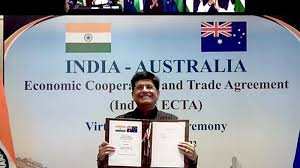
- 31 Dec 2024
In News:
The India-Australia Economic Cooperation and Trade Agreement (Ind-Aus ECTA) completes two years of remarkable success, driving mutual growth and showcasing the complementarity of both economies.
Key Achievements:
- Bilateral Merchandise Trade Surge:
- Trade increased from USD 12.2 billion (2020-21) to USD 26 billion (2022-23).
- Trade moderated slightly in 2023-24 to USD 24 billion, but exports from India to Australia grew by 14%.
- From April-November 2024, bilateral trade reached USD 16.3 billion.
- Preferential Import Utilization:
- Export utilization: 79%
- Import utilization: 84%
- Sectoral Growth:
- Textiles, chemicals, and agriculture sectors have seen significant growth.
- New export products: Gold studded with diamonds, turbojets.
- India’s imports: Metalliferous ores, cotton, wood products that fuel Indian industries.
- Geopolitical Strengthening:
- Enhanced relations in forums like Quad, Indo-Pacific Economic Framework (IPEF), Supply Chain Resilience Initiative (SCRI).
Key Features of the Agreement:
- Tariff Reductions:
- Australian goods: 85% tariff-free access to India (rising to 90% by 2026).
- Indian goods: 96% tariff-free access to Australia (rising to 100% by 2026).
- Access to Key Markets:
- India: Access to Australia's fast-growing market.
- Australia: Access to India's labor-intensive sectors like gems, jewelry, textiles, leather, furniture, food, agriculture.
- Services and IT:
- 135 sub-sectors covered in services.
- India gains market access in 103 sub-sectors with Most Favoured Nation (MFN) status in 31.
- Fast-tracked approval of medicines and elimination of double taxation for India's IT sector.
- Job Creation & Skill Exchange:
- Expected creation of 1 million jobs in India.
- Opportunities for Indian yoga teachers, chefs, and 100,000 students with post-study work visas.
Future Prospects:
- Comprehensive Economic Cooperation Agreement (CECA): Builds on ECTA to advance bilateral trade, with 10 formal rounds and ongoing inter-sessional discussions.
- Trade Target: Aim to reach AUD 100 billion in trade by 2030.
- Global Economic Impact: Strengthening the partnership will contribute to a more resilient and dynamic global economy, with deeper economic integration between India and Australia.
UN Approves New AU Force to Combat Al-Shabaab in Somalia
- 29 Dec 2024
In News:
- On January 19, 2024, the UN Security Council approved a new African Union (AU) force in Somalia to counter the Al-Shabaab terrorist group.
- The resolution was supported by 14 of 15 members, with the US abstaining due to concerns about funding.
- The new force will replace the African Union Transition Mission in Somalia (ATMIS) after its mandate ends on December 31, 2024.
New Mission - AUSSOM:
- The new mission is named African Union Support and Stabilization Mission in Somalia (AUSSOM).
- AUSSOM will continue supporting Somali forces in stabilizing the nation and combating terrorism.
- The mission's objective is to enhance security and stability in Somalia, addressing the challenges posed by Al-Shabaab and ISIL.
Mandate and Operations:
- AUSSOM allows for the deployment of up to 12,626 personnel, including 1,040 police officers, until June 2025.
- The force will focus on counterterrorism, maintaining security, and assisting the Somali government in stabilizing the country.
Financing:
- A hybrid funding approach will be used:
- 75% of the mission’s costs will be covered by the UN, and 25% will come from African Union and partner countries.
- The US raised concerns about the UN's disproportionate funding of the mission, which led to its abstention from voting.
Contributing Countries:
- Egypt has announced its participation in the new force.
- Burundi and Ethiopia will not be contributing troops to AUSSOM.
- Ethiopia has its own ongoing disputes with Somalia, particularly regarding its maritime deal with the breakaway Somaliland region.
Background on Somalia's Challenges:
- Somalia has faced decades of civil war, an insurgency by Al-Shabaab, and recurring climate disasters.
- The country is one of the poorest in the world, and its internal conflicts are exacerbated by clannism, which has fragmented its political and social structure.
Historical Context of Peace Missions in Somalia:
- Previous UN peacekeeping missions in Somalia (1992-1995) faced significant failures, notably the Battle of Mogadishu and the failure to prevent the 1993 massacre.
- The rise of Al-Shabaab in the mid-2000s has further escalated the conflict, and the mission of AUSSOM aims to address these continuing threats.
The Role of Clannism:
- Clannism has hindered the establishment of a unified government in Somalia, with clan rivalries leading to a lack of national cohesion.
- Clannism refers to the prevalence of clan-centric politics, where allegiance to clan and sub-clan interests often takes precedence over national cohesion. In Somalia, the major clans are Darod, Hawiye, Dir, and Rahanweyn.
Importance of AUSSOM:
- AUSSOM represents a strategic shift in the international approach to stabilizing Somalia, relying more on African-led initiatives for peace and security in the region.
Global Peacekeeping Operations:
- The UN peacekeeping mission has been active globally, with over 1 million personnel deployed across 70+ operations.
- Success stories like Sierra Leone (1999-2005) and Liberia (2003-2018) demonstrate the potential impact of well-executed peace missions, but past failures like in Somalia (1992-1995) and Rwanda (1994) underline the challenges faced.
India’s Contribution:
- India has contributed significantly to UN peacekeeping missions, deploying over 253,000 personnel in 49 operations since 1948.
- India’s contributions to missions in Somalia, Rwanda, Sierra Leone, and Sudan reflect its active role in global peacekeeping efforts.
China approves construction of World’s Largest Hydropower Dam on the Brahmaputra River
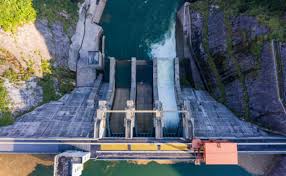
- 28 Dec 2024
In News:
China approved the construction of the world's largest dam, stated to be the planet's biggest infra project, on the Brahmaputra river in Tibet close to the Indian border, raising concerns in India and Bangladesh.
Key highlights:
Overview of the Project:
- Location: Lower reaches of the Yarlung Zangbo River (Tibetan name for Brahmaputra), where the river makes a U-turn in the Himalayan region before flowing into Arunachal Pradesh, India.
- Purpose:
- To support China’s carbon neutrality goals.
- To boost industrial growth and create jobs in Tibet.
- Expected to generate 300 billion kWh of electricity annually, over three times the capacity of the Three Gorges Dam in central China.
Significance:
- Scale: The dam is poised to be the world’s largest hydropower project, surpassing the Three Gorges Dam, and becoming the biggest infrastructure project globally, with an estimated cost of USD 137 billion.
- Engineering Challenges: The site is located in a seismic zone on the Tibetan plateau, prone to earthquakes, making construction and operational stability a major engineering challenge.
Concerns:
- Environmental Impact:
- Potential disruption to the local ecosystem and biodiversity.
- Risk of altering the river’s flow and course, which could impact agriculture and water resources downstream, particularly in India and Bangladesh.
- Geopolitical Risks:
- Water control: India and Bangladesh are concerned about China’s ability to control the water flow, with fears of China manipulating the flow to release excess water during conflicts, causing potential flooding in border areas.
- The project could also disrupt the hydrological cycle, affecting the region’s water availability, especially in Assam and Bangladesh.
Background:
- The Brahmaputra River is a trans-boundary river, flowing through China, India, and Bangladesh. Known by different names in these countries, it plays a vital role in the livelihoods of millions of people.
- China has already initiated hydropower generation on the upper reaches of the Yarlung Zangbo, with plans for additional projects upstream.
India-China Cooperation:
- China and India have an Expert Level Mechanism (ELM) in place since 2006 to manage trans-boundary river issues, under which China shares hydrological data with India, especially during the flood season.
- India is also constructing its own hydropower projects on the Brahmaputra in Arunachal Pradesh.
Potential Outcomes:
- Energy Generation: The dam could significantly contribute to China’s energy needs, providing a substantial amount of renewable energy.
- Regional Tensions: The dam’s construction may escalate tensions between China, India, and Bangladesh due to the control over water resources and environmental impact concerns.
Eastern Maritime Corridor (EMC)
- 19 Dec 2024
In News:
In mid-2024, India surpassed China as the largest importer of Russian oil. This milestone has been accompanied by the operationalization of a new maritime route, the Eastern Maritime Corridor (EMC), which connects Chennai in India to Vladivostok in Russia. The new sea route is significantly reducing both shipping times and costs, facilitating smoother commodity trade between the two countries, particularly crude oil shipments.
The Eastern Maritime Corridor (EMC)
The EMC, covering a distance of about 5,600 nautical miles, has reduced the shipping time between India and Russia’s Far East by up to 16 days. The Chennai-Vladivostok route now takes just 24 days, compared to over 40 days using the traditional St. Petersburg-Mumbai route. This reduction in transit time makes it a highly efficient route for transporting goods such as crude oil, coal, LNG, fertilizers, and other commodities. Additionally, this new corridor supports India’s maritime sector and aligns with the country’s broader vision for maritime growth and regional strategic engagement.
Key Features of the EMC:
- Efficiency and Cost Savings: The route cuts shipping time and distance, reducing costs associated with longer transit periods. For example, a ship traveling between Vladivostok and Chennai now takes only about 12 days at cruising speed, compared to the traditional route's 40+ days.
- Strategic Importance: Vladivostok is Russia’s largest Pacific port, and the corridor strengthens India's strategic presence in the region. This maritime route bypasses traditional chokepoints like the Suez Canal, offering faster, more direct access to key markets.
- Diversification of Trade: Besides crude oil, the EMC facilitates the transportation of coal, LNG, fertilizers, and metals, diversifying India's trade portfolio with Russia. It also helps maintain supply chains for essential goods.
- Boosting India’s Maritime Sector: The corridor supports India’s Maritime Vision 2030, which aims to enhance the efficiency and reach of India's maritime trade, a sector responsible for over 70% of the country’s trade value.
Economic and Strategic Impact:
- The new Eastern Maritime Corridor is particularly significant for India’s energy needs. As the world’s third-largest consumer of crude oil, India imports over 85% of its crude oil demand. The growing imports of Russian crude, especially the Urals grade, are crucial for securing India’s energy future. Additionally, Russia’s competitive pricing on crude, coupled with the savings on shipping costs through the EMC, makes Russian oil even more attractive.
- Beyond the economic benefits, the EMC also supports India’s broader strategic goals, including strengthening ties with Russia, a key partner in defense, nuclear cooperation, and regional geopolitics. The closer maritime links also help counterbalance China's growing dominance in the Pacific region, aligning with India's Act Far East Policy and enhancing trade and diplomatic engagement with East Asia and Russia.
Other Key Maritime Corridors Relevant to India:
- International North-South Transport Corridor (INSTC): A 7,200 km multimodal route linking the Indian Ocean with Russia, offering alternative trade routes to Europe and Central Asia.
- India-Middle East-Europe Economic Corridor (IMEC): A recent project announced at the G20 Summit, which connects India, the Middle East, and Europe via rail, road, and maritime links, fostering greater regional integration.
- Northern Sea Route (NSR): A 5,600 km Arctic route offering shorter transit times between the Barents and Kara Seas and the Bering Strait, gaining importance due to growing imports of Russian energy resources.
In conclusion, the Eastern Maritime Corridor is reshaping India-Russia trade dynamics, boosting economic ties and strategic cooperation between the two nations. By facilitating faster and cheaper transportation, the EMC is not only beneficial for trade in crude oil but also for a range of other commodities, positioning India as a key player in the evolving global trade network.
Schengen Zone Membership
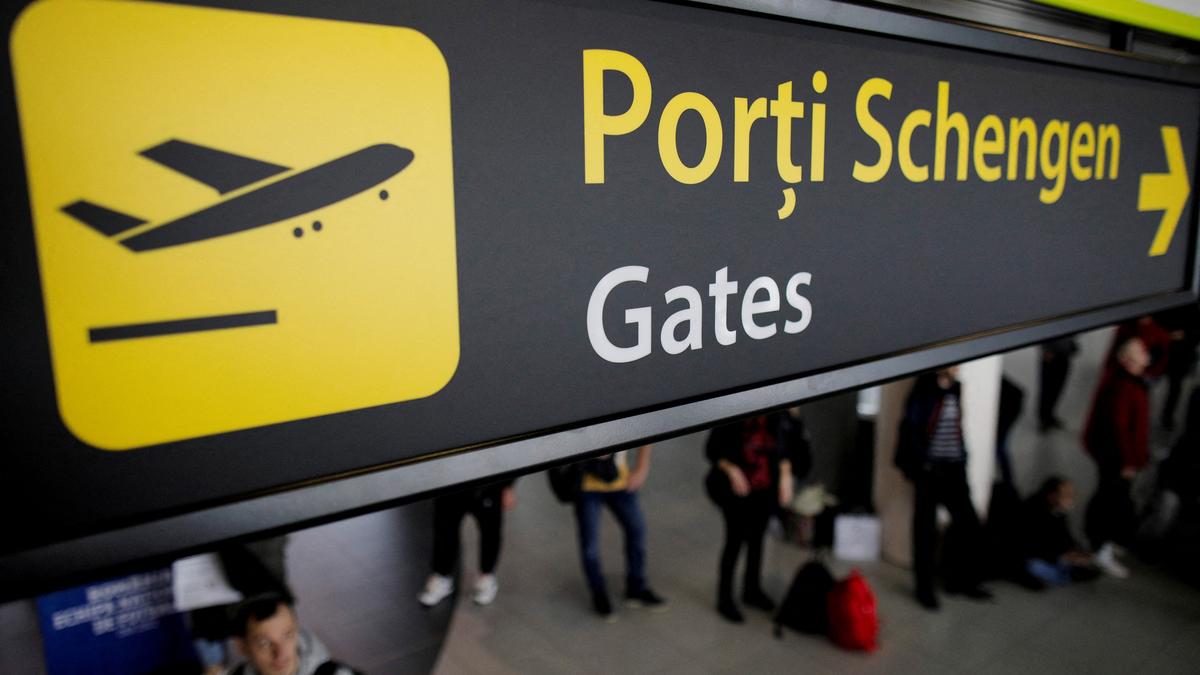
- 18 Dec 2024
In News:
Recently, the European Union (EU) cleared Bulgaria and Romania for full membership in the Schengen Zone, effective January 1, 2025. This marks the end of a 13-year wait for these Eastern European nations, which joined the EU in 2007.
Key Highlights:
- Schengen Integration: Until now, Bulgaria and Romania were partially integrated into the Schengen Zone, with air and sea travel without border checks since March 2024. However, land border controls were still in place due to Austria's objections, mainly due to concerns over migration and border security.
- Austria's Shift: Austria had blocked full entry for years but finally lifted its veto on December 9, 2024, after a border protection package was agreed upon. This package includes joint border guard deployment at the Bulgarian-Turkish border and temporary land border controls for six months.
Schengen Zone Details:
- What is the Schengen Zone?
- Created by the Schengen Agreement (1985) and the Schengen Convention (1990), it is the world’s largest area without internal border controls, allowing free movement across most EU countries and some non-EU countries. It currently includes 29 countries (25 EU states and 4 non-EU countries: Iceland, Liechtenstein, Norway, and Switzerland).
- Key Features:
- Free Movement: Over 425 million people can travel freely within the zone without border checks.
- Uniform Visa Policy: Short-term stays of up to 90 days are allowed for tourists and business travelers from outside the Schengen Area.
- Cross-Border Cooperation: The Schengen Information System (SIS) facilitates security and border management by sharing critical data between countries.
- Temporary Border Controls: Countries can temporarily reintroduce border controls for security reasons, after notifying other member states and the European Commission.
Bulgaria and Romania
- Bulgaria:
- Capital: Sofia
- Location: Southeastern Europe, bordered by the Black Sea, Romania, Turkey, Greece, North Macedonia, and Serbia.
- Political System: Parliamentary Republic
- Romania:
- Capital: Bucharest
- Location: Bounded by Ukraine, Moldova, Black Sea, Bulgaria, Serbia, and Hungary.
- Political System: Semi-Presidential Republic
Implications of Full Schengen Membership:
- Security and Unity: Romania and Bulgaria's full integration into the Schengen Zone is seen as a boost to both EU security and unity. It solidifies the EU's commitment to free movement while enhancing border security across Europe.
- Impact on Migration: With Bulgaria and Romania’s full membership, the EU’s border management system will be more integrated, helping to address ongoing migration challenges.
Exercise Agni Warrior
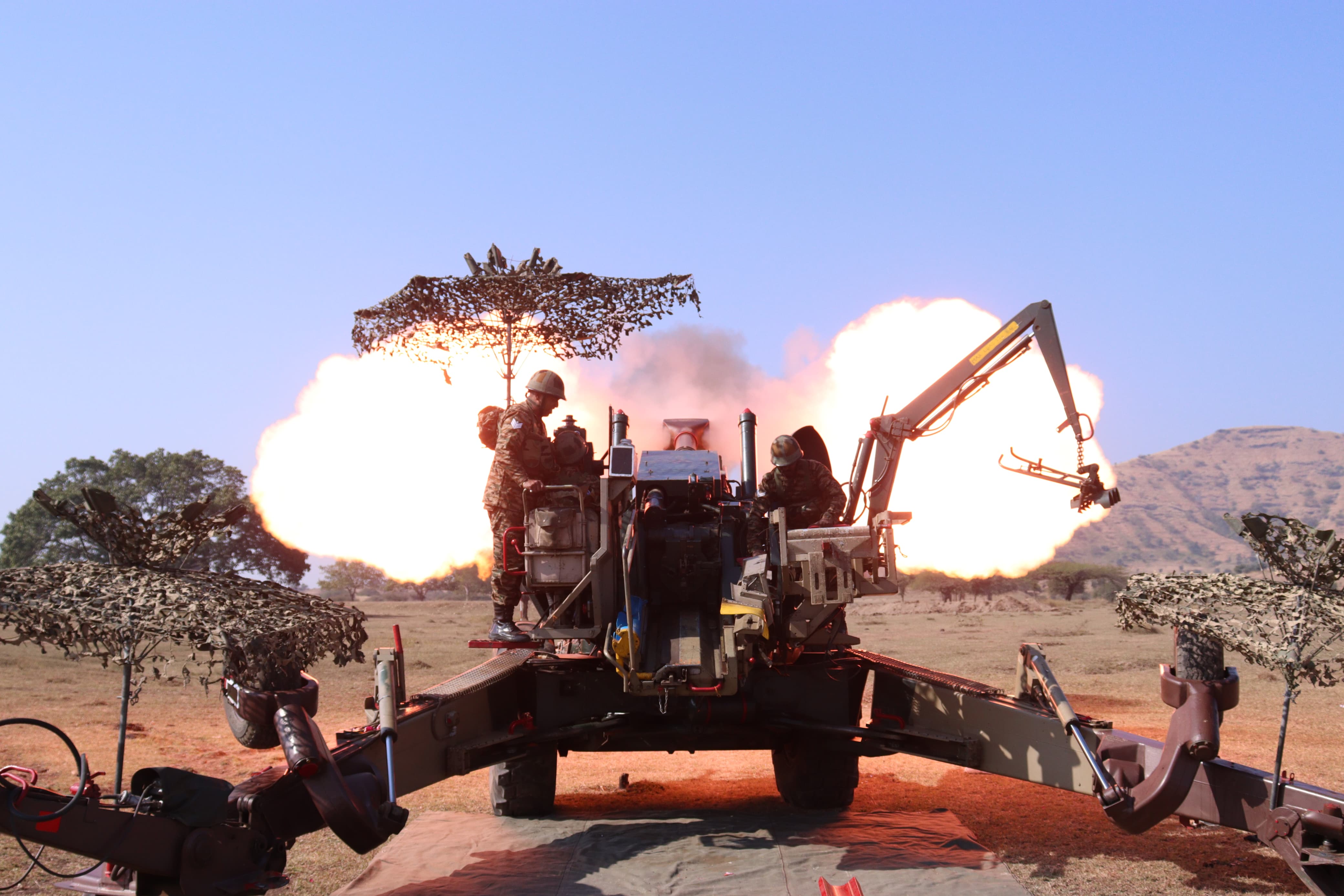
- 17 Dec 2024
In News:
The 13th edition of Exercise Agni Warrior (XAW-2024), a joint military drill between the Indian Army and the Singapore Armed Forces (SAF), concluded successfully at the Field Firing Ranges, Devlali, Maharashtra. The exercise focused on enhancing mutual understanding and interoperability between the two nations’ artillery units.
Key Facts:
- Participating Nations: India and Singapore
- Location: Field Firing Ranges, Devlali, Maharashtra
- Participants:
- 182 personnel from the Singapore Artillery
- 114 personnel from the Indian Army's Regiment of Artillery
- Objective: To maximize mutual understanding of drills and procedures for joint operations under the UN Charter, particularly in firepower planning and execution, utilizing advanced artillery technologies.
- Historical Context: The exercise began in 2004 under a bilateral agreement between India and Singapore and has evolved over the years, now marking 20 years of cooperation.
Purpose and Highlights:
The exercise aimed to reinforce the long-standing defense relationship between India and Singapore, focusing on:
- Joint Firepower Planning and Execution: Both forces demonstrated the use of New Generation Artillery Equipment, enhancing their firepower coordination.
- Enhancing Interoperability: The exercise emphasized seamless coordination between the two armies to operate as a multinational force under the UN Charter, addressing global security challenges.
- Knowledge Sharing: Personnel from both armies exchanged expertise on advanced artillery tactics, fostering a deeper understanding of each other's military capabilities.
- Technological Integration: Both sides integrated cutting-edge technologies, allowing the exchange of best practices in the use of artillery systems.
Key Objectives of XAW-2024:
- Enhanced Interoperability: To ensure smooth coordination in joint operations, fostering the ability to respond to regional security threats.
- Firepower and Coordination Techniques: Sharing expertise on artillery planning, coordination, and execution.
- Advanced Equipment Use: Testing and demonstrating modern artillery systems in joint operations, ensuring both forces are prepared for contemporary warfare.
Structure and Execution:
The exercise was structured to include pre-exercise training, field operations, and a post-exercise evaluation:
- Pre-Exercise: Both armies engaged in interactive sessions to familiarize themselves with each other's artillery tactics and advanced systems.
- Field Operations: Simulated combat scenarios tested joint firepower execution, emphasizing real-time problem-solving and decision-making under pressure.
- Post-Exercise Review: A thorough analysis identified areas for improving joint operations and coordination.
Strategic Significance:
- Strengthening Bilateral Ties: Agni Warrior reinforces the defense partnership, facilitating joint operations that support regional security.
- Regional Stability: The exercise underscores the commitment of both nations to peace and security in the Indo-Pacific region.
- Capacity Building: Both Indian and Singaporean forces gained exposure to sophisticated firepower planning and gained operational readiness for future deployments.
India-Australia CCEA
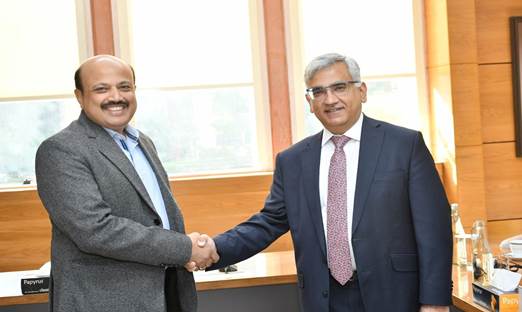
- 15 Dec 2024
In News:
The 3-day stocktake meeting took place in New Delhi, marking a significant step in strengthening the India-Australia trade and strategic partnership.
Key Highlights:
- Key Discussion Areas:
- Trade in goods and services.
- Mobility, agri-tech cooperation, and market access.
- Focus on ensuring the CECA delivers balanced benefits for both nations.
- Food security concerns and market access modalities aligned with India’s goals.
- Background on Negotiations:
- The discussions in New Delhi were a continuation of the 10th round of negotiations held in Sydney (August 2024).
- Both sides aimed to outline a path forward for the early conclusion of the CECA.
- Importance of CECA:
- CECA is a Free Trade Agreement (FTA) aimed at eliminating tariffs and liberalizing services sectors to enhance business opportunities and cooperation.
- It addresses five key areas: Goods, Services, Digital trade, Government procurement & **Rules of Origin/Product Specific Rules
- New areas under discussion include: Competition policy, MSMEs, Gender, Innovation, Agri-tech, Critical minerals & Sports
- Historical Context:
- CECA negotiations began in May 2011, were suspended in 2016, and resumed in September 2021.
- The India-Australia Economic Cooperation and Trade Agreement (ECTA) was signed in 2022, serving as a foundational agreement and a precursor to CECA.
- Trade Statistics (2023-24):
- India's imports from Australia: $16.2 billion.
- India's exports to Australia: $8 billion.
- Trade has grown significantly, with India being Australia’s 5th-largest trading partner.
- Regional Cooperation Initiatives:
- India and Australia are partners in several regional initiatives:
- Indo-Pacific Economic Framework for Prosperity (IPEF)
- Trilateral Supply Chain Resilience Initiative (SCRI) with Japan.
- India and Australia are partners in several regional initiatives:
- India's CECA with Other Countries:
- India has similar CECA agreements with several nations, including: Singapore, Malaysia, Thailand & New Zealand
- Future Prospects:
- The stocktake discussions have paved the way for further cooperation in areas such as agricultural innovation, market access, and supply chain resilience.
- Both nations are optimistic about the early conclusion of the CECA and the broader economic partnership.
This recent stocktake visit represents a significant step in the ongoing efforts to solidify trade ties and deepen economic cooperation between India and Australia under the framework of the Comprehensive Economic Cooperation Agreement.
Desert Knight Air Combat Exercise
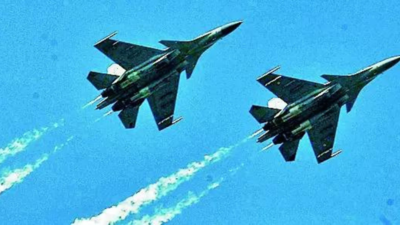
- 14 Dec 2024
In News:
India, France and UAE recently kicked off a major air combat exercise called “Desert Knight” over the Arabian Sea, strengthening trilateral defence cooperation and enhancing military interoperability amid the ongoing geopolitical churn.
Key Highlights:
- What It Is: A trilateral air combat exercise aimed at improving military interoperability and enhancing combat readiness among the participating nations.
- Nations Involved: India, France, and the UAE.
- Location: Conducted over the Arabian Sea, approximately 350-400 km southwest of Karachi.
- Aim of the Exercise:
- To strengthen trilateral defence cooperation among the three nations.
- To enhance combat skills and military interoperability of the air forces involved.
- Details of the Exercise:
- Duration: The exercise lasts for three days.
- The exercise involves large force engagement and intensive combat maneuvers in a realistic operational environment.
- Aircraft Involved:
- India: Deployed Sukhoi-30MKIs, Jaguars, IL-78 mid-air refuellers, and AEW&C (Airborne Early Warning and Control) aircraft from bases like Jamnagar.
- France: Deployed Rafale jets and other aircraft from Al Dhafra airbase.
- UAE: Deployed F-16 jets and other aircraft from Al Dhafra airbase.
Strategic Significance:
- The exercise is part of India’s efforts to build military interoperability with nations in the Persian Gulf region and strengthen defence ties with France and the UAE.
- Enhances combat readiness and strengthens cooperation against both traditional and non-traditional threats.
- Reflects the geopolitical shift and growing military cooperation in the Indo-Pacific region, especially in the context of China’s expansionist activities.
- Trilateral Framework: India, France, and the UAE launched a trilateral framework in 2022, focusing on areas like defence, technology, energy, and environment.
- Previous Exercises: In addition to Desert Knight, the countries also conducted their first trilateral maritime exercise in June 2023 to enhance cooperation in maritime security.
Broader Defence Relations:
- India-France: Long-standing strategic partnership with regular joint exercises like Shakti (army), Varuna (navy), and Garuda (air force).
- India-UAE: The defence relationship has grown significantly in recent years, with regular professional exchanges, combat exercises, and staff talks. India participates in the Desert Flag exercise at Al Dhafra airbase annually.
Switzerland Suspends MFN Clause in Tax Treaty with India
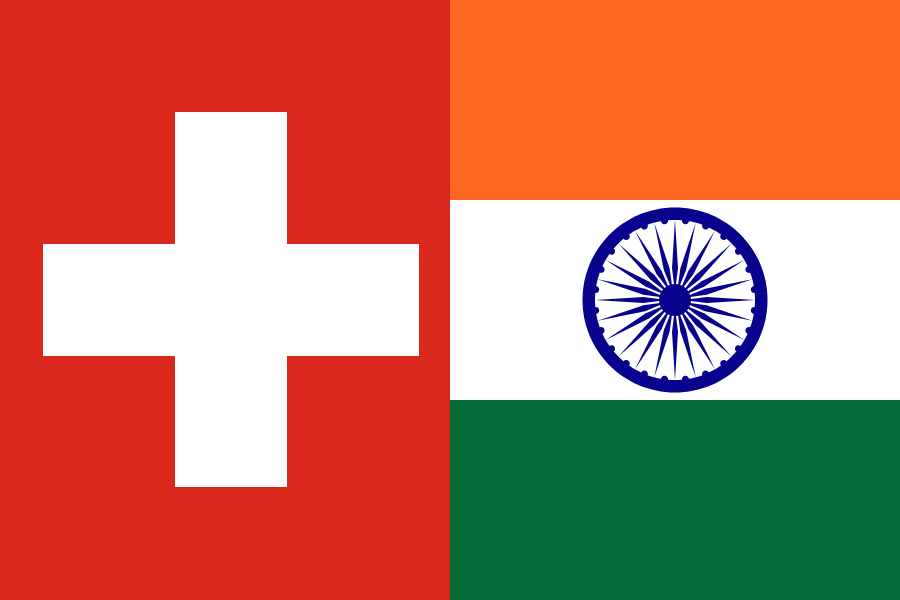
- 14 Dec 2024
In News:
Switzerland scraps MFN status to India, dividend income to face higher tax
Key Highlights:
- Reason for Suspension:
- The suspension follows a 2023 Supreme Court ruling in India, which clarified that the MFN clause in tax treaties is not automatically triggered when a country joins the OECD if the tax treaty with that country was signed before its OECD membership.
- The Court ruled that the Double Taxation Avoidance Agreement (DTAA) cannot be enforced unless it is notified under the Income-Tax Act, 1961.
- Details of the Suspension:
- Starting January 1, 2025, Switzerland will suspend the Most Favoured Nation (MFN) clause in its DTAA with India.
- The MFN clause was part of the India-Switzerland DTAA signed in 1994.
Impact of the Suspension:
- Higher Tax Liabilities for Indian Companies: Withholding tax on dividends from Switzerland will increase from 5% to 10% for Indian companies.
- Effects on Swiss Investments in India: Swiss companies will continue to face a 10% withholding tax on dividends from India, as per the India-Switzerland DTAA.
- Potential Re-evaluation of MFN Clauses by Other Countries: Other countries may reconsider how the MFN clause is applied in their tax treaties with India, following this development.
- No Change for Other Benefits: Other DTAA benefits and investments related to the European Free Trade Association (EFTA) will remain unaffected.
Most Favoured Nation (MFN) Clause Overview:
- Definition: The MFN principle ensures that favorable trading terms given by one WTO member country to another are extended to all other WTO members, promoting non-discrimination.
- Purpose: To ensure equal treatment among trading nations by preventing discrimination, and to promote fair trade and equitable market access.
- Key Features:
- Equal treatment in tariffs, quotas, and trade barriers.
- Members must extend the best terms to all other WTO members.
- Origin: The MFN principle was established after World War II as a cornerstone of the multilateral trading system under the WTO.
- Exceptions:
- Bilateral or regional trade agreements.
- Special access granted to developing countries.
- Non-WTO members (e.g., Iran, North Korea) are not bound by MFN rules.
- Removal of MFN:
- There is no formal procedure under the WTO to suspend MFN status.
- Countries are not obligated to notify the WTO when suspending or removing MFN treatment.
Recent Development:
- From January 1, 2025, Indian companies will face higher withholding tax (10%) on income sourced from Switzerland, as a result of the MFN clause suspension.
China Plus OneStrategy
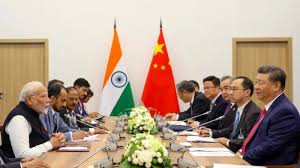
- 07 Dec 2024
In News:
India had ‘limited success’ in capturing ‘China Plus One’ opportunity.
Limited Success in ‘China Plus One’ Strategy:
- India has had limited success in attracting multinational companies looking to diversify their supply chains under the ‘China Plus One’ strategy, aimed at reducing dependence on China.
- Vietnam, Thailand, Cambodia, and Malaysia have been more successful in benefiting from this shift due to factors like lower labor costs, simplified tax laws, and proactive Free Trade Agreements (FTAs).
Geopolitical Context - US-China Trade Conflict:
- The fresh US-China trade conflict involves tit-for-tat restrictions, with the US imposing export controls on Chinese high-tech goods and China retaliating by banning key materials.
- India's Position: As a "connecting economy" not directly aligned with the US or China, India stands to benefit from trade diversions arising from this conflict.
Opportunities for India Amid Trade Diversion:
- NITI Aayog CEO BVR Subrahmanyam highlighted opportunities arising from trade diversion, particularly due to US trade policies under President-elect Donald Trump, which could potentially create an economic boom for India.
- India has opportunities to capture a larger share of the global trade, especially in sectors where it currently holds a small market share (less than 1% of world trade in many areas).
Trade Policy Challenges:
- Steel Import Duty Proposal: NITI Aayog Vice Chairperson cautioned against imposing high duties on steel imports, arguing that it could reduce India’s competitiveness and lead to negative consequences for domestic industries reliant on steel.
- The global steel market has been affected by oversupply from China, with India’s iron and steel exports experiencing a sharp decline in Q1 FY25 due to weak domestic demand.
Impact of US Tariffs:
- A general 10% tariff on all imports by the US would not have a major negative impact on India.
- However, a 60% tariff on China could open significant opportunities for India, especially in sectors where it competes directly with China. There might be short-term shocks but long-term benefits.
Ongoing Trade Fragmentation:
- The report noted that trade fragmentation is driven by strict export controls on Chinese goods, implemented by the US to curb China’s growth, particularly in high-tech sectors.
Sectoral Competitiveness:
- While China remains India's key competitor across most export sectors, countries like Brazil, Indonesia, and South Africa generally lag behind India.
- Malaysia and Thailand outperform India in select sectors such as electrical machinery.
Challenges in the EU Market - Carbon Border Adjustment Mechanism (CBAM):
- Iron and steel industry facehigh exposure under the CBAM for EU exports, with tariffs potentially rising by 20-35% due to carbon emissions-related regulations.
- Indian firms could experience higher compliance costs due to the requirement for detailed emissions reporting, impacting competitiveness in the European market.
India and Slovenia Announce Five-Year Collaboration Plan
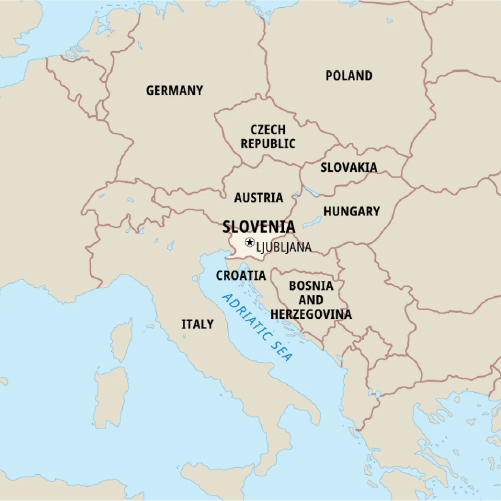
- 06 Dec 2024
In News:
India and Slovenia have announced a five-year scientific collaboration plan (2024-2029) to deepen ties in research and technology. The Programme of Cooperation (PoC) was finalized during a meeting between Dr. Jitendra Singh (Indian Minister for Science and Technology) and Dr. Igor Papi? (Slovenian Minister for Higher Education, Science, and Innovation) on December 5, 2024.
Key Highlights:
- Joint Research Focus: The collaboration will focus on hydrogen technologies, sustainable innovation, AI, renewable energy, and smart cities.
- Over 20 Successful Projects: More than 20 joint initiatives in sectors like health, AI, and energy have already been implemented.
- Future Areas of Collaboration: New research projects will be launched, further strengthening academic exchanges and scientific networks between the countries.
- Hydrogen Technologies: Both ministers emphasized hydrogen's role in global energy sustainability, marking it as a critical area for future research.
- Historical Partnership: This builds on a partnership dating back to a 1995 agreement, with initiatives like the Joint Working Group on Scientific and Technological Cooperation.
What is the Programme of Cooperation (PoC)?
- The Programme of Cooperation (PoC) is a formal agreement between two countries designed to enhance collaboration in specific sectors, such as science, technology, and innovation.
- In the case of India and Slovenia, the PoC for the period 2024–2029 aims to promote joint research efforts, academic exchanges, and partnerships in emerging fields like hydrogen technologies, sustainable innovation, and other transformative areas.
- The PoC serves as a structured framework for long-term cooperation, enabling both nations to develop networks among scientists and researchers while addressing global challenges through collaborative innovation.
Donald Trump's Threat on BRICS and US Dollar

- 05 Dec 2024
In News:
- US President-elect Donald Trump threatens BRICS countries (Brazil, Russia, India, China, South Africa) with 100% import tariffs if they create a new currency or support an alternative to the US dollar as the global reserve currency.
- Trump emphasizes that attempts to undermine the US dollar’s dominance will face economic retaliation, asserting the US economy won’t tolerate such moves.
Background
- Weaponization of the Dollar: The US has increasingly used its financial influence to impose sanctions (e.g., Russia, Iran) and cut off countries from systems like SWIFT (Society for Worldwide Interbank Financial Telecommunication).
- Concerns: Countries are concerned about their vulnerability to US monetary policies, which can have global impacts (e.g., rising US interest rates causing economic instability in other countries).
Efforts to Reduce Dependence on the US Dollar
- BRICS Countries’ Initiatives:
- Russian President Putin criticizes the weaponization of the dollar.
- Brazil's President Lula advocates for a new BRICS currency to increase payment options and reduce vulnerabilities.
- India's Steps:
- The Reserve Bank of India (RBI) allows invoicing and payments in Indian rupees for international trade (since 2022), particularly with Russia.
- Prime Minister Modi supports increasing financial integration and cross-border trade in local currencies within BRICS.
- External Affairs Minister Jaishankar emphasizes the importance of mutual trade settlements in national currencies.
- China-Russia Trade: Over 90% of trade between Russia and China is settled in rubles and yuan due to their more balanced trade relations.
Internationalization of the Indian Rupee
- RBI's Role:
- In July 2022, RBI allowed export/import settlements in rupees, starting with Russia in December 2022.
- More than 19 countries, including the UK and UAE, have agreed to settle trade in rupees.
- Challenges:
- The Indian rupee currently accounts for only 1.6% of global forex turnover.
- India’s trade imbalance with Russia limits the effective use of rupee reserves.
- Indian banks are cautious due to the risk of US sanctions.
Global Trends in Currency Diversification
- Multipolarity in Finance: Emerging economies like China, India, and Brazil are advocating for a more decentralized financial system, moving away from US dominance.
- Declining Dollar Share: The US dollar’s share of global reserves is gradually decreasing, with non-traditional currencies like the Chinese yuan gaining ground.
Risks of Moving Away from the US Dollar
- Chinese Dominance: Concerns about increasing Chinese economic influence, especially within BRICS, as China pushes for more use of the yuan in trade.
- Liquidity and Volatility Issues: Alternatives to the dollar may face challenges like lower liquidity and increased exchange rate volatility.
- Implementation Challenges: Countries, especially those with trade imbalances, find it difficult to adopt local currencies for international trade.
Potential Impact of 100% US Tariff on BRICS Imports
- Global Trade Dynamics: A blanket tariff would likely encourage deeper intra-BRICS trade and accelerate the move towards de-dollarization.
- Impact on the US: Higher import costs for American consumers and potential trade diversification to third countries could hurt the US economy without revitalizing domestic manufacturing.
- Retaliation: BRICS countries might retaliate with tariffs on US goods, escalating trade tensions.
India’s Strategic Approach
- Diplomatic Engagement: India should clarify to the US that diversifying trade mechanisms is not anti-American but seeks financial stability and multipolarity.
- Leadership Role in BRICS: India should support financial reforms within BRICS that align with its interests while maintaining strong ties with the US.
- Promotion of Digital Currency: India should accelerate its Central Bank Digital Currency (CBDC) and strengthen international platforms like UPI to enhance its global financial presence.
India-Cambodia Joint Military Exercise CINBAX
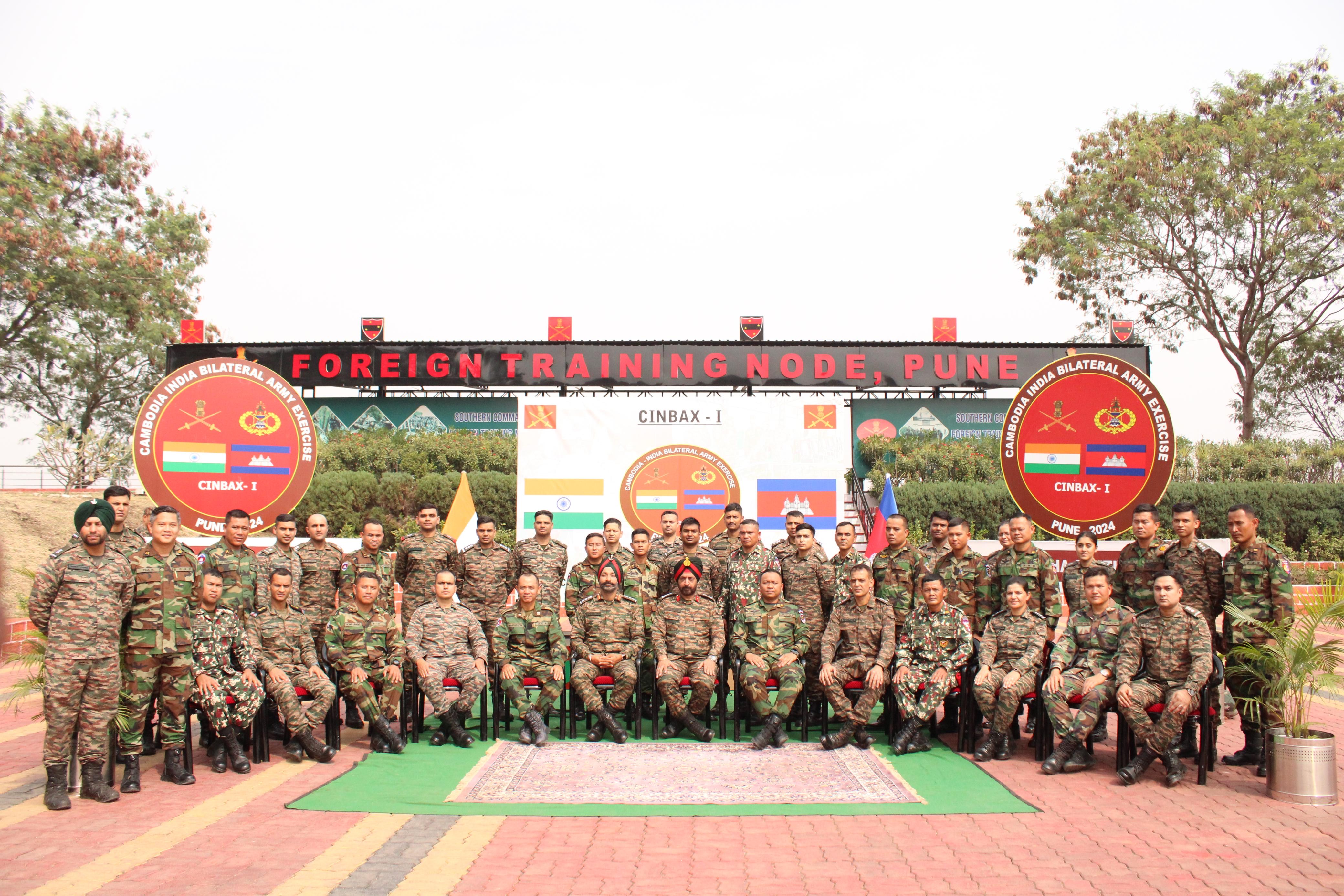
- 01 Dec 2024
In News:
The first edition of CINBAX (Counter-Terrorism Counter-Bio-Terrorism and Intelligence Operations Exercise) was launched on December 1, 2024, at the Foreign Training Node, Pune.
Key Details:
- Participants: 20 personnel from each side – the Indian Army and the Cambodian Army – focusing on enhancing cooperation for UN peacekeeping operations.
- Objective:
- Enhancing Trust and Interoperability: CINBAX aims to foster mutual trust, build camaraderie, and improve operational efficiency between the two armies in conducting peacekeeping operations under UN guidelines.
- Focus Areas: Joint Counter-Terrorism (CT) operations, Intelligence, Surveillance, and Reconnaissance (ISR), cyber warfare, logistics, casualty management, and disaster relief operations.
- Phases of the Exercise:
- Phase I: Orientation for Counter-Terrorism operations in the context of UN peacekeeping missions.
- Phase II: Conduct of tabletop exercises to simulate and plan response scenarios.
- Phase III: Finalization of plans and review of lessons learned, focusing on operational strategies and tactical decision-making.
- Key Topics Covered:
- Discussions on setting up a Joint Training Task Force for intelligence, surveillance, and reconnaissance.
- Exploring cyber warfare, hybrid warfare, and unconventional tactics.
- Strategies for managing logistics, casualties, and coordination during Humanitarian Assistance and Disaster Relief (HADR) operations.
- Promotion of Indigenous Defence Equipment:
- The exercise will showcase Indian-made weapons and defence equipment, supporting India’s commitment to Atmanirbhar Bharat (self-reliance in defence production).
- Objective: To highlight India's advanced military technology and indigenous defence capabilities.
- Significance for India-Cambodia Relations:
- The exercise strengthens military ties between India and Cambodia, contributing to improved cooperation in regional peacekeeping efforts.
- CINBAX marks a significant milestone in India-Cambodiadefence collaboration and sets the stage for future joint operations.
India-Cambodia Bilateral Relations
- Historical Context:
- India and Cambodia share strong religious, cultural, and linguistic ties, with Hindu rituals influencing Cambodian culture and Sanskrit and Khmer sharing common words.
- Diplomatic relations were established in 1952, even before Cambodia's independence from France.
- Key Developments:
- 1954: Prime Minister Jawaharlal Nehru visited Cambodia, initiating strong diplomatic ties, particularly during the Non-Aligned Movement.
- Post-1970s: India played a pivotal role in Cambodia's recovery from the Khmer Rouge regime. India was the first democratic country to recognize the Heng Samrin regime in 1981 and contributed to Cambodia's political reconciliation.
- 1980s: India facilitated dialogue for the Paris Peace Accord and contributed to the success of UNTAC elections in 1993.
- Strategic and Economic Cooperation:
- Defence: Enhanced cooperation in defence capacity building, military training, and infrastructure development.
- Trade: India exports pharmaceuticals, bovine meat, automobiles, and leather products to Cambodia. In return, Cambodia exports organic chemicals, apparel, and footwear to India.
- Mekong-Ganga Cooperation (MGC): Established in 2000, MGC includes Cambodia and aims to enhance cooperation in sectors like trade, education, tourism, and cultural exchanges.
- Recent Collaboration:
- India has extended financial assistance for infrastructure projects in Cambodia, especially in restoring and conserving cultural heritage sites like Angkor Wat.
- MoUs signed in bilateral cooperation, cultural exchanges, and development projects highlight the growing India-Cambodia strategic partnership.
U.N. Peacebuilding Commission
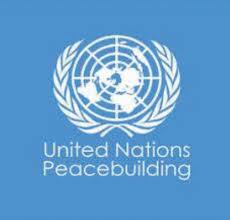
- 30 Nov 2024
In News:
India has been re-elected to the United Nations Peacebuilding Commission (PBC) for the term 2025–2026, continuing its strong commitment to global peace and stability.
UN Peacebuilding Commission (PBC)
It is an advisory body established by the UN General Assembly and UN Security Council in 2005. It is tasked with supporting peace efforts in conflict-affected countries by advising and recommending strategies for post-conflict recovery and long-term peacebuilding.
Composition of PBC:
- The PBC is composed of 31 member states, elected from the General Assembly, Security Council, and Economic and Social Council.
- It includes key financial and troop-contributing countries, which play a central role in shaping global peacebuilding initiatives.
Key Mandates of the PBC
- Coordination of Resources and Strategies:The Commission brings together all relevant actors to propose integrated strategies for post-conflict recovery and peacebuilding.
- Reconstruction and Development:It focuses on rebuilding conflict-affected countries through institution-building and supporting sustainable development efforts.
- Improving Coordination:The PBC ensures better coordination within and outside the UN, develops best practices, and secures predictable financing for early recovery initiatives.
- Sustaining Peace:The Commission promotes sustained international attention to peacebuilding efforts and offers political support to countries emerging from conflict, with their consent.
- Integrated Approach:The PBC advocates for an integrated approach that links security, development, and human rights as interrelated and mutually reinforcing.
- Bridging Role:It serves as a platform to connect UN bodies, Member States, national authorities, civil society, and other stakeholders, sharing good practices in peacebuilding.
India’s Contributions to UN Peacebuilding and Peacekeeping
India has been at the forefront of UN peacebuilding initiatives due to its long-standing commitment to international peace and stability.
- Largest Contributor of Personnel:India is one of the largest contributors of uniformed personnel to UN Peacekeeping. Currently, around 6,000 Indian military and police personnel are deployed across multiple missions in Abyei, Central African Republic, Cyprus, Democratic Republic of Congo, Lebanon, Middle East, Somalia, South Sudan, and Western Sahara.
- Sacrifices in Service:India holds the tragic distinction of having lost over 180 peacekeepers, the highest number from any troop-contributing nation. These sacrifices reflect India's enduring commitment to global peace.
- Financial Support:India contributes to the Peacebuilding Fund, the primary financial instrument for conflict prevention and peacebuilding, which supports countries transitioning from conflict to peace.
- Championing South-South Cooperation:India has actively promoted South-South cooperation, a model for post-conflict recovery that emphasizes shared learning and capacity-building among developing nations.
- Women in UN Peacekeeping:India has led efforts for gender parity in UN peacekeeping. In 2007, India became the first country to deploy an all-women contingent to a UN peacekeeping mission. It has since deployed Female Engagement Teams (FETs) and Female Formed Police Units (FFPUs) in Lebanon and the Democratic Republic of Congo.
- Training and Capacity Building:India has invested in capacity development for both the UN and host nations. The Centre for UN Peacekeeping (CUNPK) in New Delhi, established by the Indian Army, trains over 12,000 troops annually in peacekeeping operations. India also deploys Mobile Training Teams to share best practices with other countries.
India’s Pledges at the UN Peacekeeping Ministerial (2023)
At the UN Peacekeeping Ministerial held in Accra, Ghana (December 2023), India made significant pledges:
- To contribute an Infantry Battalion Group, along with various sub-groups and pre-deployment training courses, for the next two years.
- India’s ongoing commitment to strengthening peacekeeping efforts and supporting the UN’s peacebuilding agenda was reaffirmed.
6th ASEAN-India Trade in Goods Agreement (AITIGA) Joint Committee Meeting
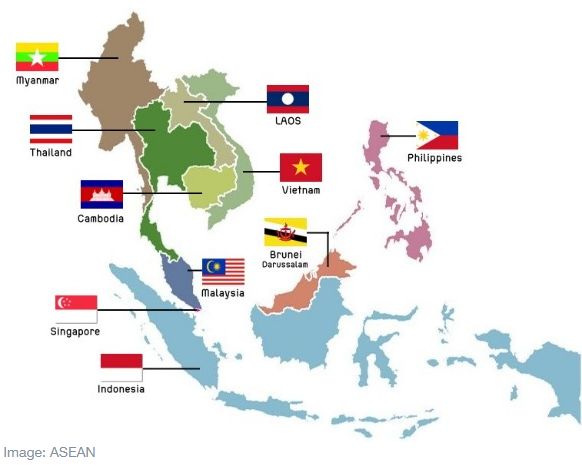
- 25 Nov 2024
In News:
The 6th ASEAN-India Trade in Goods Agreement (AITIGA) Joint Committee and related meetings for discussions on the review of the AITIGA were held recently in Vanijya Bhawan, New Delhi.
Key Highlights:
Key Negotiation Areas
- 8 Sub-Committees under the AITIGA Joint Committee discussed:
- Market access, rules of origin, SPS measures, standards and technical regulations.
- Customs procedures, economic and technical cooperation, trade remedies, and legal and institutional provisions.
- 5 Sub-Committees met physically during this round of negotiations.
Progress in Discussions
- Textual Discussions: Sub-Committees made progress in discussions on various provisions.
- Tariff Negotiations: Initial steps towards initiating tariff negotiations were covered.
High-Level Meetings Leading to AITIGA Review
- 21st ASEAN-India Economic Ministers Meeting: Held in September 2024 in Vientiane, Laos.
- 21st ASEAN-India Summit: Held in October 2024 in Vientiane, Laos.
Both meetings urged the Joint Committee to expedite negotiations and aim for the conclusion of the review in 2025.
Bilateral Meetings
- ASEAN delegates held separate bilateral meetings with Thailand and Indonesia to discuss bilateral trade issues.
- Indian and ASEAN Chief Negotiators met to align on the ongoing issues and future steps.
India's Review Demands
- Request for Review: India sought a review of AITIGA (implemented in 2010), citing disproportionate trade benefits favoring ASEAN countries.
- India’s Objectives:
- Enhanced Market Access: India pushed for ASEAN countries, especially Vietnam, to commit to greater market-opening for Indian goods.
- Stricter Rules of Origin (ROO): India requested more stringent ROO provisions to prevent Chinese goods from entering India via ASEAN countries at preferential rates.
Trade Relationship and Economic Impact
- Bilateral Trade:
- Total trade with ASEAN reached USD 121 billion in FY 2023-24.
- Trade during April-October 2024 was USD 73 billion, marking a 5.2% growth.
- Trade Deficit: India’s trade deficit with ASEAN widened from USD 4.98 billion in FY 2010-11 to USD 38.4 billion in 2023-24.
- ASEAN accounts for 11% of India’s global trade.
Future Outlook
- The next meeting of the AITIGA Joint Committee is scheduled for February 2025 in Jakarta, Indonesia.
- The review process aims to further enhance sustainable trade between India and ASEAN countries.
11th ASEAN Defence Ministers’ Meeting-Plus (ADMM-Plus)
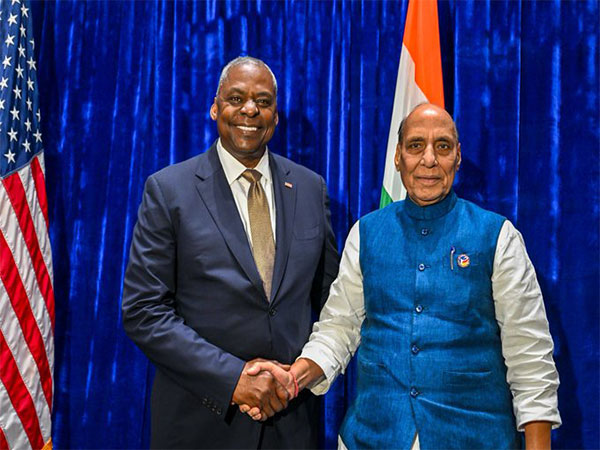
- 23 Nov 2024
In News:
The 11th ADMM-Plus held in Vientiane, Laos saw Union Defence Minister Rajnath Singh engage in discussions with his counterparts from the United States, Japan, and the Philippines.
Focus: The talks centered on strengthening defence partnerships, regional security, and enhancing cooperation among Indo-Pacific nations.
ASEAN Defence Ministers’ Meeting-Plus (ADMM-Plus):
- Platform for Dialogue: The ADMM-Plus is a key platform for ASEAN and its eight Dialogue Partners—Australia, China, India, Japan, New Zealand, Republic of Korea, Russia, and the United States.
- Establishment: The inaugural ADMM-Plus was held in HàN?i, Vietnam on 12 October 2010.
- Annual Meetings: Since 2017, the ADMM-Plus has met annually to enhance dialogue and cooperation amidst an increasingly complex regional security environment.
Objectives:
- Capacity Building: To aid ASEAN members in addressing shared security challenges.
- Promote Trust and Transparency: Enhance mutual trust and confidence between ASEAN and partner nations.
- Regional Peace and Stability: Focus on cooperation in defence and security to counter transnational security challenges.
- ASEAN Security Community: Contribute to realizing the ASEAN Security Community, as per the Bali Concord II, aiming for peace, stability, democracy, and prosperity in the region.
- Vientiane Action Programme: Facilitate ASEAN's efforts towards a peaceful, secure, and prosperous ASEAN with outward-looking relations with Dialogue Partners.
Indira Gandhi Prize for Peace, Disarmament, and Development
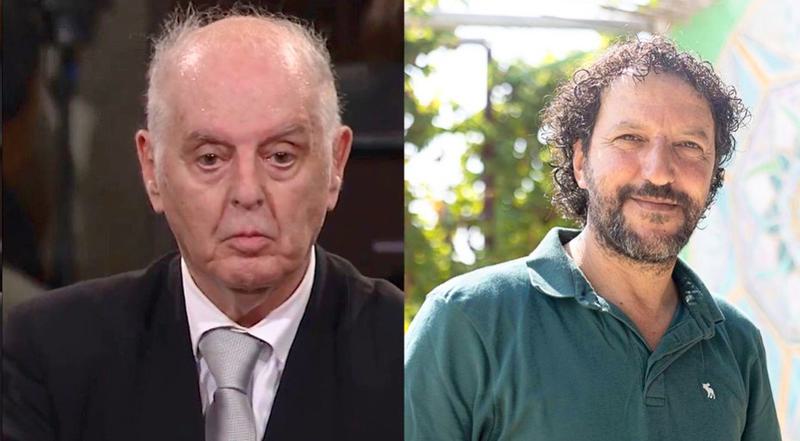
- 21 Nov 2024
In News:
- Daniel Barenboim (Classical Pianist and Conductor) and Ali Abu Awwad (Palestinian Peace Activist) were jointly awarded the Indira Gandhi Prize for Peace, Disarmament, and Development for 2023.
- Daniel Barenboim was recognized for fostering peace through musical and cultural dialogue initiatives.
- Ali Abu Awwad was honored for his advocacy of peace through dialogue via his organization Roots, which he founded after serving time in Israeli prison.
Significance of the Indira Gandhi Peace Prize:
- The award is given to individuals or organizations who have made outstanding contributions to international peace, disarmament, and development.
- It includes a monetary award of ?25 lakh and a citation.
About the Indira Gandhi Peace Prize:
- Established: 1986 by the Indira Gandhi Memorial Trust in memory of former Prime Minister Indira Gandhi.
- Objective: To honor sustained efforts towards international peace, the development of humanity, and the promotion of disarmament.
- Past recipients: Includes prominent figures and organizations such as Mikhail Gorbachev, UNICEF, Jimmy Carter, Angela Merkel, ISRO, and Sir David Attenborough.
2022 Awardees:
- The Indira Gandhi Peace Prize for 2022 was awarded to the Indian Medical Association and the Trained Nurses Association of India, in recognition of their contribution as COVID-19 warriors.
Key Takeaways:
- The Indira Gandhi Peace Prize is regarded as one of the most prestigious awards for promoting peace, disarmament, and development worldwide.
- Daniel Barenboim's musical initiatives and Ali Abu Awwad's work through dialogue exemplify efforts to bridge divides and promote peaceful resolutions to conflict.
Army Tactical Missile System (ATACMS)

- 20 Nov 2024
In News:
- Russia reported that Ukraine fired six US-made Army Tactical Missile System (ATACMS) missiles at Bryansk, Russia, marking a significant escalation in the ongoing conflict.
- This came after US President Joe Biden authorized Ukraine to use long-range missiles to strike deeper inside Russian territory, easing previous restrictions on such weapons
About the Army Tactical Missile System (ATACMS)
- Overview:
- ATACMS is a surface-to-surface artillery weapon system designed to strike targets at much greater ranges than conventional artillery, rockets, or missiles.
- Manufacturer: Produced by Lockheed Martin, a leading US defense contractor.
- First Use: It was first used during the 1991 Persian Gulf War.
- Key Features:
- Guidance: ATACMS missiles are inertially guided ballistic missiles, capable of operating in all weather conditions.
- Range: Approximately 190 miles (305 km).
- Propulsion: It uses a single-stage, solid propellant for propulsion.
- Launch Platforms: Fired from platforms like the High Mobility Artillery Rocket System (HIMARS) and the M270 Multiple Launch Rocket System (MLRS).
- Payload: ATACMS missiles can carry cluster munitions, releasing hundreds of smaller bomblets over a targeted area, increasing their destructive power.
- Global Operators:Besides the US, ATACMS is also operated by countries such as Bahrain, Greece, South Korea, Taiwan, and the United Arab Emirates.
Grand Commander of the Order of the Niger
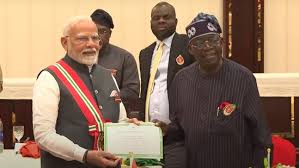
- 19 Nov 2024
In News:
PM Modi receives Nigeria’s second-highest national award.
Key Events and Achievements
- Award Conferred:
- Award Name: Grand Commander of the Order of the Niger (GCON).
- Significance: Nigeria’s second-highest national award, conferred on Prime Minister Narendra Modi.
- Historical Context: Modi becomes the second foreign dignitary to receive this award, after Queen Elizabeth in 1969.
Strategic and Developmental Ties Between India and Nigeria
- First Visit in 17 Years: Modi’s visit is the first by an Indian PM to Nigeria in 17 years, underscoring the significance of strengthening bilateral ties.
- Economic Cooperation:
- Over 200 Indian companies have invested around $27 billion in Nigeria across key sectors, making India a major economic partner.
- India has provided $100 million in development assistance through concessional loans and is actively involved in capacity-building training programs in Nigeria.
- MoUs Signed:
- Three Memoranda of Understanding (MoUs) were signed in the fields of:
- Cultural Exchange.
- Customs Cooperation.
- Survey Cooperation.
- Three Memoranda of Understanding (MoUs) were signed in the fields of:
- Relief Aid: Modi announced the dispatch of 20 tonnes of relief supplies to help Nigeria recover from the devastating floods that affected the country last month.
Diplomatic Discussions and Initiatives
- Strategic Partnership: Modi described the India-Nigeria partnership as one with immense potential in sectors like defence, energy, technology, trade, health, and education.
- Indian Expatriate Community: Modi acknowledged the 60,000-strong Indian diaspora in Nigeria, recognizing their role as a pillar of bilateral ties.
- Support for Africa:
- Modi highlighted India’s support for the African Union’s membership in the G20, an outcome of the India-hosted G20 summit in 2023.
- Nigeria’s Role: He noted Nigeria’s positive influence on Africa and its importance as a key partner in India’s Africa engagement.
Broader Implications for International Relations
- India-Nigeria Security Cooperation:
- The National Security Advisors (NSA) of India and Nigeria held in-depth discussions on counter-terrorism, extremism, and cybersecurity challenges.
- India and Nigeria are committed to jointly addressing global threats such as arms smuggling and international crime.
- India's Role as a Development Partner:
- India’s growing role as a development partner for African nations is becoming increasingly important, exemplified by Nigeria’s close ties with India.
- Global Diplomacy and Soft Power:
- Modi’s award and visit reflect India’s growing influence in Africa and its emphasis on fostering ties with resource-rich and strategically located nations like Nigeria.
- The Grand Commander of the Order of the Niger is also a reflection of the soft power India is wielding globally.
Key Facts about Nigeria:
- Location: Nigeria is located in West Africa, bordering Niger, Chad, Cameroon, and Benin, with access to the Atlantic Ocean.
- Significance:
- Known as the “Giant of Africa” due to its large population and economic power.
- It has the largest economy in Africa, largely driven by its oil reserves.
Nepal-Bangladesh Power Transfer via India
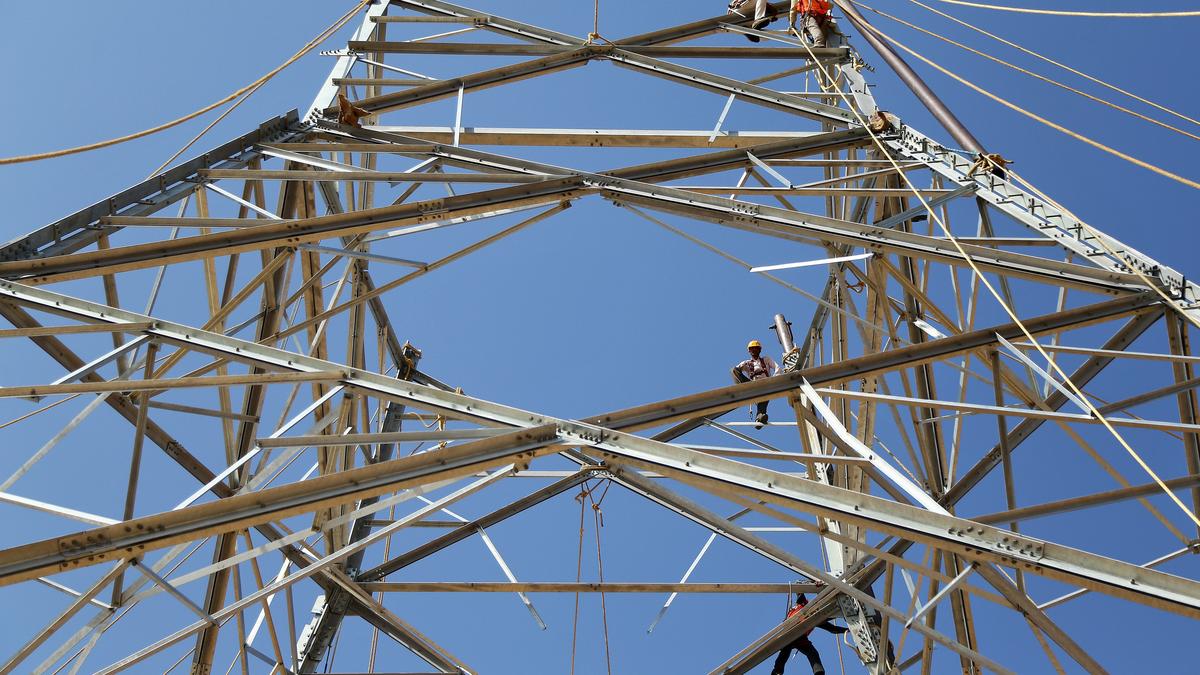
- 19 Nov 2024
In News:
Nepal starts exporting energy to Bangladesh with Indian grid support.
Significance of the Power Transfer:
- Energy Cooperation:
- A major step in regional energy cooperation among Nepal, India, and Bangladesh.
- Strengthens sub-regional connectivity in the power sector.
- Nepal’s Hydropower Potential:
- Nepal, a Himalayan nation, possesses untapped hydropower resources, and this agreement opens the door for future cross-border electricity cooperation.
- Nepal’s energy exports are a green energy initiative, supporting sustainable industrial growth in Bangladesh and regional prosperity.
- Electricity Crisis in Bangladesh:
- Bangladesh is facing an ongoing electricity shortage, worsened by the suspension of power supply from Adani’s Godda plant and the maintenance of the Payra thermal unit.
- The addition of 40 MW of Nepalese hydroelectric power aims to alleviate the energy shortfall in Bangladesh.
Tripartite Power Sales Agreement:
- Agreement Details:
- The agreement for power transfer was signed in October 2023 between:
- NTPC Vidyut Vyapar Nigam (NVVN) (India)
- Nepal Electricity Authority (NEA) (Nepal)
- Bangladesh Power Development Board (BPDB) (Bangladesh).
- Power Export: Nepal has started exporting 40 MW of electricity, which marks a significant milestone in trilateral power cooperation.
- The agreement for power transfer was signed in October 2023 between:
Key Entities Involved:
- NTPC Vidyut Vyapar Nigam (NVVN):
- A wholly owned subsidiary of NTPC Ltd. (National Thermal Power Corporation), created to facilitate power trading.
- NVVN is diversifying into renewables, e-mobility, and green fuel solutions.
- NTPC Ltd.:
- A Maharatna PSU under India’s Ministry of Power, established to develop power resources in India.
- Involved in large-scale power generation and clean energy initiatives
Unified Complex Radio Antenna
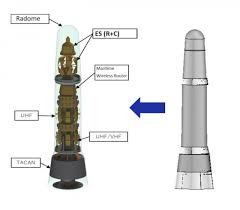
- 17 Nov 2024
In News:
- India and Japan recently signed a Memorandum of Implementation (MoI) to co-develop the UNICORN (Unified Complex Radio Antenna) mast for deployment on Indian Navy ships. This pact marks a significant milestone as it is India's first military technology transfer agreement with Japan.
- The deal follows a 2015 agreement on the transfer of defense equipment and technology, further strengthening defense ties between the two countries.
- The UNICORN mast is a cutting-edge communication and radar system designed to enhance the stealth characteristics of naval vessels. This agreement is seen as an important step towards deepening India-Japan defense cooperation.
What is UNICORN?
The UNICORN mast is an advanced, integrated antenna system that combines several communication and radar components into a single conical structure or radome (a radar-absorbing dome). It is designed to reduce the radar cross-section (RCS) of ships, improving their stealth capabilities.
Key features of the UNICORN mast include:
- Integration of multiple antennas: It consolidates various antennas used for tactical data links, communications, and navigation systems (e.g., TACAN - Tactical Air Navigation System).
- Stealth enhancement: By reducing the number of exposed components and consolidating them into a single radome, the mast significantly lowers the ship’s radar signature, making it harder to detect.
- Improved performance: The mast design minimizes mutual interference between antennas, enhances maintainability, and increases lightning resistance.
- Space efficiency: It saves valuable below-deck space and reduces ship-building time by integrating multiple systems into one mast.
The UNICORN system is currently deployed on Mogami-class frigates of the Japan Maritime Self-Defence Force.
India-Japan Defense Cooperation
- 2015 Defense Technology Transfer Agreement: This pact established a framework for defense cooperation between India and Japan, paving the way for joint projects like the UNICORN mast.
- Bilateral Military Exercises:
- Veer Guardian 2023: A bilateral exercise conducted between the Japan Air Self Defence Force (JASDF) and the Indian Air Force (IAF), which deepened defense interoperability between the two nations.
- Tarang Shakti 2024: The first multilateral air exercise hosted by the Indian Air Force, with Japanese fighter aircraft participating.
- Andaman and Nicobar Islands Development: Japan has also provided financial aid for infrastructure development in India’s strategically located Andaman and Nicobar Islands, contributing to enhancing India’s maritime security in the region.
Bali Jatra Cuttack Utsav 2024
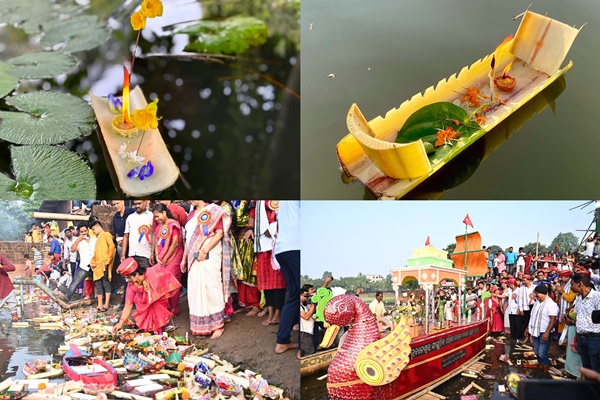
- 17 Nov 2024
In News:
- Bali Jatra 2024 is being held from November 15 to November 22 in Cuttack, Odisha.
- The festival celebrates Odisha’s ancient maritime history and its cultural and trade links with Southeast Asia.
- The event has gained international attention due to the participation of diplomats and cultural troupes from ASEAN, BIMSTEC, and Pacific Island countries.
Historical and Cultural Significance:
- Bali Jatra ("Voyage to Bali") commemorates the 2,000-year-old maritime trade routes between ancient Kalinga (modern-day Odisha) and Southeast Asia, including regions like Bali, Java, Sumatra, Borneo, Burma (Myanmar), and Sri Lanka.
- The festival honors the skills of Kalinga sailors who contributed to the prosperity of the region through trade, including commodities like pepper, cinnamon, cardamom, silk, camphor, gold, and jewelry.
- It highlights Odisha’s maritime legacy and the cultural exchanges between India and Southeast Asia, particularly the cultural influence of Odia merchants on Bali.
Commercial and Economic Aspects:
- Bali Jatra is Asia’s largest open-air trade fair, featuring over 2,500 stalls selling a variety of products including artisanal crafts, household items, and food.
- The event is a major commercial activity with business transactions estimated to exceed ?100 crore over the course of the festival.
- The festival provides an opportunity for both local and national traders to exhibit products at competitive prices.
Cultural Performances and International Participation:
- The festival includes daily cultural performances showcasing Odissi dance, Chhau dance, Bihu, Mahari, Gotipua, Sambalpuri, and Santali folk dances.
- This year, cultural troupes from countries like Indonesia, Thailand, and Sri Lanka have participated, enhancing the international profile of the festival.
- Diplomats, including Ambassadors, High Commissioners, and Heads of Mission from 14 countries attended the inaugural ceremony.
Historical Background of Bali Jatra:
- The festival is linked to Kartika Purnima, the full moon night of the month of Kartika, marking the annual migration of traders from Odisha to Southeast Asia.
- Traders used boats called Boitas to travel to distant lands, which is now symbolically represented in the festival.
- The event’s cultural significance extends to the recognition of Odisha’s historic maritime routes, with ports like Tamralipti, Manikpatna, Chelitalo, Palur, and Pithunda playing key roles in global trade from as early as the 4th century BC.
Kalinga's Maritime Influence:
- The Kalinga Empire (present-day Odisha) had significant influence over the Bay of Bengal, referred to as the Kalinga Sea.
- Kalinga’s dominance in maritime trade is reflected in Kalidasa's Raghuvamsa, where the King of Kalinga is called "Lord of the Sea."
- Kalinga's Boitas (ships) were instrumental in connecting India with the Southeast Asian archipelago, including Bali.
Cultural Linkages with Bali:
- Odisha's trade with Bali influenced the culture, religion, and architecture of the region.
- Balinese Hinduism today still reflects Indian influences, with worship of Hindu deities like Shiva, Vishnu, Brahma, and Ganesha.
- The MasakapankeTukad festival in Bali, similar to Bali Jatra in Odisha, is a tribute to the maritime ancestors of Bali and commemorates the long-standing cultural ties.
Recognition and Milestones:
- Bali Jatra 2022 achieved a Guinness World Record for creating the largest collection of origami sculptures.
- The festival has evolved from a traditional trade fair to an international cultural event that highlights Odisha’s historical role in global trade and cultural exchanges.
Mobility Arrangement for Talented Early-professionals Scheme (MATES)
- 15 Nov 2024
In News:
Australia has come up with a new scheme that allows talented young people from India to work in the country for some time.
What is the MATES Scheme?
- Full Name: Mobility Arrangement for Talented Early-professionals Scheme (MATES).
- Objective: To provide Indian university graduates and early-career professionals with an opportunity to live and work in Australia for up to two years.
- Establishment: The scheme is part of the Migration and Mobility Partnership Arrangement (MMPA) between Australia and India, signed on May 23, 2023.
- Launch Date: MATES will open for applicants in December 2024.
Eligibility Criteria
- Age: Applicants must be 30 years or younger at the time of application.
- Educational Qualifications: Must have graduated within the last two years from an eligible institution with a Bachelor’s degree or higher in one of the following fields:
- Renewable Energy
- Mining
- Engineering
- Information Communications Technology (ICT)
- Artificial Intelligence (AI)
- Financial Technology (FinTech)
- Agricultural Technology (AgriTech)
- English Proficiency: A minimum score of 6 overall in IELTS (or equivalent), with at least 5 in each module.
- Institutional Criteria: Graduates must be from the top 100 Indian universities as per the NIRF Ranking 2024 (e.g., Panjab University, Chandigarh University, Thapar Institute of Engineering, Lovely Professional University).
- Previous Participation: Applicants must not have previously participated in the MATES scheme.
Key Features of the MATES Scheme
- No Employer Sponsorship Required: Applicants are not required to have sponsorship from an Australian employer.
- Visa Duration: The visa allows a stay of up to 2 years in Australia, with multiple entries permitted.
- Dependents: Visa holders can bring dependents (spouse and children). Dependents will have work rights in Australia but will not count towards the annual cap.
- Visa Application Process:
- The visa will be granted through a ballot system (random selection).
- Application Fee: AUD 25.
- Shortlisted candidates will proceed to further formalities.
Program Features
- Targeted Sectors: MATES focuses on key sectors such as renewable energy, mining, engineering, ICT, AI, FinTech, and AgriTech, aligning with Australia’s demand for skilled professionals in these areas.
- Pilot Program: Initially, the scheme will offer 3,000 places per year for primary applicants.
- Work Flexibility: While the visa does not require applicants to work in their nominated field, it is designed to help young professionals expand their skills and network in Australia’s key industries.
Additional Benefits
- Career Development: Participants will gain international work experience, expanding their professional network and skills.
- Cultural Exchange: The scheme also promotes cultural exchange between India and Australia, fostering stronger bilateral relations.
- Pathway for Future Opportunities: Participants may apply for further temporary or permanent residence in Australia, provided they meet the eligibility requirements.
Impact and Significance
- Bilateral Cooperation: The MMPA, under which MATES is established, enhances migration and mobility between India and Australia while addressing concerns related to illegal migration.
- Youth Empowerment: The scheme offers young professionals a platform to develop their careers internationally, particularly in sectors of global relevance like AI, FinTech, and renewable energy.
- Skill Development: MATES aims to bridge skill gaps in Australia by attracting Indian professionals to key sectors where expertise is in high demand.
- Global Talent Mobility: This scheme supports the global mobility of young talent and strengthens the India-Australia economic and educational partnership.
AUSTRAHIND 2024
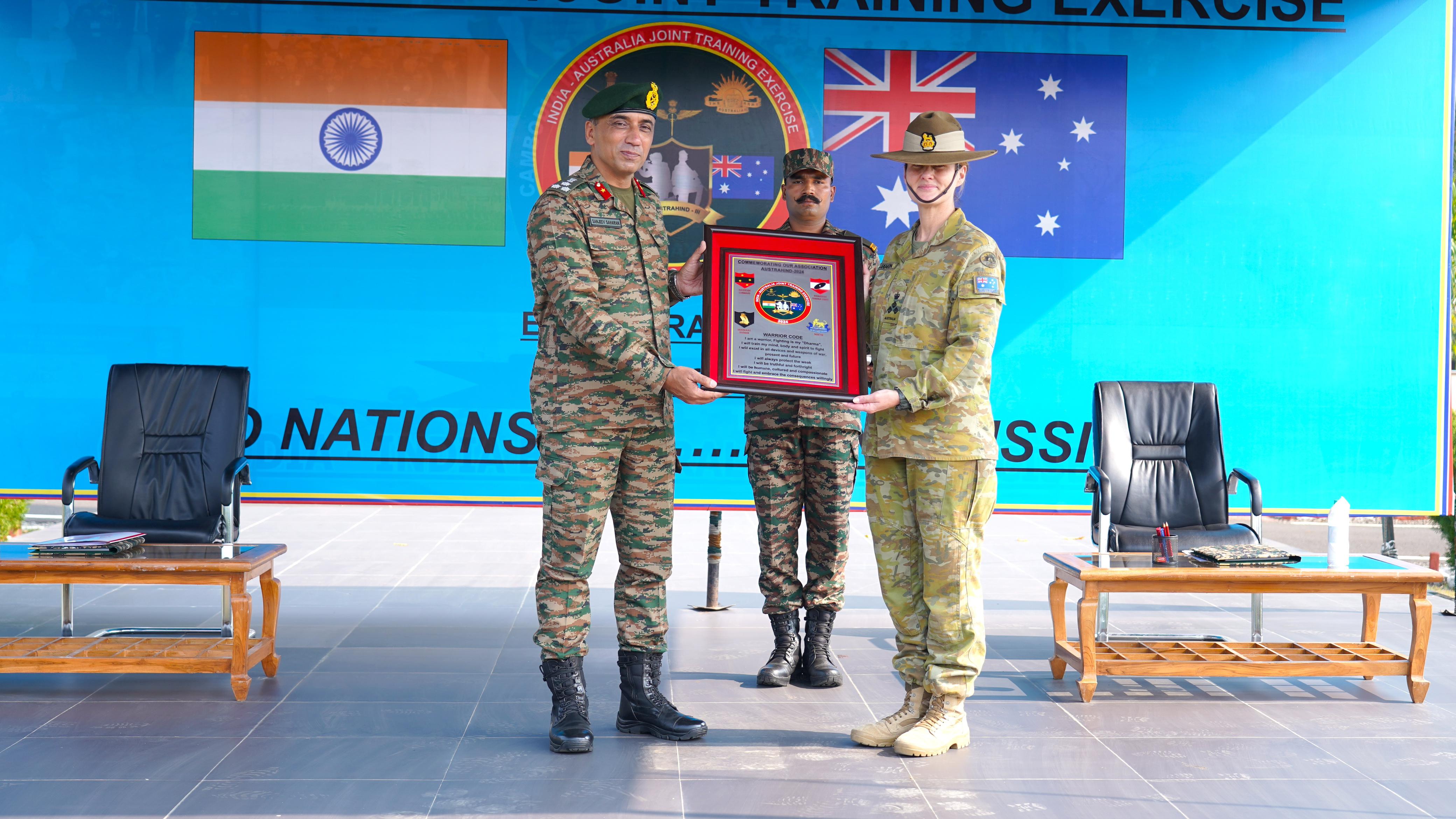
- 09 Nov 2024
In News:
- The 3rd edition of Exercise AUSTRAHIND started on 8th November 2024 at the Foreign Training Node in Pune, Maharashtra. The exercise will run until 21st November 2024.
Participating Forces:
- Indian Contingent: 140 personnel, primarily from the DOGRA Regiment and Indian Air Force (14 personnel).
- Australian Contingent: 120 personnel from the 13th Light Horse Regiment of the 10th Brigade of the 2nd Division.
Purpose of the Exercise:
- Enhance Military Cooperation between India and Australia.
- Promote Interoperability in conducting joint sub-conventional operations in semi-urban and semi-desert terrain.
- Focus on operations under Chapter VII of the UN mandate.
Key Objectives:
- Joint Tactical Drills and Planning to improve coordination between the forces.
- Training in counter-terrorism operations, special heli-borne operations, and drone countermeasures.
Phases of the Exercise:
Combat Conditioning and Tactical Training Phase:
- Includes drills such as terrorist response, territory capture, and Raid and Search & Destroy Missions.
- Establishment of Joint Operations Centre and securing critical infrastructure like helipads.
- Training on drone operations and counter-drone measures.
Validation Phase: Practical application and testing of skills learned in the previous phase.
Significance:
Best Practices Sharing: Both sides will exchange tactics, techniques, and procedures for conducting effective tactical operations.
Camaraderie Building: The exercise will foster a strong bond between soldiers from both countries.
Background: AUSTRAHIND is an annual exercise held alternately in India and Australia. The last edition took place in Australia in December 2023.
21st India-US Military Cooperation Group (MCG) Meeting
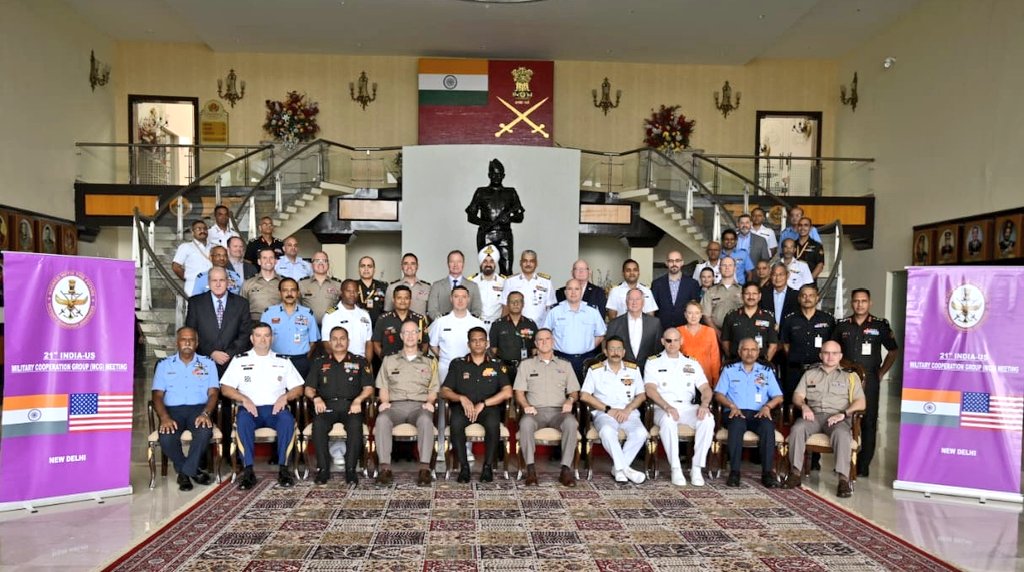
- 07 Nov 2024
In News:
- The 21st India-US Military Cooperation Group (MCG) meeting was held from November 5 to 6, 2024, at the Manekshaw Centre, New Delhi.
- The meeting focused on strengthening defence ties between India and the US, covering a wide range of topics aimed at improving military cooperation.
Key Areas of Discussion
- Capacity Building: The meeting discussed initiatives for enhancing defence capacity through training exchanges, joint exercises, and sharing best practices.
- Defence Industrial Cooperation: Both countries explored opportunities for collaborative defence industrial ventures and technology sharing.
- Joint Exercises: The advancement of joint military exercises was highlighted to boost readiness against both conventional and hybrid threats.
- Strategic Objectives: The meeting aimed to enhance interoperability between the two countries' armed forces, enabling more effective joint operations.
Commitment to Strengthen Indo-US Defence Ties
- Strategic Partnership: Both nations reaffirmed their commitment to strengthening the Indo-US defence partnership, recognizing the shared challenges in the Indo-Pacific region.
- Focus on Regional Security: The discussions underscored the importance of ensuring regional security and global stability in the face of emerging threats.
The Role of the MCG
- Purpose: The MCG forum serves as a key platform for enhancing strategic and operational defence collaboration between India and the US.
- Long-term Goals: The MCG aims to build mutual defence capabilities, counter emerging threats, and ensure the security of both nations and the wider region.
India-Algeria Strengthen Defence Ties
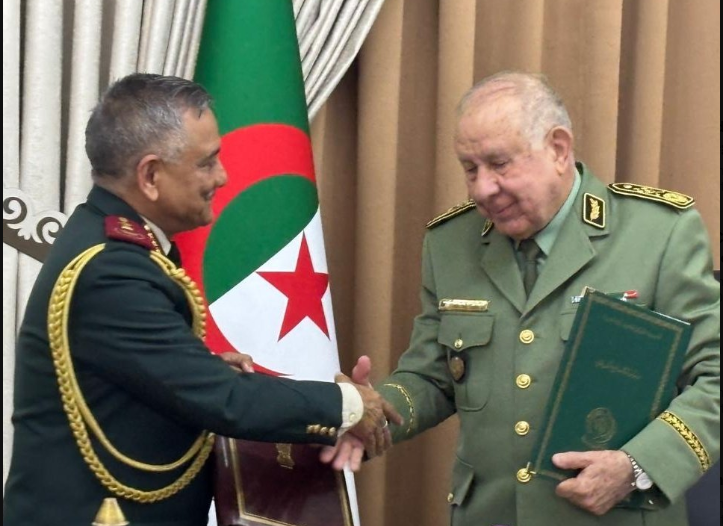
- 06 Nov 2024
In News:
- The Chief of Defence Staff (CDS) of India recently visited Algeria, culminating in the signing of a significant Memorandum of Understanding (MoU) on defence cooperation.
- Objective: The MoU aims to strengthen the strategic and military ties between India and Algeria.
Recent Developments in India-Algeria Relations
- Important Visit: The CDS’s visit coincided with Algeria’s 70th anniversary of its revolution, celebrated on November 1st, with military parades and ceremonies highlighting Algeria’s historical and political legacy.
- Defence Cooperation:
- India re-established its defence wing in Algeria, and Algeria reciprocated by considering the establishment of its defence wing in India.
- India emphasized its role as a “Vishwa Bandhu” (global partner) and offered to share defence expertise and experiences with Algeria.
- Strategic Discussion: The MoU aims to enhance mutual understanding, laying the foundation for long-term defence collaboration across multiple sectors, including manufacturing under India’s 'Make in India' and 'Make for the World' initiatives.
- Global Peace Support: CDS reiterated India’s commitment to peaceful conflict resolution and expressed support for Algeria’s defence interests.
Significant Areas of India-Algeria Relationship
- Diplomatic Relations:
- India and Algeria established diplomatic ties in July 1962, the same year Algeria gained independence from French colonial rule.
- India supported Algeria's liberation movement and both countries have maintained close ties as part of the Non-Aligned Movement.
- Bilateral Trade:
- Trade peaked at USD 2.9 billion in 2018 but dropped to USD 1.5 billion by 2021 due to COVID-19 and Algeria’s import restrictions.
- Trade rebounded in 2022, increasing by 24% to USD 2.1 billion.
- Exports from India (2023-24): Rice, pharmaceuticals, granite.
- Imports from Algeria: Petroleum oils, LNG, calcium phosphates.
- Bilateral Agreements:
- 2015 MoU: Between All India Radio (AIR) and Algerian National Radio for cooperation in broadcasting.
- 2018 Space Cooperation Agreement: Focuses on satellite technology for applications like crop forecasting and disaster management.
- Visa Waiver Agreement (2021): Diplomatic and official passport holders are exempt from visa requirements.
- Cultural Engagement:
- International Day of Yoga (2024): Celebrated in Algeria at the Jardin d’Essai du Hamma, attracting over 300 participants.
- Space Cooperation:
- The 2018 India-Algeria Space Cooperation Agreement focuses on joint space science, technology, and applications.
- India has launched four Algerian satellites (2016), and the 2022 Joint Committee Meeting expanded satellite capacity building efforts.
- Algeria’s space agency has engaged with ISRO on satellite applications like crop forecasting and disaster management.
- Indian Community in Algeria:
- Approximately 3,800 Indians live in Algeria, working in various sectors, including technical and semi-skilled roles.
- The community includes 13 Overseas Citizens of India (OCI), 10 Persons of Indian Origin (PIOs), and 15 Indian students.
Minuteman III ICBM

- 06 Nov 2024
In News:
The U.S. Army is scheduled to test launch a Minuteman III ICBM (Intercontinental Ballistic Missile) after the closure of voting on Election Day.
Missile Features
- Speed: Hypersonic, capable of reaching speeds up to 15,000 mph (Mach 23).
- Range: 13,000 km.
- Payload: Currently carries one nuclear warhead (as per arms control agreements with Russia), but originally designed for multiple independently targetable re-entry vehicles (MIRVs).
- Launch Time: Extremely fast, enabling near-instant global retaliation capabilities.
- Testing Reliability: Nearly 100% success rate in tests, with backup airborne launch controllers to ensure continuity of the retaliatory strike capability.
- Length: 18.2 meters.
- Diameter: 1.85 meters.
- Launch Weight: 34,467 kg.
- Type: Three-stage, solid-fuel missile.
Strategic Significance
- Land-Based Nuclear Deterrent: The Minuteman III is a key component of the U.S. nuclear triad, which includes land-based missiles, submarine-launched missiles (SLBMs), and strategic bombers.
- Cost-Effectiveness: The Sentinel weapon system (modernized Minuteman III) is viewed as the most cost-effective option for maintaining the land-based leg of U.S. nuclear deterrence until the planned Ground-Based Strategic Deterrent (GBSD) system replaces it in 2029.
- Global Reach: The missile can strike any target worldwide within minutes, demonstrating U.S. nuclear reach and power projection.
Tumaini Festival
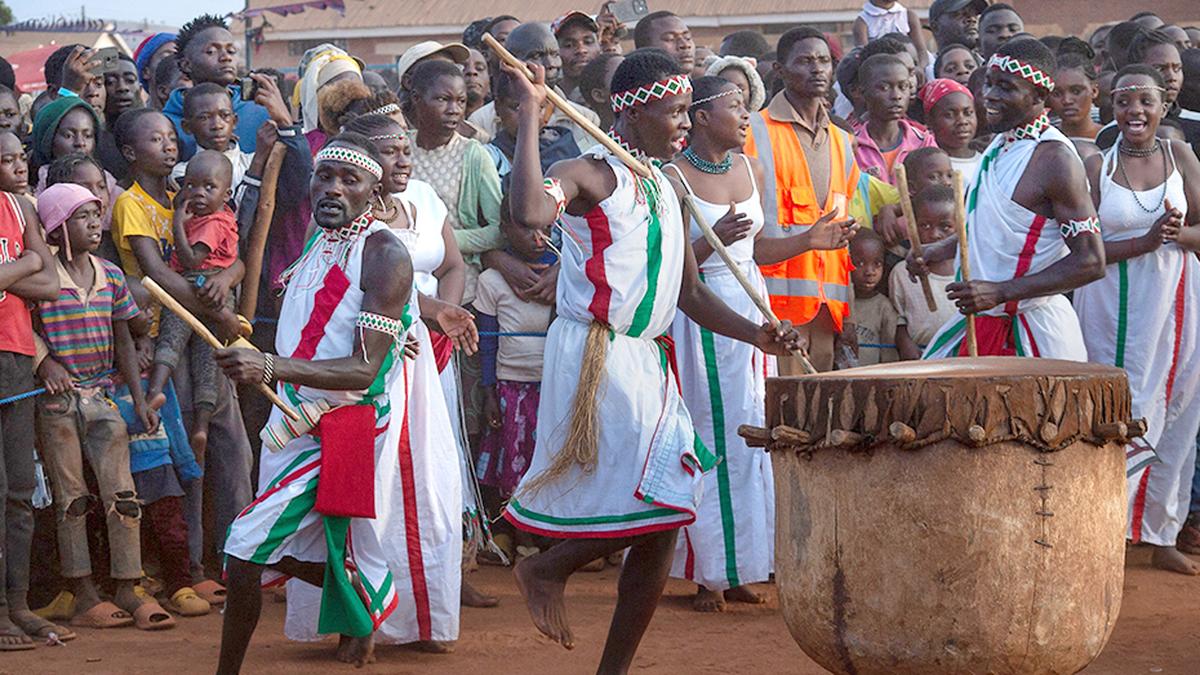
- 04 Nov 2024
In News:
- The Tumaini Festival is held annually in the Dzaleka Refugee Camp in Malawi, one of the world’s few music festivals hosted within a refugee camp. It brings together refugees and locals for cultural exchange, showcasing music, art, and crafts.
- Dates: The festival runs from Thursday to Saturday each year, typically in November.
- Founded: In 2014 by Congolese poet Menes La Plume.
Festival Highlights:
- The festival features performances from a diverse range of artists, including refugees and local Malawians, as well as artists from South Africa, Zimbabwe, and beyond.
- In 2024, performances included Jetu, a 72-year-old singer, and Vankson Boy V, a Congolese refugee, alongside other acts like Maveriq Mavo from South Africa.
- The festival aims to:
- Celebrate cultural exchange and community solidarity between refugees and locals.
- Humanize the refugee experience by allowing refugees and locals to share common experiences and celebrate cultural diversity.
- Challenge stereotypes by showing refugees as people with the same aspirations, talents, and desires as locals.
Significance of Dzaleka Refugee Camp:
- Location: Situated near Lilongwe, Malawi, Dzaleka was originally a prison before becoming a refugee camp in 1994.
- Capacity: Initially designed for 10,000 refugees, the camp now hosts over 60,000 individuals from countries like Democratic Republic of Congo (DRC), Rwanda, Burundi, Ethiopia, and Somalia.
- Role: Dzaleka has evolved into a hub for humanitarian aid, cultural exchange, and empowerment of its residents.
Hwasong-19
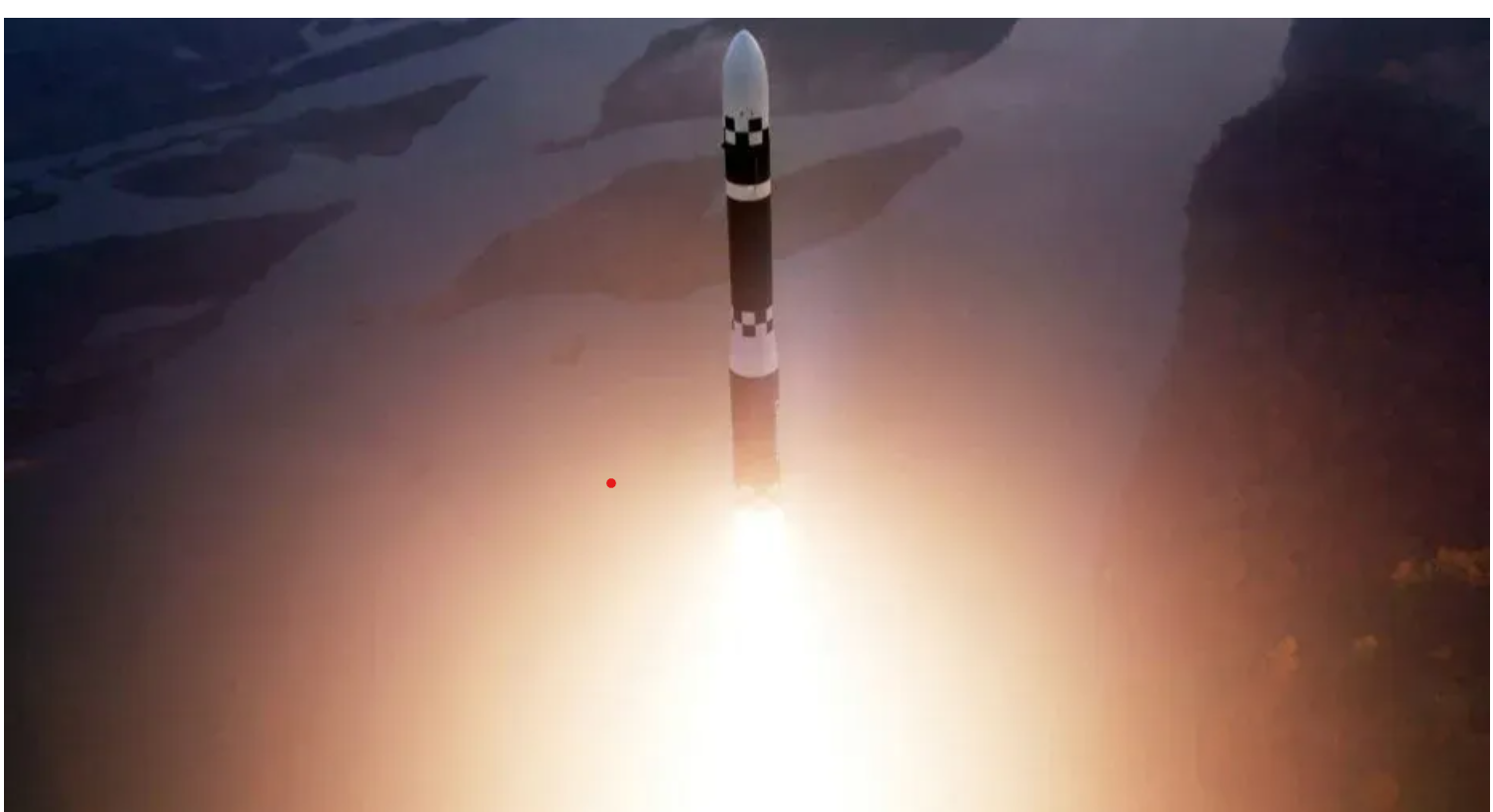
- 02 Nov 2024
In News:
- North Korea recently announced the successful test-firing of its latest intercontinental ballistic missile (ICBM), the ‘Hwasong-19’.
- Claims by North Korea: The missile was described as ‘the world’s strongest strategic missile’ and a ‘perfected weapon system’ by North Korean state media.
Key Features of the Hwasong-19:
- Solid-Fuel Propulsion: The Hwasong-19 reportedly uses solid-fuel propulsion, which enables quicker launches and greater secrecy. This contrasts with liquid-fuel missiles, which take longer to prepare and are more visible.
- Enhanced Performance: The missile is said to have improved altitude and flight duration compared to previous North Korean ICBMs, marking significant progress in missile technology.
- Size: The Hwasong-19 is estimated to be 28 meters long (92 feet), which is notably larger than many other ICBMs, including those from the U.S. and Russia, which are typically under 20 meters (66 feet).
Strategic Implications:
- Reach and Targeting: The Hwasong-19 is believed to have a range of over 13,000 kilometers, which is sufficient to target the U.S. mainland, signaling a significant advancement in North Korea’s missile capabilities.
- Nuclear Capability: While specific details on the missile’s payload remain undisclosed, the Hwasong-19 could potentially be equipped with a nuclear warhead, enhancing North Korea's strategic deterrence.
Impact on Regional and Global Security:
- US-North Korea Tensions: The launch occurred against the backdrop of ongoing U.S.-North Korea tensions, particularly over North Korea’s nuclear and missile programs. The missile could potentially alter the regional security dynamics, especially in East Asia.
What is an ICBM?
- ICBM Definition: An intercontinental ballistic missile (ICBM) is a long-range missile capable of carrying nuclear warheads (or other payloads) across continents.
- Range and Speed: ICBMs typically have a minimum range of 5,500 km (3,400 miles), with some capable of reaching up to 16,000 km or more, making them far faster and more capable than other ballistic missiles.
- Launch Mechanism: ICBMs are launched from land or submarine platforms, traveling through space before re-entering the Earth’s atmosphere and targeting distant objectives.
- Comparison with India's Agni-V: India’s Agni-V ICBM, which has a range of over 5,000 km, is often compared to North Korea’s missile systems.
Asset Recovery Interagency Network–Asia Pacific (ARIN-AP)
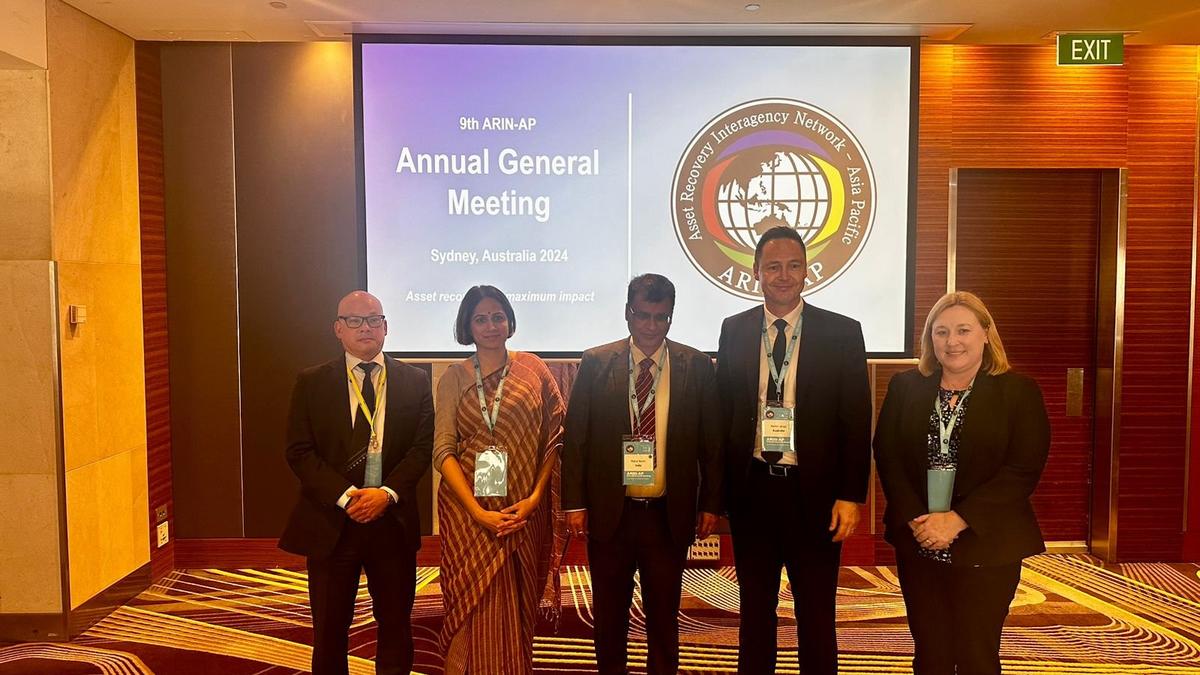
- 02 Nov 2024
In News:
- India, represented by the Directorate of Enforcement (ED), has joined the Steering Committee of the Asset Recovery Interagency Network-Asia Pacific (ARIN-AP).
- Leadership Role: India will assume the presidency of ARIN-AP and host the Annual General Meeting (AGM) in 2026, providing a platform for global cooperation in asset recovery and tackling economic crimes.
ARIN-AP Overview:
- Establishment: ARIN-AP is a multi-agency network formed to address the proceeds of crime across the Asia-Pacific region.
- Network Goals: Its mission is to facilitate cross-border collaboration in the areas of asset tracing, freezing, and confiscation.
- Membership: ARIN-AP includes 28 member jurisdictions and 9 observers, and operates as a key component of the Global CARIN Network (Camden Asset Recovery Inter-Agency Network).
- Functioning: ARIN-AP operates through a network of contact points that enable intelligence exchange among member agencies, promoting effective communication and coordination for asset recovery.
Significance of ARIN-AP's Work:
- Combating Economic Crimes: ARIN-AP enhances the efforts of law enforcement agencies in tracing and recovering assets linked to criminal activities, including both movable and immovable assets.
- Informal Exchange of Intelligence: The network allows for the informal exchange of intelligence between agencies, which often accelerates the identification and recovery of proceeds of crime. This can later lead to formal actions through bilateral or multilateral agreements.
- Global Impact: With over 100 jurisdictions in the broader CARIN Network, ARIN-AP plays a key role in global efforts to combat fugitive economic offenders and illicit financial flows.
India’s Contribution and Alignment with G-20 Priorities:
- India’s Leadership: India’s presidency in ARIN-AP will enhance its leadership in asset recovery, facilitating closer cooperation with regional and international law enforcement agencies.
- G-20 Alignment: This role aligns with India’s priorities under the G-20 framework, particularly focusing on the Nine-Point Agenda aimed at tackling fugitive economic offenders and improving asset recovery mechanisms.
Belt and Road Initiative (BRI)
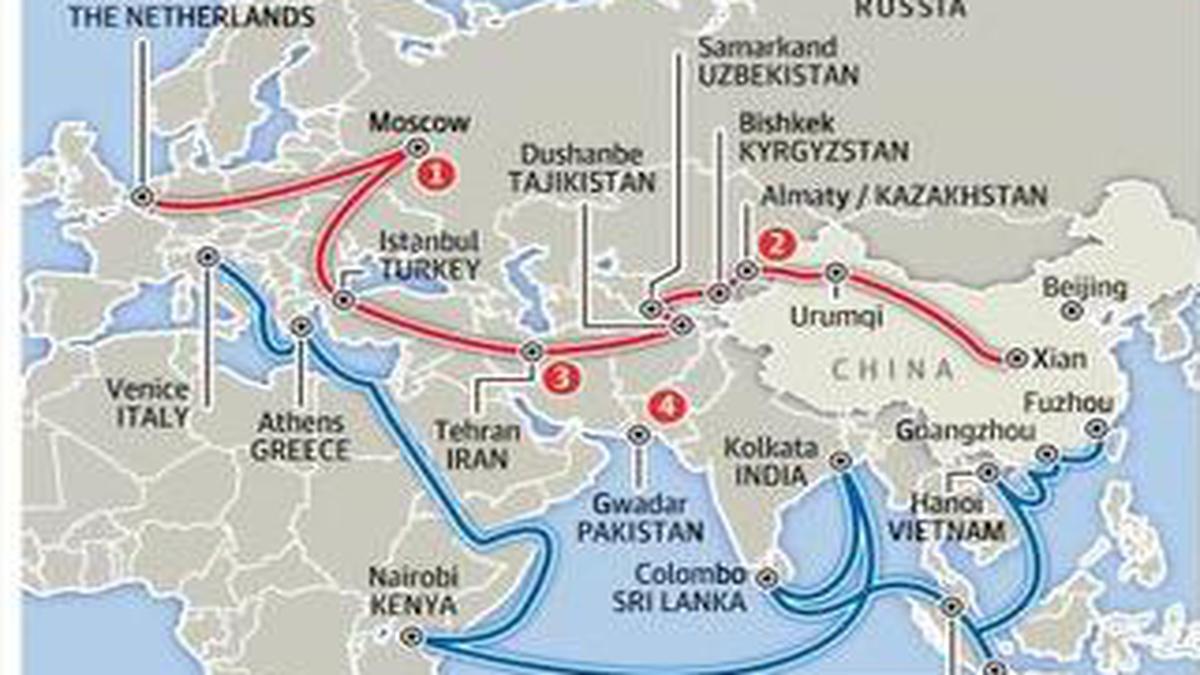
- 30 Oct 2024
In News:
- Brazilhas opted not to join China’s Belt and Road Initiative (BRI), becoming the second BRICS country after India to reject the multi-billion-dollar infrastructure project.
- Brazil prefers to explore alternative ways to collaborate with Chinese investors without signing a formal treaty, aiming to avoid the perceived risks of the BRI.
BRICS and India’s Role:
- Brazil’s decision follows India’s long-standing opposition to the BRI, particularly due to the China-Pakistan Economic Corridor (CPEC) passing through Pakistan-occupied Kashmir, which India views as a violation of its sovereignty.
- India has consistently argued that BRI projects should adhere to international norms, good governance, and transparency, emphasizing that such initiatives should be financially sustainable and not lead to debt traps.
Brazil’s Broader Economic Strategy:
- Brazil aims to balance its relationship with China, which is a major economic partner, but without being bound by the BRI. This decision reflects broader concerns within Brazil about the long-term financial sustainability of BRI projects, especially after witnessing debt crises in other countries like Sri Lanka.
Global Context and the BRI's Impact:
- The BRI, launched by China in 2013, spans several infrastructure sectors and has expanded globally, but it has faced criticism for its potential to trap smaller nations in unsustainable debt.
- India and Brazil’s resistance to the BRI highlights growing skepticism among emerging economies about the long-term implications of joining China's flagship project.
United Nations Day 2024
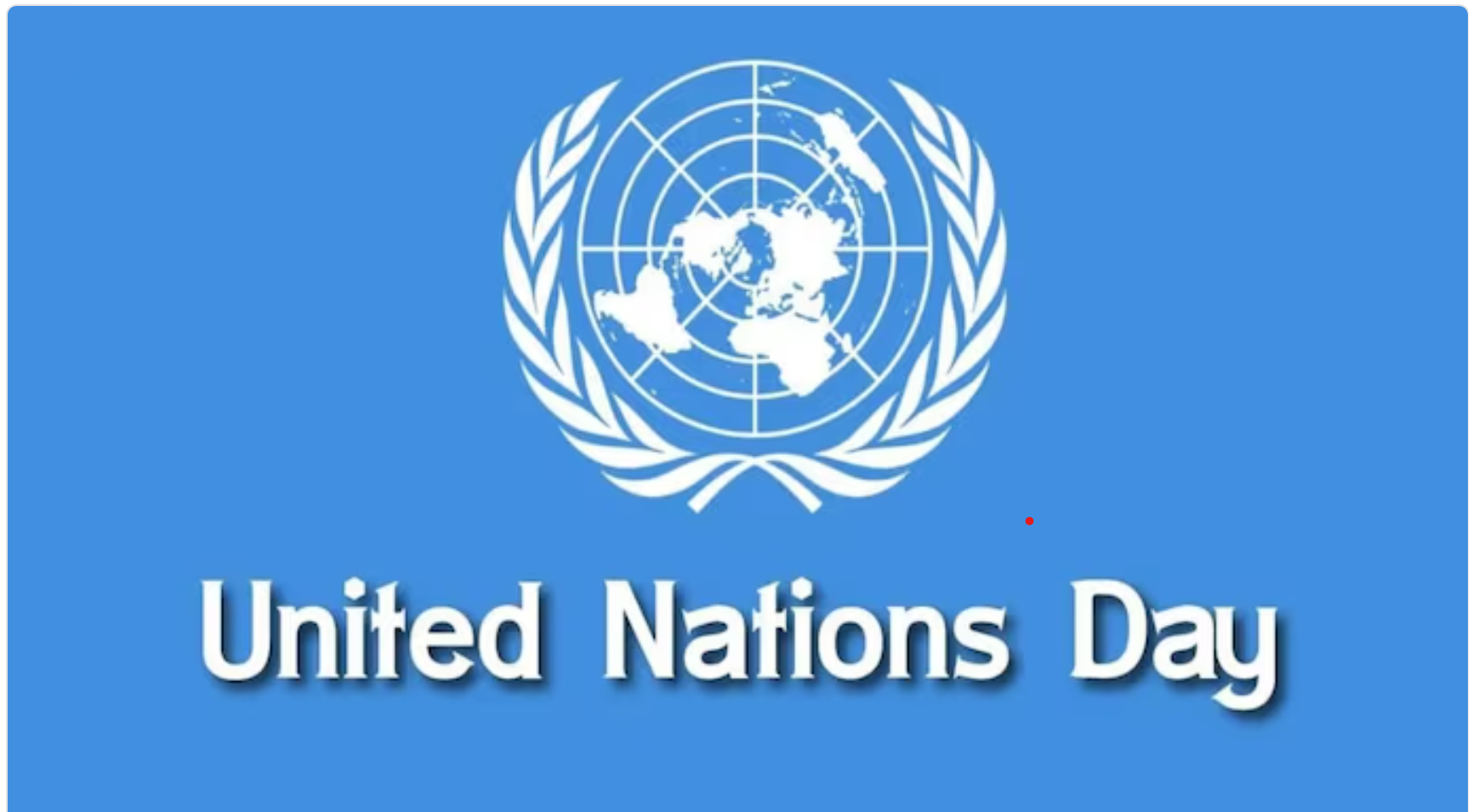
- 25 Oct 2024
In News:
United Nations Day is celebrated each year on October 24 to mark the anniversary of the UN Charter's entry into force, aiming to raise awareness about the goals and achievements of the international body.
Key Highlights:
- Purpose: Celebrates the anniversary of the UN Charter coming into effect on October 24, 1945, after World War II.
- Goal: Raise awareness about the UN’s objectives and accomplishments.
UN Charter Overview
- Signing & Implementation:
- Signed on June 26, 1945, in San Francisco.
- Came into effect on October 24, 1945.
- India ratified the UN Charter on October 30, 1945.
- Predecessor: The League of Nations, created in 1919 after WWI, aimed at promoting international cooperation and peace.
- Content:
- Foundational document of the UN, binding all member states.
- Establishes principles of international relations, including equality of nations and the prohibition of force between countries.
- Amended three times: 1963, 1965, and 1973.
UN's Core Objectives
- Peace and Security: Maintaining global peace and preventing conflicts.
- Humanitarian Aid: Providing assistance to those in need.
- Human Rights: Protecting and promoting human rights globally.
- International Law: Upholding the rule of law on the global stage.
Main Organs of the UN
- General Assembly (UNGA):
- Comprises all 193 Member States, each with one vote.
- Main policy-making body, addressing international issues covered by the UN Charter.
- Security Council (UNSC):
- Consists of 15 members (5 permanent, 10 elected for two-year terms).
- Permanent members: China, France, Russia, UK, USA.
- India has been elected to the UNSC eight times.
- Economic and Social Council (ECOSOC):
- Composed of 54 members elected by the General Assembly.
- Coordinates policy and addresses economic, social, and environmental issues.
- Trusteeship Council:
- Established to oversee trust territories transitioning to independence.
- International Court of Justice (ICJ):
- The only international court resolving disputes between UN member states.
- Handles contentious cases and provides advisory opinions.
- Secretariat:
- Led by the Secretary-General, appointed by the General Assembly based on Security Council recommendations.
- Acts as the chief administrative body of the UN.
Note: Most UN organs, including the UNGA, UNSC, ECOSOC, Trusteeship Council, and Secretariat, are based in New York, while the ICJ is located in The Hague, Netherlands.
Nobel Peace Prize 2024
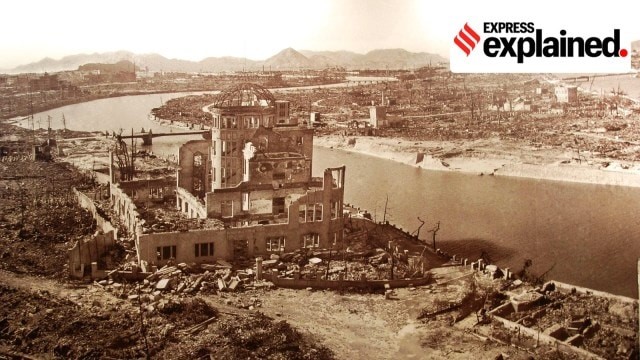
- 24 Oct 2024
In News:
The Nobel Peace Prize has been awarded to Nihon Hidankyo, an organisation of survivors of the Hiroshima-Nagasaki bombings. In doing so, the Nobel Committee has highlighted the power of their testimonies and the need for disarmament.
Key Points about Nihon Hidankyo and the Hibakusha Movement
- Nihon Hidankyo:
- Established on August 10, 1956, as the nation-wide organization for survivors of the Hiroshima and Nagasaki bombings.
- Focuses on the welfare of Hibakusha (A-bomb survivors), promoting nuclear disarmament, and advocating for compensation for victims.
- Works to share the stories and experiences of Hibakusha, both within Japan and globally.
- Hibakusha (Bomb-affected People):
- Survivors of the atomic bombings of Hiroshima and Nagasaki in 1945.
- Played a pivotal role in the global nuclear disarmament movement.
- Their testimonies have helped create the "nuclear taboo," ensuring nuclear weapons have not been used since 1945.
Role of Hibakusha in Nuclear Disarmament
- Global Impact:
- The bombings ignited a global movement for nuclear disarmament.
- Hibakusha's advocacy has highlighted the human cost of nuclear weapons, shaping international policy and promoting the nuclear taboo.
- Nihon Hidankyo’s Advocacy:
- The organization has been instrumental in documenting the effects of nuclear weapons and advocating for their abolition.
- Testimonies from Hibakusha have been key in raising awareness about the catastrophic humanitarian consequences of nuclear warfare.
Nobel Committee's Recognition and Current Nuclear Challenges
- Recognition of Hibakusha's Work:
- The Nobel Committee awarded the Peace Prize to Nihon Hidankyo for its role in promoting nuclear disarmament and for contributing to the nuclear taboo.
- The nuclear taboo is under increasing pressure as new countries seek nuclear weapons and existing powers modernize their arsenals.
- Current Nuclear Landscape:
- The US and Russia continue to maintain large nuclear stockpiles, with the US planning to spend over $1 trillion on upgrading its nuclear capabilities by the 2040s.
- New Threats: Geopolitical tensions, including regional conflicts, raise concerns about the resurgence of nuclear arms races.
Previous Nobel Peace Prizes for Disarmament
- Past Laureates:
- 1974: Former Japanese Prime Minister Eisaku Sato awarded for Japan's commitment to non-nuclear weapons policy.
- 2017: International Campaign to Abolish Nuclear Weapons (ICAN) awarded for its efforts to draw attention to the humanitarian consequences of nuclear weapons and push for a nuclear ban treaty.
- Link with Alfred Nobel’s Vision:
- Alfred Nobel, the founder of the Peace Prize, made his fortune with the invention of dynamite and sought to use his wealth to promote peace, especially through disarmament.
India-Pakistan Kartarpur Corridor Agreement Renewal
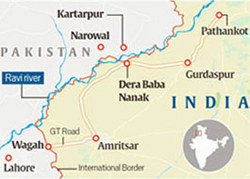
- 23 Oct 2024
In News:
- India and Pakistan have extended the Sri Kartarpur Sahib Corridor Agreement for another five years (until 2029).
- Purpose: The extension ensures uninterrupted operation of the corridor, allowing Indian pilgrims to visit Gurdwara Darbar Sahib Kartarpur in Pakistan.
- Significance: The extension reflects continued cooperation between India and Pakistan, with potential implications for improving bilateral relations.
Background of Kartarpur Corridor:
- Inception: The agreement was first signed on October 24, 2019, to allow visa-free access for Indian pilgrims to Gurdwara Darbar Sahib Kartarpur near Narowal in Pakistan.
- Pilgrimage Details:
- Eligibility: Indian nationals and Overseas Citizens of India (OCI) cardholders can visit the gurdwara on a daily basis.
- Return on Same Day: Pilgrims must return on the same day.
- No Religious Restrictions: Pilgrims of any faith can use the corridor.
- Capacity: Up to 5,000 pilgrims per day can visit the gurdwara.
- Historical Importance: The corridor facilitates the Sikh community's access to a key religious site, located just 4.7 km from the India-Pakistan border.
- Service Charge Dispute:
- Pakistan's Service Fee: Pakistan continues to charge a $20 service fee (approx. ?1,680) per pilgrim, which India has consistently urged Pakistan to waive.
- Pakistan’s Justification: Pakistan maintains the fee to cover the $17 million spent on refurbishing the gurdwara and developing infrastructure for the corridor.
- Geopolitical Context and Timing:
- Recent Developments: The agreement renewal follows External Affairs Minister S. Jaishankar’s visit to Pakistan to attend the Shanghai Cooperation Organization (SCO) Council of Heads of Government meeting.
- Improved Bilateral Relations: Jaishankar’s visit marked the first visit by an Indian foreign minister to Pakistan in nearly nine years, signaling potential thaw in relations, despite the lack of formal bilateral dialogue.
- Strategic and Religious Importance:
- Religious Diplomacy: The Kartarpur Corridor is viewed as a confidence-building measure and a symbol of religious diplomacy, particularly for the Sikh community.
- Historical Legacy: The corridor links Gurdwara Darbar Sahib Kartarpur in Pakistan to Gurdwara Dera Baba Nanak in India, facilitating access to a site of immense religious significance for Sikhs.
- Implications for India-Pakistan Relations:
- No Formal Bilateral Talks: Despite the successful renewal of the agreement, formal talks between India and Pakistan remain suspended, particularly after India’s revocation of Article 370 in Jammu and Kashmir in 2019, which led to a diplomatic freeze.
- Pakistan's Diplomatic Stance: Pakistan had recalled its high commissioner from India in August 2019, and tensions have remained high since then.
- Potential for Future Engagement:
- Diplomatic Channels Opened: The renewal of the Kartarpur agreement and Jaishankar’s visit suggest that diplomatic channels are still open, and there may be scope for further engagement if both sides take steps to address outstanding issues.
IAEA’s 2024 Climate Change and Nuclear Power Report
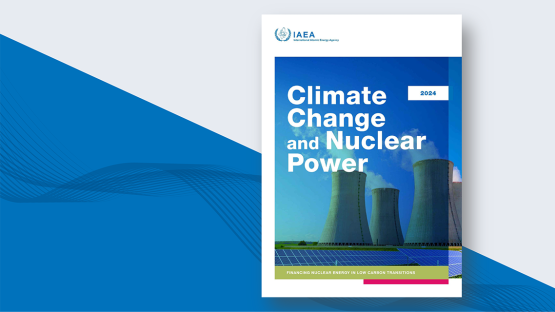
- 22 Oct 2024
In News:
- The 2024 edition of the IAEA’s Climate Change and Nuclear Power report has been released, highlighting the need for a significant increase in investment to achieve goals for expanding nuclear power.
- The new report was launched last week on the margins of the Clean Energy Ministerial (CEM) in Brazil.
Key Highlights:
- Nuclear Power's Role in Climate Change Mitigation:
- Nuclear energy is gaining global interest as nations seek to enhance energy security and decarbonize economies.
- To meet net-zero emissions by 2050, nuclear power is projected to play a pivotal role, with a projected capacity increase of 2.5 times the current level by mid-century in the IAEA's high case scenario.
- Investment Needs for Nuclear Expansion:
- Annual investment required to meet the IAEA's high case scenario (2050 nuclear capacity) is USD 125 billion, a significant increase from USD 50 billion annually from 2017-2023.
- If the aspirational goal to triple nuclear capacity (as pledged by over 20 countries at COP28) is to be met, USD 150 billion annually would be necessary.
- Challenges in Financing: Upfront capital for nuclear power plants is expensive, posing challenges, especially in market-driven economies and developing countries.
- Private Sector and Multilateral Support:
- The private sector will need to play a larger role in financing nuclear projects.
- The IAEA is engaging with multilateral development banks to improve financing options for developing countries to invest in nuclear energy.
- Private finance initiatives: In September 2024, 14 major financial institutions signaled readiness to help fund nuclear newbuild projects.
- Nuclear Financing at Clean Energy Ministerial (CEM):
- The IAEA report was launched during the 15th CEM in Brazil, a high-level forum for advancing clean energy technologies.
- Key stakeholders from Brazil, the IAEA, the International Energy Agency (IEA), and the U.S. discussed strategies for securing nuclear power financing, especially in the context of COP29 (2024) where clean energy financing will be a key focus.
- Nuclear Energy in the EU’s Sustainable Financing:
- The EU taxonomy for sustainable activities now includes nuclear power, facilitating the issuance of green bonds for nuclear projects in Finland and France (2023).
- EDF received €4 billion in green bonds and around €7 billion in green loans (2022-2024).
- Investment in Nuclear Power:
- To meet global climate goals, nuclear power capacity must increase by 1.8 times by 2035.
- Effective financing mechanisms are crucial to scale up nuclear power and develop the workforce and supply chains needed for the energy transition.
- Policy Reform and International Partnerships:
- The report advocates for policy reforms and international partnerships to bridge the financing gap and accelerate nuclear power deployment, particularly in emerging markets and developing economies.
- Focus on technologies such as small modular reactors (SMRs), which could play a role in the energy transition.
- Key Areas to Support Nuclear Growth:
- Robust regulatory frameworks and new delivery models are essential to unlock investments.
- Development of skilled labor and effective stakeholder engagement is crucial for the expansion of nuclear energy.
- Energy System Modelling and Planning:
- The IAEA’s energy system modelling tools assist countries like Brazil in planning nuclear power projects, including cost analyses for electricity generation and financing strategies.
Role of the International Atomic Energy Agency (IAEA):
- Mandate: The IAEA is the leading international body for promoting the safe, secure, and peaceful use of nuclear energy and technologies.
- Functions:
- Nuclear safeguards: Ensuring nuclear activities remain peaceful and preventing the diversion of nuclear materials for weapons purposes.
- Assisting member states with technical support, knowledge sharing, and strengthening nuclear safety and security.
- The IAEA also supports capacity-building and emergency response in case of nuclear or radiological incidents.
- Structure:
- The IAEA General Conference is made up of all 178 member states, meeting annually to approve budgets and policies.
- The Board of Governors (35 members) meets several times a year to oversee the agency's activities and appointments.
- Headquarters: Vienna, Austria
- The IAEA is part of the United Nations family, reporting to both the UN General Assembly and the Security Council.
Russia's Izdeliye 305 (LMUR) Missile

- 21 Oct 2024
In News:
Russian state corporation Rostec has claimed that its Light Multipurpose Guided Rocket, also known as Izdeliye 305 or “Product 305,” has demonstrated remarkable resistance to jamming and interference on the battlefield in Ukraine.
Missile Overview
- Name: Izdeliye 305 (Product 305), also known as LMUR (Light Multipurpose Guided Rocket)
- Primary Use: Deployed by Russia’s Mi-28NM and Ka-52M attack helicopters.
- Function: Designed to target and destroy armored vehicles, fortifications, pillboxes, and watercraft with high precision.
Key Features
- Sniper-Like Accuracy: The missile is touted for its exceptional precision in targeting, making it one of Russia’s most successful guided weapons.
- Resistance to Jamming: The missile’s control channel has shown remarkable resistance to enemy electronic warfare (EW) systems, making it effective even in contested environments.
- No instances of the missile's control channel being suppressed during the ongoing Ukraine conflict.
- Versatile Guidance Systems: The missile operates in several modes:
- Fire-and-Forget: The missile locks onto the target before launch and operates autonomously post-launch.
- Remote Control Mode: The operator guides the missile to the target after it locks onto coordinates and transmits live imagery to the operator’s screen.
- Inertial + Homing Mode: The missile initially flies inertially toward target coordinates, then activates its homing system for final target guidance.
- High Explosive Warhead: Equipped with a 25-kg high-explosive fragmentation warhead, the LMUR is effective against a variety of targets.
Technical Specifications
- Weight: 105 kg (231 lbs)
- Range: Up to 9 miles, double the range of traditional Russian anti-tank missiles, providing the tactical advantage of engaging from beyond line-of-sight.
- Warhead: 25 kg high-explosive fragmentation for effective target destruction.
- Guidance: A combination of inertial navigation, satellite positioning, thermal imaging, and a two-way communication channel for real-time control.
Deployment and Use
- Helicopter Integration: Primarily used on Mi-28NM and Ka-52M attack helicopters, and also on the Mi-8MNP-2 for special operations.
- Combat Experience:
- The missile was actively used in Ukraine where it played a key role in countering Ukraine’s NATO-backed counteroffensive operations.
- It was previously tested in Syria against various targets, showcasing its capabilities before full operational deployment in 2022.
Significance in Ukraine Conflict
- Impact on Ukrainian Forces: The missile’s long range and resistance to EW have made it a critical component of Russia’s aerial operations, hampering Ukraine’s battlefield progress, particularly against heavily fortified positions and NATO-backed counteroffensive efforts.
Strategic Advantage: The missile’s ability to engage targets from a distance while evading jamming attempts gives it a significant edge in modern warfare.
Naseem-Al-Bahr 2024
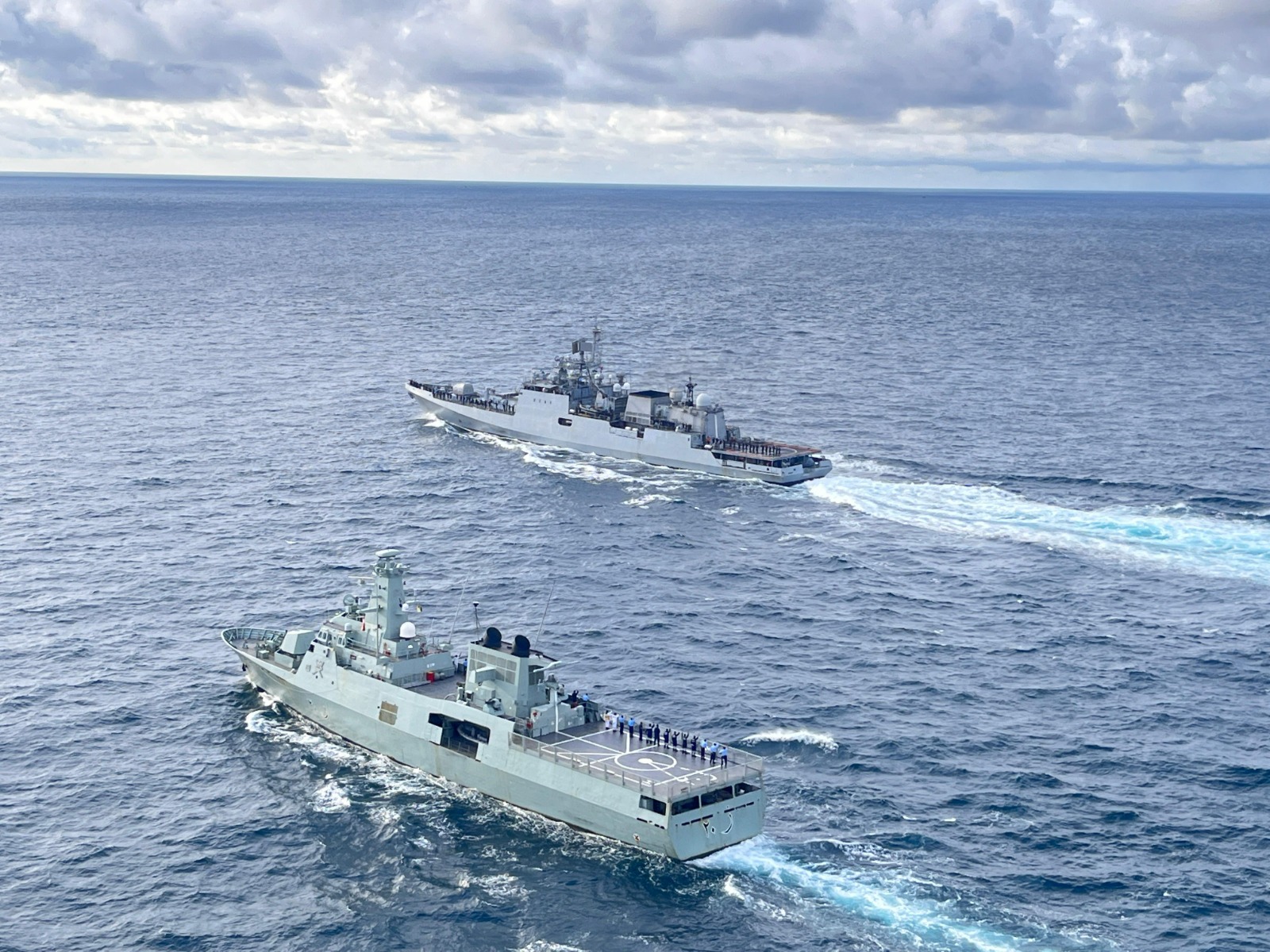
- 20 Oct 2024
In News:
Indo-Oman bilateral naval exercise Naseem-Al-Bahr was held in Goa from October 2024.
Naseem-Al-Bahr Exercise Overview
- Indian and Omani Participants:
- Indian Navy: INS Trikand (warship) and Dornier Maritime Patrol Aircraft.
- Royal Navy of Oman: Vessel Al Seeb.
- Initiation: Launched in 1993, marking a long-standing strategic partnership between India and Oman.
- Structure: The exercise is conducted in two phases:
- Harbour Phase:
- Professional Interactions: Subject Matter Expert Exchanges (SMEE), planning conferences.
- Social & Sports Engagements: Informal activities to foster mutual understanding.
- Sea Phase:
- Naval Operations:
- Gun firings at surface inflatable targets.
- Close-range anti-aircraft firings.
- Replenishment at Sea Approaches (RASAPS).
- Helicopter Operations: INS Trikand’s helicopter performed cross-deck landings and Vertical Replenishment (VERTREP) with RNOV Al Seeb.
- Aircraft Support: Dornier aircraft provided Over-the-Horizon Targeting (OTHT) data to enhance operational coordination.
- Naval Operations:
- Harbour Phase:
Key Highlights of the 2024 Exercise
- Interoperability: The exercise focused on improving operational coordination and enhancing mutual understanding of naval practices.
- Cohesion: The Indian Navy Sea Riders embarked on RNOV Al Seeb to further strengthen the bilateral relationship.
Strategic Significance
- Strengthening Ties: Naseem-Al-Bahr reaffirms the strong strategic relationship between India and Oman.
- Regional Collaboration: This exercise exemplifies India's growing collaboration with like-minded nations in the Indian Ocean Region (IOR).
- Broader Defence Relations:
- Oman is the first GCC country to conduct such bilateral naval exercises with India.
- Both countries also engage in other defence exercises:
- Army: Al Najah.
- Air Force: Eastern Bridge.
Trade Relations Between India and Oman (2022):
- Oil: India is the second-largest market for Oman's crude oil exports, following China.
- Non-oil Exports: India is Oman's fourth-largest market for non-oil exports, after UAE, US, and Saudi Arabia.
- Imports: India is the second-largest source of Oman's imports, following the UAE.
- Ongoing Trade Agreement: Both nations are currently negotiating a trade agreement to further boost bilateral economic cooperation.
Musaned Digital Platform

- 19 Oct 2024
In News:
Saudi Arabia Launches Musaned Digital Platform to Ensure Wage Protection for Foreign Workers.
Key Highlights:
- Purpose of Musaned:
- Musaned is a digital platform launched by Saudi Arabia to ensure wage protection and improve working conditions for foreign workers, particularly those in domestic (household) employment.
- The platform aims to safeguard workers' rights, create a stable working environment, and reduce illegal immigration.
- Coverage:
- The platform benefits foreign workers from 10 African countries (including Sudan, Ethiopia, Kenya) and 9 Asian countries (including India, Bangladesh, Pakistan, Vietnam, the Philippines, and Sri Lanka).
- Key Features:
- Employment Contract Access: Workers can check and track their employment contracts and receive updates via the Musaned labour app.
- Financial Transaction Tracking: The platform monitors financial transactions between employers and foreign workers, ensuring employers meet their contractual obligations.
- Integration with Benefits: Musaned can be linked to contract insurance and health benefits, providing additional protection for workers.
- Objectives:
- Wage Protection: Ensures timely and fair wages for foreign workers.
- Human Rights Protection: Promotes human rights by holding employers accountable for fulfilling their obligations.
- Vision 2030 Alignment: Supports Saudi Arabia’s Vision 2030 by improving the work environment and contributing to legal labor migration.
- Impact:
- The platform is expected to help secure workers’ rights, especially for domestic workers, and provide a more transparent, accountable framework for employment relations in the country.
Musaned is a significant step by Saudi Arabia to enhance the security and welfare of foreign workers, aligning with the Kingdom's broader goals of economic reform and social development under Vision 2030. The platform will provide greater transparency, protect workers’ rights, and contribute to a more regulated and sustainable labor market.
Colombo Security Conclave
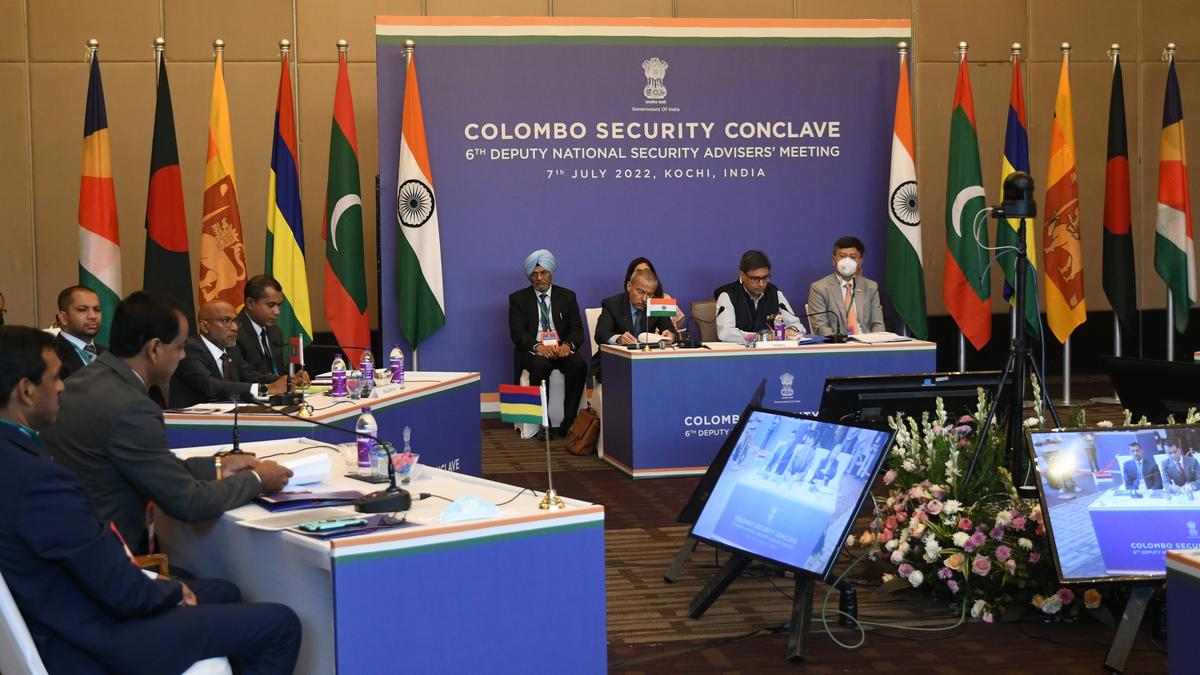
- 11 Oct 2024
In News:
The Colombo Security Conclave (CSC) reached a milestone on August 30, 2024 with India, Sri Lanka, the Maldives and Mauritius signing a Charter and a memorandum of understanding, for the establishment of the CSC secretariat.
Key Facts:
Background of CSC:
- Originally called the NSA Trilateral on Maritime Security, the CSC was established in 2011 among India, Sri Lanka, and the Maldives. The initiative aimed to bolster maritime security in the Indian Ocean Region.
Membership:
- The founding members include India, Sri Lanka, and the Maldives. Mauritius joined in 2022, and Bangladesh became a member in 2024. Seychelles participates as an observer state.
Goals of CSC:
The CSC aims to foster cooperation in five main areas:
- Maritime safety and security
- Counterterrorism and prevention of radicalization
- Combating trafficking and transnational organized crime
- Cybersecurity and safeguarding critical infrastructure
- Humanitarian assistance and disaster relief
Defence Exercises:
- In November 2021, India, Sri Lanka, and the Maldives held Exercise Dosti XV in the Maldives, marking their first joint military exercise in the Arabian Sea under the CSC framework.
UK-Mauritius Treaty on Chagos Archipelago
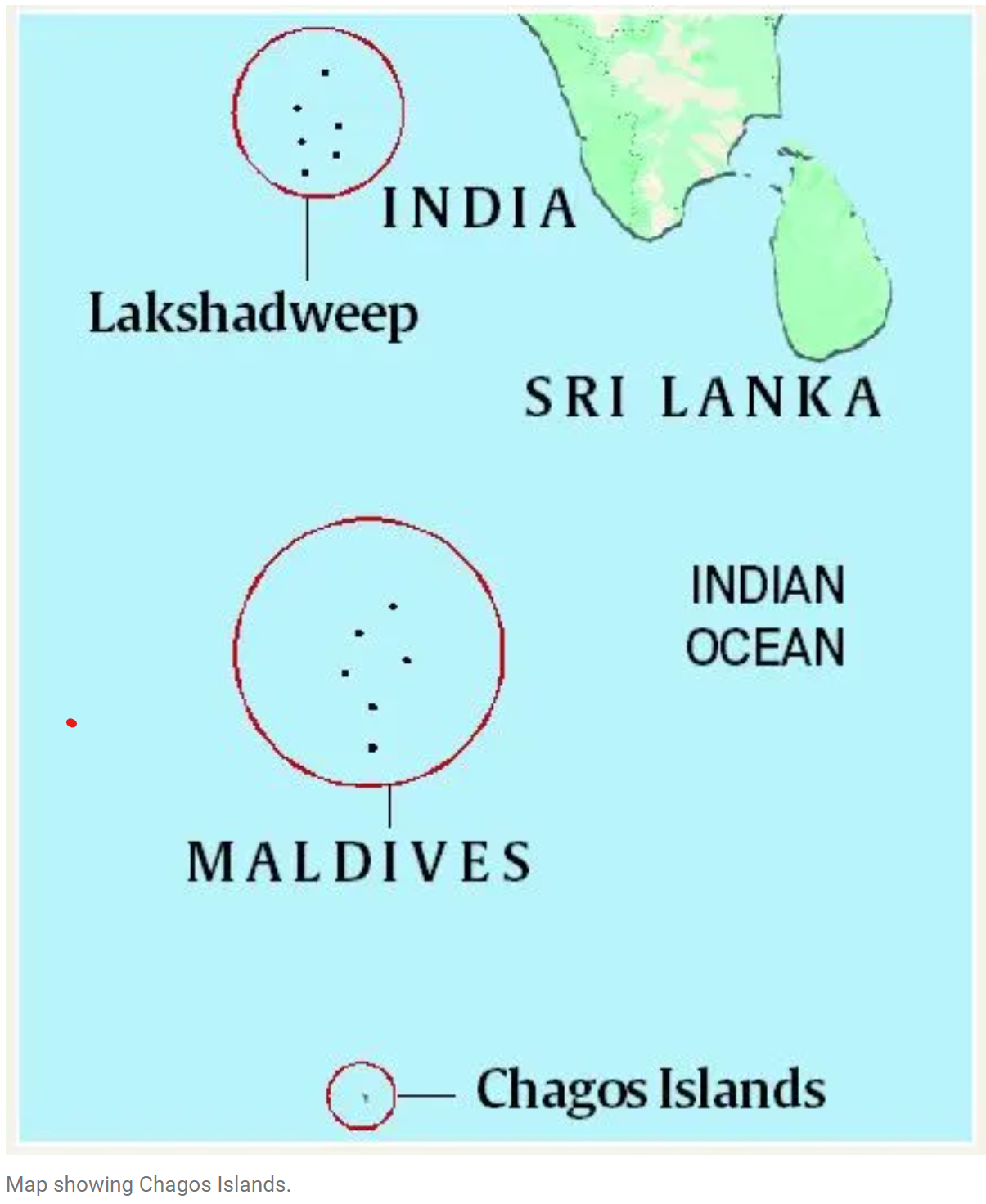
- 08 Oct 2024
In News:
The United Kingdom said it would cede sovereignty of the strategically important Chagos Islands to Mauritius, calling it a “historic political agreement”. The UK has long controlled Chagos and the Diego Garcia military base located there, jointly operating it with the United States.
Background of the Chagos Archipelago
Historical Context
- The Chagos archipelago consists of 58 islands located about 500 km south of the Maldives.
- Initially uninhabited, the islands were populated in the late 18th century through the importation of slave labor.
- The islands were ceded to Britain from France in 1814, and in 1965, the UK established the British Indian Ocean Territory (BIOT), which includes Chagos.
Controversy Over Sovereignty
- Mauritius, a former British colony, claims that the detachment of Chagos from its territory during its independence in 1968 was illegal.
- The UK compensated Mauritius with a grant but retained control, establishing a military base on Diego Garcia.
Strategic Importance of Diego Garcia
Military Significance
- Diego Garcia has been a crucial U.S. military base since its operational status began in 1986.
- It played a key role in U.S. military operations during conflicts in the Gulf, Iraq, and Afghanistan.
- The base enables rapid response to crises and supports regional security, especially in light of U.S. interests in monitoring key trade routes like the Malacca Strait.
Geopolitical Implications
- The presence of the U.S. military in the Indian Ocean is vital for countering security threats, particularly regarding China's growing influence.
Recent Developments: The UK-Mauritius Agreement
Key Features of the Treaty
- On October 3, 2023, the UK agreed to cede sovereignty of the Chagos Islands to Mauritius, marking a significant political shift.
- The treaty allows Mauritius to resettle Chagossians (excluding Diego Garcia) and establishes a trust fund for their benefit.
- Despite this, the UK retains control over Diego Garcia for an initial period of 99 years.
Implications of the Agreement
- The resolution of the sovereignty issue may strengthen Western commitments to a stable and free Indo-Pacific region.
- If unresolved, tensions could push Mauritius toward seeking alliances with alternative powers like China.
India’s Position and Interests
Support for Mauritius
- India has historically supported Mauritius in its claims over Chagos, reflecting its stance against colonial legacies.
- In 2019, India voted in favor of Mauritius at the UN General Assembly regarding the Chagos dispute.
Strategic Partnerships
- With increasing Chinese assertiveness in the Indian Ocean, India has been strengthening its ties with Mauritius.
- Recent initiatives include the inauguration of an India-built airstrip and jetty in Agaléga, enhancing connectivity and support for Mauritius.
Conclusion
The UK-Mauritius treaty over the Chagos Archipelago marks a significant turning point in colonial legacies and geopolitical alliances in the Indian Ocean. For India, supporting Mauritius aligns with its broader strategic interests and enhances its influence in a region marked by competing global powers. As the dynamics evolve, India's role in fostering regional stability and partnerships will be crucial.
India’s Tripartite Agreement
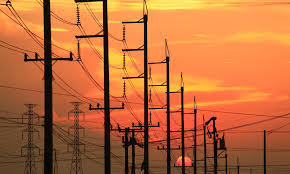
- 07 Oct 2024
In News:
Nepal, India, and Bangladesh have signed a tripartite agreement to facilitate cross-border electricity trade, enabling Nepal to export surplus electricity to Bangladesh via India.
Key Details of the Agreement
- Export Period: The agreement allows for electricity exports from June 15 to November 15 each year.
- Initial Export Volume: In the first phase, Nepal will export 40 MW of hydroelectricity to Bangladesh through Indian territory.
- Electricity Rate: The fixed rate per unit of electricity is set at 6.4 cents.
- Projected Revenue: Nepal is expected to earn approximately $9.2 million annually from this trade.
This agreement aims to enhance regional cooperation in energy trade and support sustainable development in the participating countries.
Shanghai Cooperation Organisation (SCO)
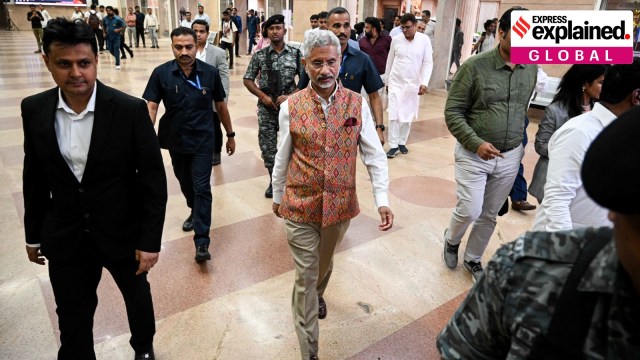
- 06 Oct 2024
In News:
- External Affairs Minister S. Jaishankar will attend the Shanghai Cooperation Organisation (SCO) Heads of Government meeting in Islamabad on October 15-16, 2023.
- This marks the first visit by an Indian External Affairs Minister to Pakistan since Sushma Swaraj in 2015.
Context of the Visit:
- The visit is primarily for the SCO meeting, reflecting India's focus on regional cooperation mechanisms.
- No bilateral meetings have been scheduled as of now, although Jaishankar's presence is based on "reciprocity" following Pakistan's participation in an earlier SCO meeting in India.
SCO Overview:
- Established on June 15, 2001, in Shanghai; evolved from the "Shanghai Five" formed in 1996.
- Original members included China, Russia, Kazakhstan, Kyrgyzstan, Tajikistan, and later Uzbekistan.
- Current members: India, Pakistan, Iran, and others, with Afghanistan and Mongolia holding Observer Status.
Significance of the SCO:
- Focuses on security cooperation, primarily among Asian nations.
- Seen as an alternative to Western international frameworks, especially with heavyweights like Russia and China positioning against US influence.
- India's inclusion alongside Pakistan in 2017 reflects the geopolitical jostling between Russia and China.
Geopolitical Dynamics:
- While SCO promotes cooperation, underlying tensions remain, particularly between India and Pakistan, and India and China.
- The organization has limited tangible outcomes due to member states' rivalries and differing interests.
India's Objectives in SCO:
- Provides a platform for enhancing relations with Central Asian countries, addressing common security concerns.
- Involves participation in the Regional Anti-Terrorist Structure (RATS) to combat terrorism and drug trafficking.
India-Pakistan Relations:
- Jaishankar's visit is seen in light of ongoing tensions; India shares difficult relations with both China and Pakistan.
- India canceled a summit under its presidency last year, opting for a virtual format instead.
Implications for Regional Politics:
- The visit comes shortly after the Jammu and Kashmir Assembly elections, with potential implications for India-Pakistan ties.
- Despite attending the SCO meeting, there is little expectation of progress in the India-Pakistan peace process.
- Recent statements from the Indian government criticize Pakistan for hosting wanted individuals, reflecting ongoing diplomatic tensions.
Strategic Importance:
- Participation in SCO allows India to engage with key regional players, including Russia, China, and Central Asian leaders.
- The meeting serves as preparation for India's participation in upcoming BRICS discussions, emphasizing the interconnectedness of these groupings.
India-U.S. MoU on Critical Minerals Supply Chains
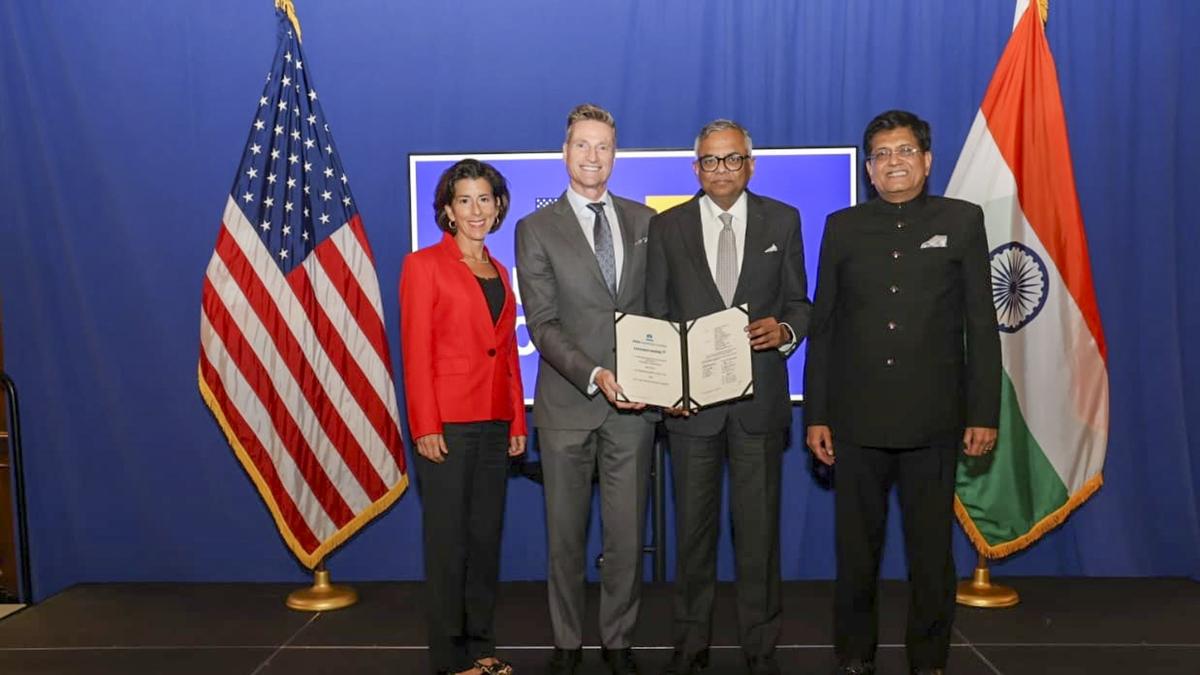
- 05 Oct 2024
In News:
- The sixth Commercial Dialogue took place in Washington on October 4, 2024, led by Indian Union Minister of Commerce Piyush Goyal and U.S. Commerce Secretary Gina Raimondo.
- MoU Signing: A day prior, the leaders signed a memorandum of understanding (MoU) aimed at expanding and diversifying critical minerals supply chains to enhance resilience.
- Focus Areas:
- Identification of equipment, services, policies, and best practices for the development of U.S. and Indian critical minerals, covering:
- Exploration
- Extraction
- Processing and refining
- Recycling and recovery
- Identification of equipment, services, policies, and best practices for the development of U.S. and Indian critical minerals, covering:
- Context: This agreement follows China's export restrictions on gallium and germanium, critical for the semiconductor industry, and its ban on technology related to rare earth magnets and critical materials extraction.
- Strategic Goals:
- Promote open supply chains, technology development, and investment flows for green energy.
- Explore collaboration with other mineral-rich countries, particularly in Africa and South America.
- Progress on Semiconductor Supply Chains:
- Continued efforts to establish resilient semiconductor supply chains since the previous MoU.
- Completion of a "readiness assessment" by the U.S. Semiconductor Industry Association and India Electronics Semiconductor Association.
- Commitment to foster investments, joint ventures, and technology partnerships.
- Innovation Handshake: Success of roundtables in San Francisco and New Delhi aimed at enhancing innovation ecosystems and startup collaboration.
- Strategic Clean Energy Partnership: Discussions from the EIN Roundtable in March 2024 informed the U.S.-India Strategic Clean Energy Partnership meeting.
- IPEF Supply Chain Agreement: Significant progress noted in the IPEF ministerial meeting, focusing on semiconductors, chemicals, and critical minerals, particularly batteries and healthcare products.
- Future Collaborations:
- Focus on expanding U.S. Department of Commerce presence in India with approximately 70 Foreign Commercial Service staff.
- Plans for a U.S. trade mission to India in March 2025 aimed at supporting U.S. SMEs owned by underserved communities.
- Domestic Solar Manufacturing Protection: India reinstated the Approved List of Models and Manufacturers (ALMM) order to protect local solar PV module production against cheaper imports from China.
- Economic Context:
- The Economic Survey 2023-24 highlights China's expanding manufacturing trade surplus and its restrictive actions affecting India's access to solar equipment.
- India’s Production Linked Incentive (PLI) schemes have invested over $4.5 billion to bolster clean energy manufacturing but require additional policies to safeguard these investments.
USCIRF Report on India: Key Highlights
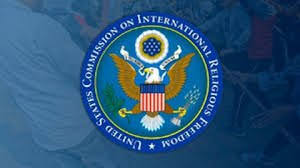
- 04 Oct 2024
In News:
The United States Commission on International Religious Freedom (USCIRF), a Washington DC-based bipartisan U.S. federal government agency, has released a country update on India, flagging “collapsing religious freedom conditions”.
- Agency Overview:
- The United States Commission on International Religious Freedom (USCIRF) is an independent, bipartisan U.S. federal commission established under the 1998 International Religious Freedom Act (IRFA).
- Its primary functions include reviewing global religious freedom violations, providing policy recommendations to U.S. leaders, and publishing annual reports.
- Current Concerns:
- USCIRF's latest report indicates a “collapse” in religious freedom conditions in India, particularly worsening throughout 2024, especially around national elections.
- Legal and Policy Changes:
- Strengthening of discriminatory legislation, including:
- State-level anti-conversion and anti-terrorism laws.
- Implementation rules for the 2019 Citizenship (Amendment) Act (CAA).
- Passage of a State-level Uniform Civil Code (UCC) Bill in Uttarakhand.
- Strengthening of discriminatory legislation, including:
- Violations and Incidents:
- Expropriation of Places of Worship:
- Authorities have facilitated the construction of Hindu temples on former mosque sites.
- Increased attacks on religious minorities, particularly following the consecration of the Ayodhya temple in January 2024.
- Targeting of Religious Minorities:
- Arrests of Christians accused of forced conversions under anti-conversion laws.
- Anti-cow slaughter laws exploited by vigilante groups to target Muslims, Christians, and Dalits, often with little to no legal repercussions for perpetrators.
- Expropriation of Places of Worship:
- Recommendations:
- USCIRF urges the U.S. State Department to designate India as a “Country of Particular Concern” due to severe violations of religious freedom.
About USCIRF
- Composition: Comprised of nine commissioners appointed by the U.S. President or Congressional leaders, supported by non-partisan staff.
- Objective: To monitor and recommend actions on religious freedom violations aligned with international human rights standards.
Colombo Security Conclave (CSC)

- 03 Sep 2024
In News:
The Colombo Security Conclave (CSC) recently marked a significant milestone with the signing of the Charter and the Memorandum of Understanding (MoU) for the establishment of its Secretariat in Colombo. This initiative aims to strengthen regional security collaboration among member states.
Key Features of the Colombo Security Conclave
- Member States: The CSC comprises five member countries:
- India
- Bangladesh
- Sri Lanka
- Maldives
- Mauritius
Additionally, Seychelles participates as an observer nation.
- Core Objectives: The primary goal of the CSC is to enhance regional security by addressing transnational threats and challenges that are common concerns for member states. This includes a collaborative approach to ensure stability and safety in the region.
Origin and Evolution
- The CSC originated as the Trilateral for Maritime Security Cooperation, established through trilateral meetings among National Security Advisors (NSAs) and Deputy NSAs from India, Maldives, and Sri Lanka starting in 2011.
- The initiative faced a setback after 2014 due to heightened tensions between India and the Maldives.
- It was revived and rebranded as the CSC in 2020, expanding its membership to include Mauritius and, more recently, Bangladesh.
Structure and Cooperation
- The conclave facilitates interactions among NSAs and Deputy NSAs of member countries, fostering dialogue and cooperation on security matters.
- Cooperation under the CSC is organized around five key pillars:
- Maritime Safety and Security
- Countering Terrorism and Radicalization
- Combating Trafficking and Transnational Organized Crime
- Cybersecurity and Protection of Critical Infrastructure
- Humanitarian Assistance and Disaster Relief
Permanent Secretariat
- The establishment of a permanent Secretariat in Colombo is expected to enhance coordination and streamline operations among member states, bolstering the efficacy of the CSC in addressing regional security issues.
INDIA DESERVES PERMANENT UNSC SEAT: BHUTAN
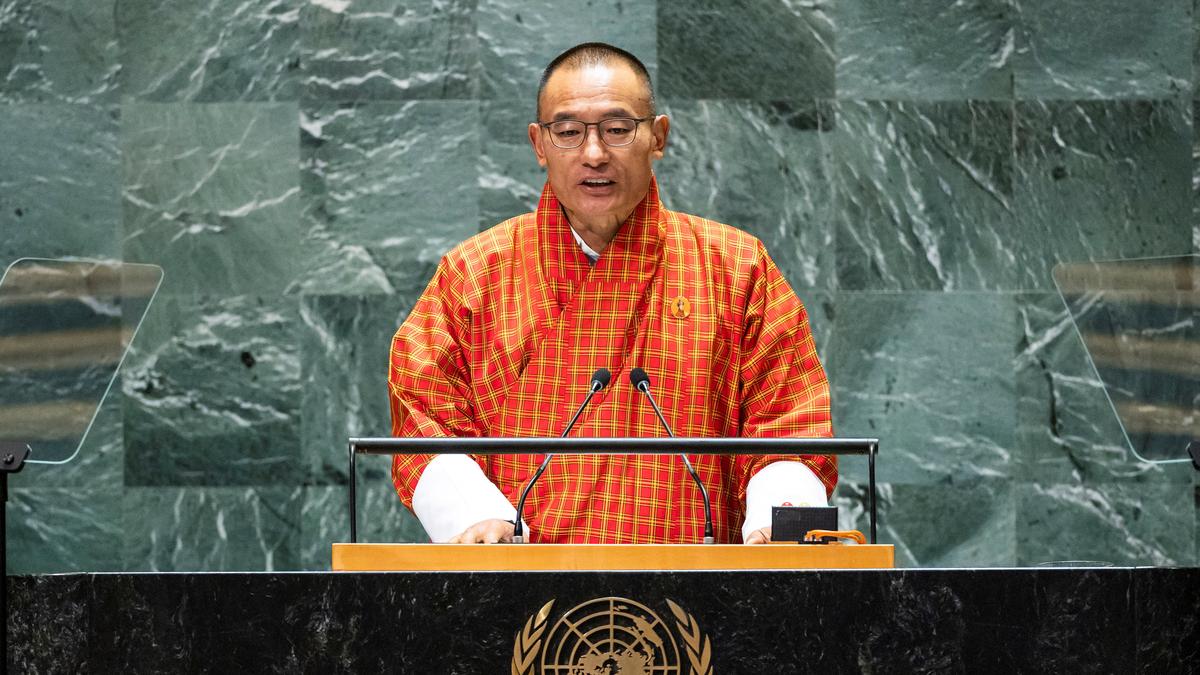
- 30 Sep 2024
In News:
With its significant economic growth and leadership of the Global South, India deserves a permanent seat at the UN Security Council, says Bhutan’s Prime Minister Tshering Tobgay.
Key Highlights:
- Economic Growth: Highlights India’s significant economic growth and its leadership in the Global South as justifications for this status.
- International Backing: India’s bid gains momentum with support from several UN Member States, including France, the UK, and the U.S.
- Need for Reform: Bhutan emphasized that the UNSC is outdated and must evolve to reflect contemporary geopolitical and economic realities.
- Advocacy for Representation: Bhutan has long called for a more representative and effective Security Council, backing India’s inclusion at the high table.
About UN Security Council (UNSC)
- Composition: Total of 15 member states.
- 5 permanent members (P5): China, France, Russia, the United Kingdom, and the United States (with veto rights).
- 10 non-permanent members elected for two-year terms.
- Election of Non-Permanent Members:
- Elected on a regional basis:
- 5 seats for African and Asian states.
- 2 seats for Latin American and Caribbean states.
- 1 seat for Eastern European states.
- 2 seats for Western European and other states.
- Elected on a regional basis:
- Presidency:
- Rotates monthly among members, following the English alphabetical order of country names.
- Primary Functions:
- Maintain international peace and security.
- Investigate and resolve disputes.
- Impose sanctions and authorize the use of force.
- Establish peacekeeping missions.
- Make recommendations to member states.
- Meeting Schedule:
- Regular meetings at UN headquarters in New York.
- Can convene at any time in response to emergencies.
- Decision-Making:
- Requires affirmative votes from at least 9 of the 15 members.
- Any of the P5 can veto resolutions, raising concerns about the Council's effectiveness.
- Subsidiary Bodies:
- Includes committees, working groups, and sanctions committees focused on specific issues like counter-terrorism, nuclear non-proliferation, and peacekeeping operations.
- Reforming the UN Security Council (UNSC)
- Charter Amendments:
- Reforming the UNSC requires amendments to the UN Charter.
- Voting Requirements:
- An amendment must be adopted by a two-thirds majority of the General Assembly.
- It must also be ratified by two-thirds of UN member states, including all permanent members of the UNSC.
- Charter Amendments:
INDIA TO SUPPORT TRINIDAD AND TOBAGO IN DEVELOPING UPI-LIKE PAYMENT SYSTEM

- 29 Sep 2024
In News:
- NPCI International Payments Limited (NIPL) has partnered with Trinidad and Tobago's Ministry of Digital Transformation to create a payment platform for person-to-person and person-to-merchant transactions.
- Modeling on UPI: The new digital payments system will be based on India’s Unified Payments Interface (UPI), which is widely recognized as a leading digital payment solution.
- Role of NPCI: NIPL, a quasi-government body under the Reserve Bank of India, manages India’s retail payment systems, including UPI.
Previous Initiatives
- Global Expansion: Earlier in 2024, NIPL also committed to establishing digital payment systems in Peru and Namibia, leveraging the UPI model.
- Ongoing Talks: NIPL is exploring opportunities with additional countries in Africa and South America to assist in building their payment infrastructures.
Significance:
- UPI has emerged as a transformative force in India's financial landscape, registering nearly 15 billion transactions in August 2024, with an estimated value of USD 245 billion.
- This strategic partnership aims to empower Trinidad and Tobago to establish a reliable and efficient real-time payments platform for both person-to-person (P2P) and person-to-merchant (P2M) transactions, expanding digital payments in the country and fostering financial inclusion.
IBSA (INDIA, BRAZIL, SOUTH AFRICA) GROUPING
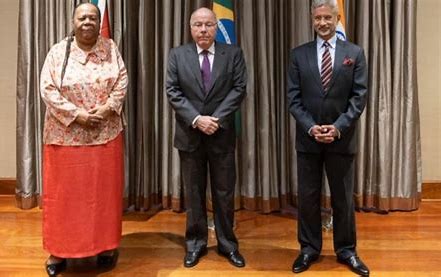
- 28 Sep 2024
In News:
In a significant move for global security, the Foreign Ministers of the IBSA (India, Brazil, South Africa) grouping issued a strong declaration against terrorism during the 79th UN General Assembly in New York. This declaration condemned terrorism in all its forms and reaffirmed the collective responsibility of the international community to eliminate terrorist safe havens worldwide.
Key Points from the IBSA Declaration:
- Universal Threat: The ministers stressed that terrorism is a threat that transcends borders, cultures, and governments.
- Rule of Law: They emphasized that counter-terrorism efforts must adhere to international law, particularly the UN Charter and human rights laws, ensuring civil liberties are respected.
- International Framework: A call was made for establishing a comprehensive international counter-terrorism framework, with the United Nations at its core, to coordinate global efforts against terrorism.
- Cross-Border Security: The declaration highlighted the need for stringent actions against the movement of terrorists and the financing of terrorist networks, condemning groups like Al-Qaeda, ISIS/Daesh, Lashkar-e-Tayyiba (LeT), and Jaish-e-Mohammad (JeM).
- Comprehensive Convention: A renewed commitment to accelerate the adoption of the Comprehensive Convention on International Terrorism at the UN was emphasized, aiming to create a unified legal framework for combating terrorism.
INDIA-UZBEKISTAN BILATERAL INVESTMENT TREATY (BIT)
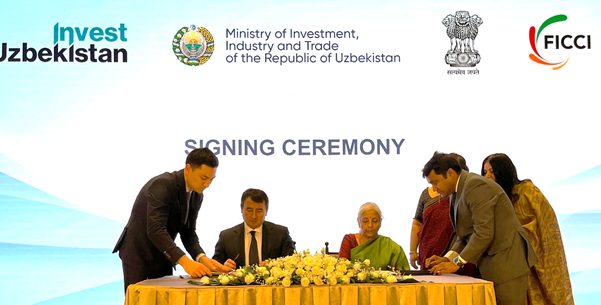
- 28 Sep 2024
In News:
India and Uzbekistan signed the Bilateral Investment Treaty (BIT) aimed at boosting the confidence of investors of both the countries.
Key Highlights:
- Investor Protections:
- Assured Protection: The BIT guarantees protection for investors from both countries, aligning with international standards.
- Minimum Standards: It establishes a minimum standard of treatment and non-discrimination for investors.
- Dispute Resolution: An independent arbitration forum will be available for dispute settlement.
- Investment Safeguards:
- Protection from Expropriation: The treaty safeguards investments from unjust expropriation.
- Transparency and Compensation: Provisions are included for transparency and compensation for losses incurred.
- Regulatory Balance: While protecting investors, the treaty maintains a balance with the state's right to regulate, ensuring adequate policy space for both countries.
Economic Context
- Shared Commitment: The BIT reflects the commitment of both nations to foster economic ties and create a resilient investment environment.
- Expected Outcomes: It is anticipated that the treaty will facilitate increased bilateral investments, benefiting businesses and economies in India and Uzbekistan.
- Current Investment Landscape: As of August 2024, Overseas Direct Investment (ODI) from India to Uzbekistan stands at $20 million, with Indian investments notable in sectors such as pharmaceuticals, amusement parks, automobile components, and hospitality.
India and Bilateral Investment Treaties
BITs are reciprocal agreements between two countries designed to promote and protect foreign private investments within each other's territories.
- Key Guarantees Established:
- National Treatment: Foreign investors are treated on par with domestic companies.
- Fair and Equitable Treatment: Investors receive treatment aligned with international law.
- Protection from Expropriation: Limits the ability of a country to seize foreign investments without appropriate compensation.
- Status of BITs in India
- Historical Context:
- Until 2015, India had signed BITs with 83 countries, with 74 currently in force. These agreements were based on the Indian Model BIT established in 1993.
- Revisions and Current Approach: In 2015, India revised its Model BIT text. Since then, India has:
- Signed new BITs/Investment Agreements with four countries.
- Entered negotiations with 37 countries/blocks for new agreements.
- Terminated older BITs with 77 countries, with only six remaining in force.
- Historical Context:
- Key Features of the Revised Model BIT
- Investor Protection:
- Provides robust protection for foreign investors in India and Indian investors abroad.
- Balances investor rights with government obligations.
- Investor Confidence:
- Enhances investor confidence by ensuring non-discriminatory treatment and a level playing field.
- Establishes an independent arbitration forum for dispute resolution.
- Investment Definition:
- Adopts an "enterprise"-based definition of investment to encompass various forms of investment.
- Dispute Settlement Provisions:
- Refined Investor-State Dispute Settlement (ISDS) provisions require investors to exhaust local remedies before seeking international arbitration.
- Limits arbitration tribunals to awarding monetary compensation only.
- Regulatory Authority Preservation:
- Excludes government procurement, taxation, subsidies, compulsory licenses, and national security from BIT coverage, ensuring the government retains regulatory authority.
- Investor Protection:
- Strategic Impact
- Preferred FDI Destination: The revised BIT aims to position India as a preferred destination for foreign direct investment (FDI).
- Protection of Outbound FDI: It also focuses on safeguarding outbound investments made by Indian entities.
ASIA POWER INDEX
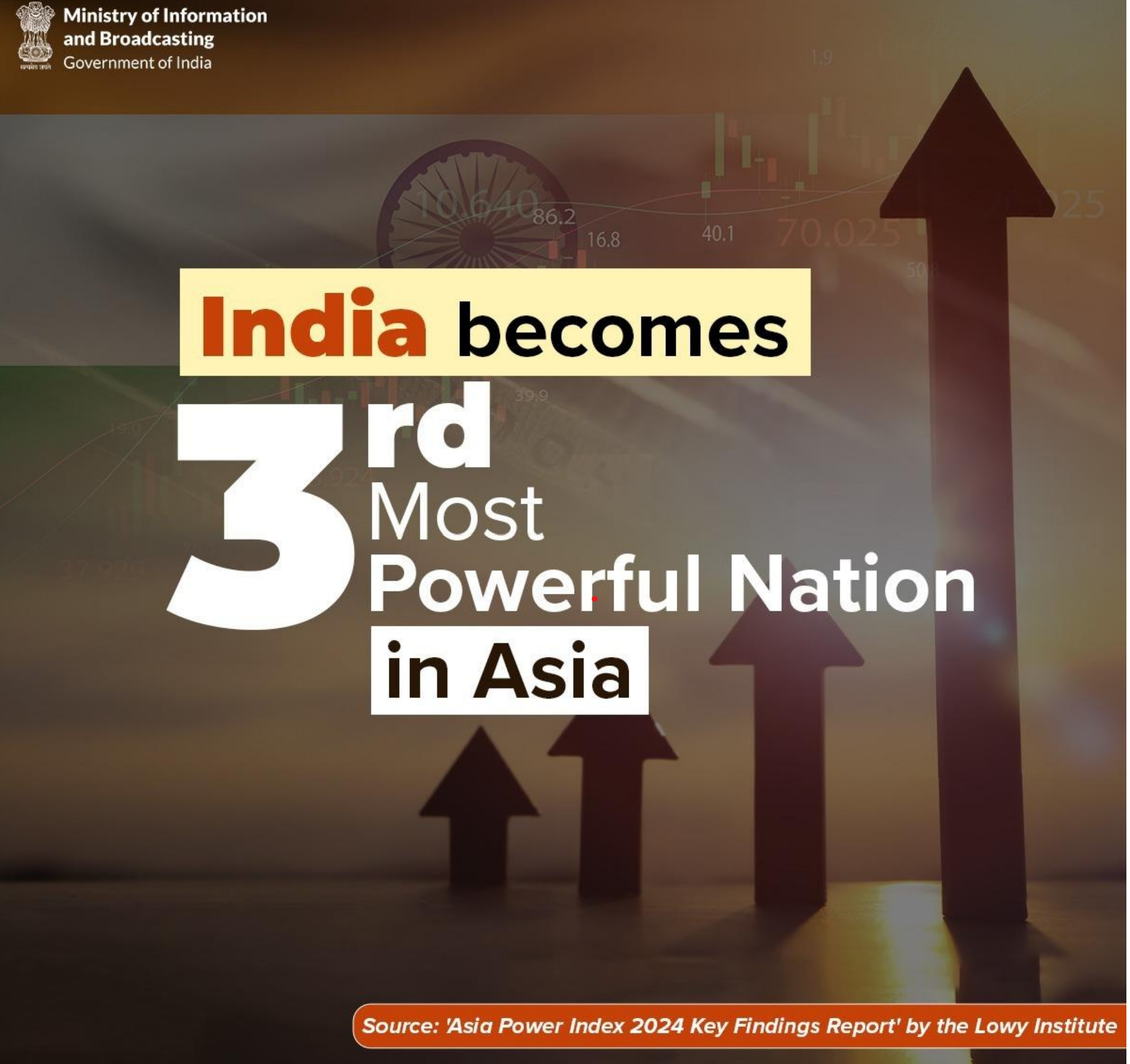
- 26 Sep 2024
In News:
In a major shift, India surpassed Japan to become the third-largest power in the Asia Power Index, reflecting its increasing geopolitical stature. This achievement is driven by India's dynamic growth, youthful population, and expanding economy, solidifying its position as a leading force in the region.
Key Factors Behind India’s Rise:
- Economic Growth: India has shown remarkable post-pandemic economic recovery, contributing to a 4.2-point rise in its Economic Capability. India’s massive population and strong GDP growth reinforce its standing as the world’s third-largest economy in PPP terms.
- Future Potential: India’s Future Resources score increased by 8.2 points, signalling a potential demographic dividend. Unlike its regional competitors, particularly China and Japan, India benefits from a youthful population that will continue to drive economic growth and labour force expansion in the coming decades.
- Diplomatic Influence: Prime Minister Narendra Modi’s leadership has garnered greater international recognition. India’s non-aligned strategic posture has allowed New Delhi to navigate complex international waters effectively. India ranked 6th in terms of diplomatic dialogues in 2023, reflecting its active engagement in multilateral forums.
- Further, India’s large population and economic capabilities offer it substantial promise. India’s score in Cultural Influence has also remained relatively strong, underpinned by its global diaspora and cultural exports.
- In addition, India’s role in multilateral diplomacy and security cooperation has been a point of emphasis. India's participation in dialogues, as well as its leadership in the Quad, has allowed it to play a significant role in regional security dynamics, albeit outside of formal military alliances.
Asia Power Index
- The Asia Power Index, launched by the Lowy Institute in 2018, is an annual measure of power dynamics in the Asia-Pacific region.
- It evaluates 27 countries across the Asia-Pacific, examining their ability to shape and respond to the external environment.
- The 2024 edition offers one of the most comprehensive assessments of power distribution in the region to date. Timor-Leste has been included for the first time, reflecting its growing importance in Southeast Asia.
- The Index focuses on both the material capabilities of states and the influence they exert on the international stage.
Criteria and Parameters of Power Measurement
Power in the Asia Power Index is divided into resource-based and influence-based determinants:
- Resource-Based Determinants:
- Economic Capability: The core economic strength of a country, measured through indicators like GDP at purchasing power parity (PPP), technological sophistication, and global economic connectivity.
- Military Capability: Evaluates conventional military strength based on defense spending, armed forces, weapon systems, and signature capabilities like long-range power projection.
- Resilience: The internal capacity to deter threats to state stability, including institutional robustness, geopolitical security, and resource security.
- Future Resources: Forecasts the future distribution of resources, including economic, military, and demographic factors projected for 2035.
- Influence-Based Determinants:
- Economic Relationships: The capacity to exercise leverage through trade, investment, and economic diplomacy.
- Defense Networks: The strength of alliances and partnerships, measured through military cooperation and arms transfers.
- Diplomatic Influence: The extent of a country's diplomatic reach, participation in multilateral forums, and foreign policy ambition.
- Cultural Influence: The ability to shape international public opinion through cultural exports, media, and people-to-people ties.
A country's overall power score is derived from a weighted average of these eight measures, encompassing 131 individual indicators. The results offer a nuanced understanding of how countries convert their resources into influence within the Asia-Pacific.
China test-fires an intercontinental ballistic missile into the Pacific Ocean
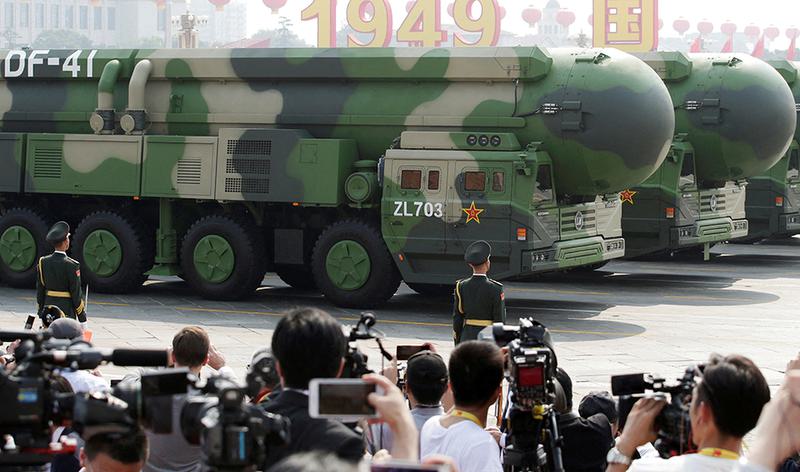
- 26 Sep 2024
In News:
China stated that it test-launched an intercontinental ballistic missile, firing it into the Pacific Ocean in its first such exercise in decades.
- Launch Details:
- The missile carried a dummy warhead and fell into a designated area in the high seas.
- The specific flight path and landing location were not disclosed.
- Testing Objectives:
- The launch tested weapon performance and troop training levels, achieving its expected objectives.
- Historical Context:
- This is the first ICBM test over the Pacific Ocean in over 40 years.
- China's first ICBM, the DF-5, was test-fired in 1980.
- ICBM Specifications:
- The latest ICBM, likely the DF-41, has an estimated range of 12,000 to 15,000 kilometers (7,400 to 9,300 miles), capable of reaching the US mainland.
- Strategic Messaging:
- Analysts interpret the test as a warning to the US, suggesting direct intervention in Taiwan could expose the American homeland.
- The test signals China's ability to engage multiple fronts simultaneously.
- Regional Tensions:
- Recent weeks have seen heightened tensions with Japan, the Philippines, and Taiwan due to military incursions and exercises.
- International Norms:
- There is a global expectation to notify nations of long-range missile launches to avoid miscalculations. China has limited agreements regarding this, primarily with Russia.
- Military Buildup:
- Under Xi Jinping, China has enhanced its nuclear capabilities and revamped the PLA’s Rocket Force.
- Recent satellite imagery indicates the construction of hundreds of ICBM silos in China’s deserts.
- Future Projections:
- As of 2023, China has over 500 operational nuclear warheads, projected to exceed 1,000 by 2030 according to the Pentagon.
- Implications of the Test:
- The ICBM test may be aimed at demonstrating military readiness despite recent corruption scandals within the Rocket Force.
About ICBMs:
- An intercontinental ballistic missile (ICBM) is a long-range ballistic missile system primarily designed for nuclear weapons delivery. They are powerful and destructive weapons, capable of travelling vast distances at incredibly high speeds.
- Key features of ICBMs:
- Range: Range greater than 5,500 kilometres with maximum ranges varying from 7,000 to 16,000 kilometres.
- Speed: ICBMs can travel at speeds exceeding 20,000 kilometres per hour.
- Payload: Typically designed to carry nuclear warheads, though they could potentially be used to deliver other types of weapons, such as chemical or biological weapons.
- Deployment: ICBMs can be launched from silos underground, mobile launchers on land, or submarines at sea.
- Countries having operational ICBMs: Russia, United States, China, France, India, United Kingdom, Israel and North Korea.
ACHIEVING GLOBAL NUCLEAR DISARMAMENT
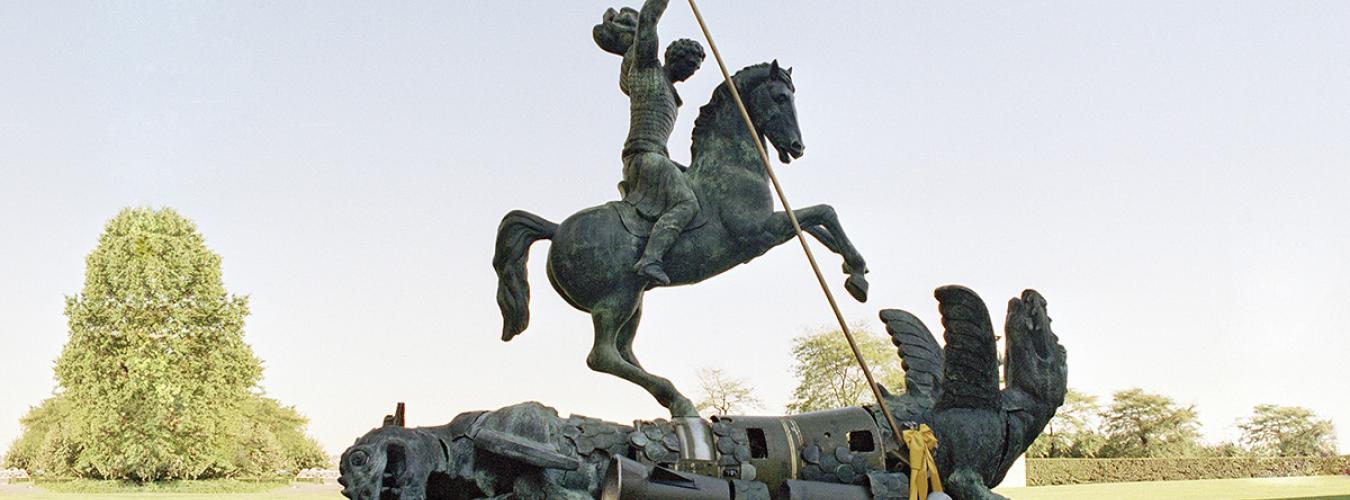
- 26 Sep 2024
Overview
Global nuclear disarmament remains a top priority for the United Nations, initially emphasized in the General Assembly’s first resolution in 1946. Despite historical efforts, approximately 12,100 nuclear weapons still exist today, with ongoing modernization plans in many countries.
Key Historical Milestones
- 1945: Atomic bombings of Hiroshima and Nagasaki, killing an estimated 213,000 people.
- 1946: First UN resolution identifies nuclear disarmament as a key goal.
- 1959: General Assembly endorses the goal of general and complete disarmament.
- 1963: Opening of the Partial Test Ban Treaty.
- 1978: First Special Session of the General Assembly dedicated to disarmament.
- 1996: Comprehensive Nuclear-Test-Ban Treaty opens for signature.
- 2017: Adoption of the Treaty on the Prohibition of Nuclear Weapons.
Recent Developments
- 2019: U.S. withdrawal from the Intermediate-Range Nuclear Forces Treaty.
- 2023: Russia suspends participation in the New START Treaty, raising concerns over arms control.
The International Day for the Total Elimination of Nuclear Weapons
- Established: December 2013, following a high-level meeting on nuclear disarmament.
- Observed: Annually on September 26.
- Purpose: Raise awareness about the dangers of nuclear weapons and promote their total elimination.
Goals of the International Day
- Enhance public education on the humanitarian risks associated with nuclear weapons.
- Mobilize international efforts towards a nuclear-weapon-free world.
Continuing Challenges
- The doctrine of nuclear deterrence remains central to the security policies of nuclear-armed states and their allies.
- No nuclear weapons have been destroyed under a treaty framework, and current disarmament negotiations are stagnant.
- Growing frustration among UN Member States over the slow progress in nuclear disarmament.
INDIA ATTENDS IPEF MINISTERIAL MEETING
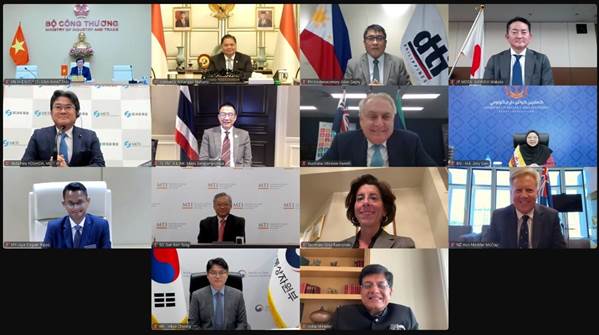
- 25 Sep 2024
In News:
Recently, the Union Commerce and Industry Minister Piyush Goyal joined a virtual meeting of the Indo-Pacific Economic Framework for Prosperity (IPEF) alongside representatives from 13 other partner countries. This meeting marked the third gathering focused on the framework's key pillars: Supply Chain Resilience, Clean Economy, and Fair Economy.
Key Agreements and Future Steps
- Entry into Force of Agreements:
- The IPEF partners celebrated the upcoming implementation of the Clean Economy Agreement and the Fair Economy Agreement on October 11 and October 12, 2024, respectively. These agreements aim to enhance economic cooperation and deliver tangible benefits to member nations.
- Supply Chain Resilience:
- The ministers discussed the progress in operationalizing the Supply Chain Agreement, emphasizing collaborative efforts to create more competitive and resilient supply chains. Key actions include:
- The formation of action plan teams for critical sectors like semiconductors, critical minerals, and chemicals, addressing vulnerabilities revealed during the COVID-19 pandemic.
- India's election as Vice Chair of the Supply Chain Council, which aims to streamline communication and cooperation among member countries.
- The ministers discussed the progress in operationalizing the Supply Chain Agreement, emphasizing collaborative efforts to create more competitive and resilient supply chains. Key actions include:
- Clean Economy Initiatives:
- The Clean Economy Agreement focuses on energy security, climate resilience, and reducing fossil fuel dependence. Ministers acknowledged the advancement of eight Cooperative Work Programs (CWPs) addressing topics such as hydrogen and carbon markets.
- The first IPEF Investor Forum, held in Singapore, facilitated discussions on investment opportunities in climate-friendly technologies.
- Fair Economy Measures:
- The Fair Economy Agreement aims to bolster anti-corruption measures and improve tax administration efficiency. Upcoming workshops will address foreign bribery laws and public procurement oversight.
- India highlighted its own anti-corruption measures and commitment to transparency under Prime Minister Modi's leadership.
About IPEF
Launched on May 23, 2022, in Tokyo, IPEF includes 14 countries: Australia, Brunei, Fiji, India, Indonesia, Japan, South Korea, Malaysia, New Zealand, Philippines, Singapore, Thailand, Vietnam, and the USA. The framework seeks to enhance economic engagement, stability, and prosperity across the Indo-Pacific region through its four key pillars: Trade, Supply Chain Resilience, Clean Economy, and Fair Economy.
INDO-PACIFIC ECONOMIC FRAMEWORK (IPEF)
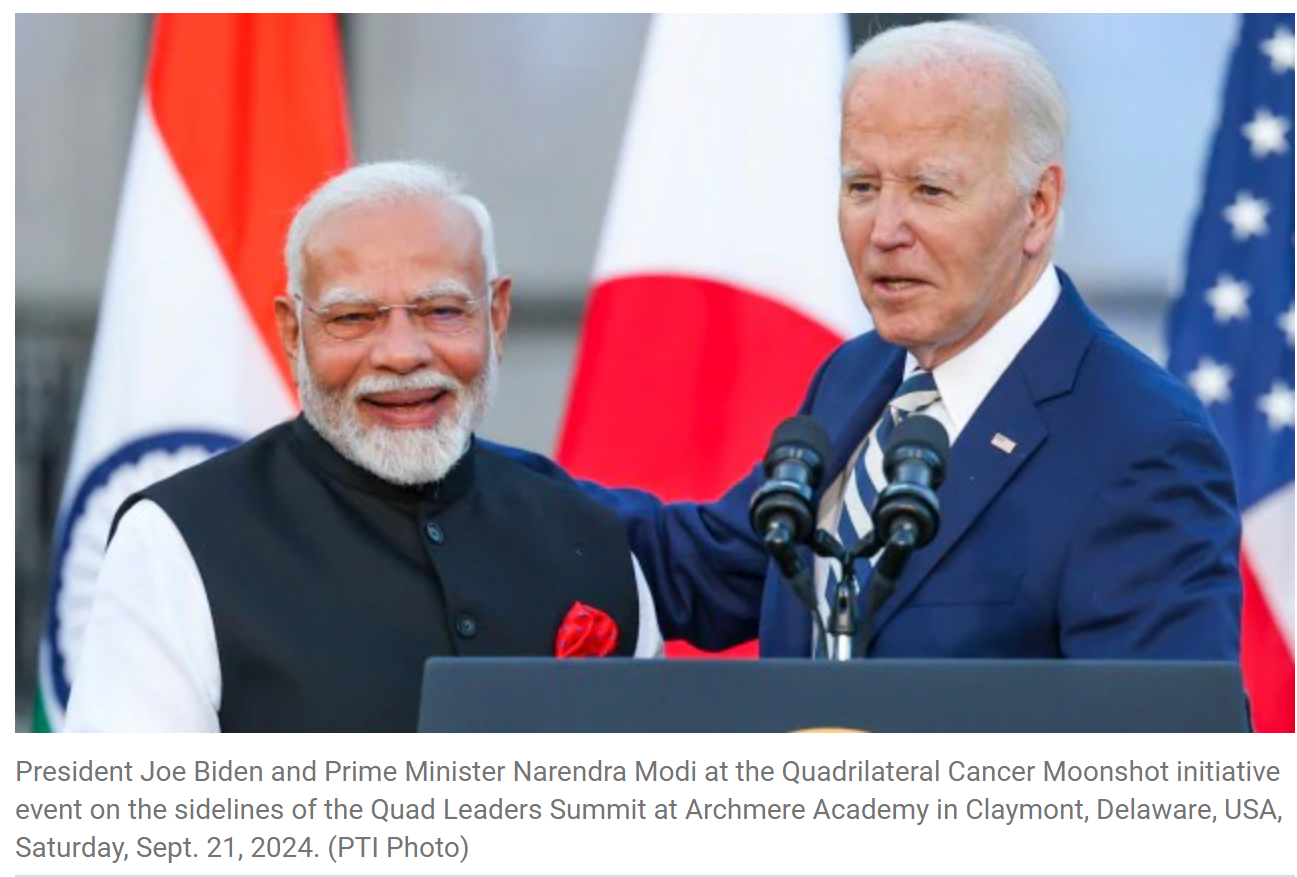
- 23 Sep 2024
In News:
India signed agreements within the US-led 14-member IPEF focused on a clean and fair economy.
- Objectives:
- Facilitate development, access, and deployment of clean energy and climate-friendly technologies.
- Strengthen anti-corruption measures and promote tax transparency among member countries.
- Clean Economy Agreement:
- Aims to accelerate energy security and mitigate greenhouse gas (GHG) emissions.
- Focuses on innovative methods to reduce reliance on fossil fuels and promote technical cooperation.
- Fair Economy Agreement:
- Seeks to create a transparent and predictable business environment to enhance trade and investment.
- Emphasizes information sharing, asset recovery facilitation, and strengthening cross-border investigations.
- Funding Mechanisms:
- IPEF offers platforms for technical assistance and concessional funding.
- IPEF Catalytic Capital Fund: Initial grant of $33 million aimed to catalyze $3.3 billion in private investments.
- PGI Investment Accelerator: Received $300 million from the US International Development Finance Corporation.
- Concerns Raised:
- Experts highlighted concerns over the secrecy of IPEF negotiations with limited public input.
- Expressed hope that India has not agreed to a non-derogation clause that could limit domestic regulatory flexibility for national projects.
- Potential Risks:
- Most standards discussed in IPEF are aligned with those in the US and OECD countries.
- India risks compliance pressures in future trade deals if it adopts these standards without adequate preparation.
- Strategic Importance of IPEF:
- Involves 14 member countries, focusing on economic cooperation through four key pillars: trade, supply chain resilience, clean economy, and fair economy.
- Represents 40% of the global economy and 28% of world trade, highlighting India's commitment to regional partnerships alongside the US, Japan, Australia, and other Indo-Pacific nations.
QUAD CANCER MOONSHOT

- 23 Sep 2024
In News:
The Quad Cancer Moonshot Initiative is a significant collaborative effort among the Quad countries—India, the United States, Australia, and Japan—aimed at combating cancer through innovative strategies. The initiative focuses on key areas such as preventing and detecting cancer, improving treatment, and alleviating the disease's impact on patients and families.
Key Highlights of the Quad Cancer Moonshot Initiative:
- Focus Areas:
- Cervical Cancer Screening: Enhancing access to screening programs.
- HPV Vaccination: Increasing vaccination rates against HPV, which is the leading cause of cervical cancer.
- Patient Treatment: Improving treatment protocols and accessibility for cancer patients.
- India’s Contributions:
- Financial Commitment: India has pledged $10 million to support the WHO’s Global Initiative on Digital Health, aimed at enhancing digital health technologies for cancer care in the Indo-Pacific region.
- Material Support: India will provide cervical cancer screening kits, detection tools, and HPV vaccines valued at $7.5 million to bolster healthcare initiatives in the region.
- AI-based Protocols: Development of AI-driven treatment protocols to improve care delivery for cancer patients.
- Capacity Building: India aims to enhance radiotherapy services and overall cancer prevention strategies in the Indo-Pacific.
This initiative represents a strong commitment to fostering international collaboration in healthcare, particularly in the prevention and treatment of cervical cancer. By empowering communities with accessible tools and resources, the Quad countries aim to significantly reduce the burden of cancer in the region.
India-China Disengagement Along the LAC
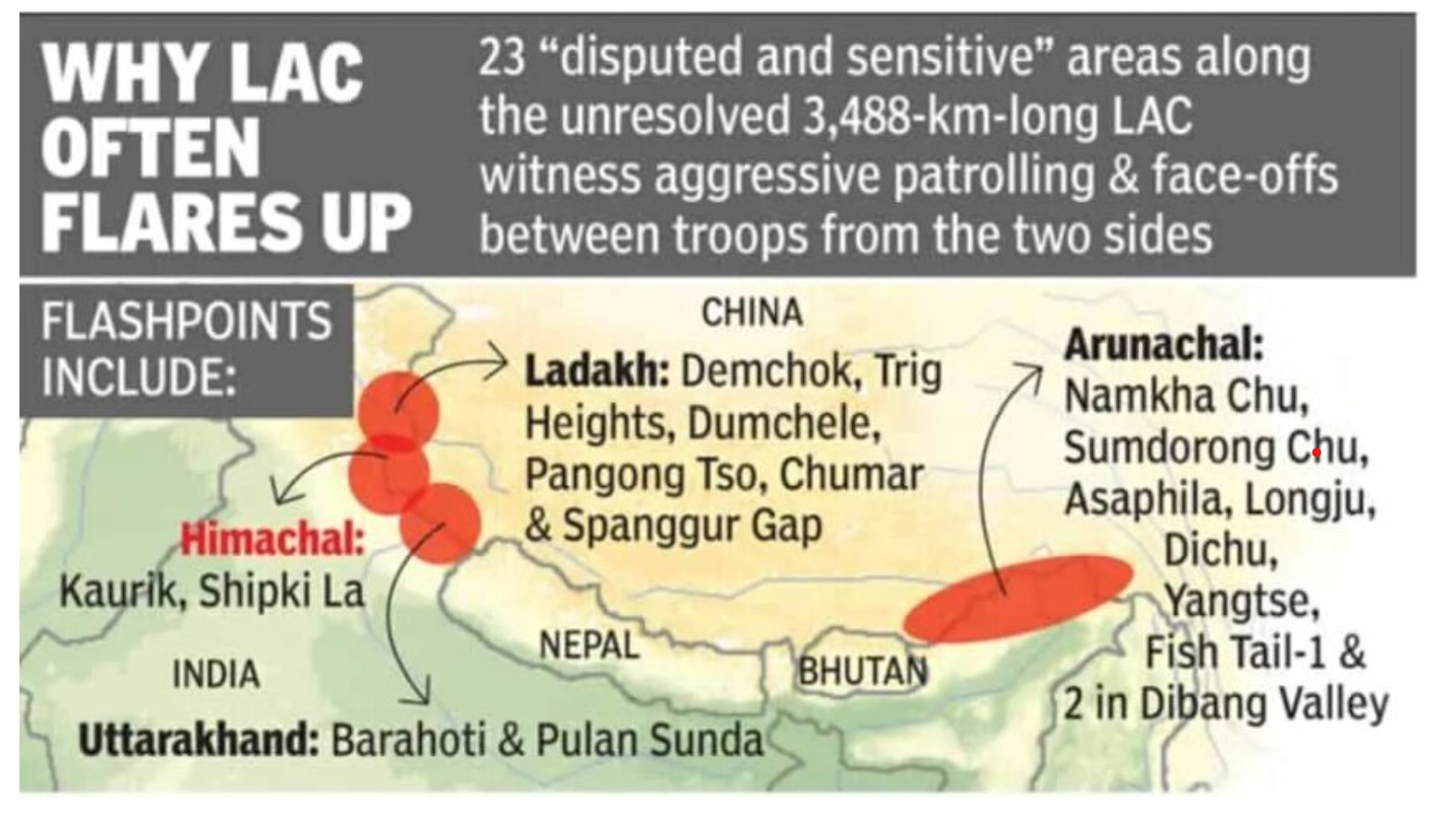
- 18 Sep 2024
Overview of Disengagement Progress
Recently, India’s External Affairs Minister announced that about 75% of the “disengagement problems” with China along the Line of Actual Control (LAC) in Ladakh have been “sorted out.” However, notable areas such as Demchok and the Depsang plains have seen no progress toward resolution over the past two years.
Recent Developments on India-China Disengagement
Verified Disengagement
India and China have mutually agreed to and verified disengagement from five friction points, including:
- Galwan Valley
- Pangong Tso
- Gogra-Hot Springs
Despite this, issues in Demchok and Depsang remain unresolved.
Diplomatic Efforts
Recent high-level diplomatic interactions have facilitated the disengagement along the LAC. Key meetings include:
- India’s National Security Advisor Ajit Doval meeting Chinese Foreign Minister Wang Yi at the BRICS NSAs meeting in St Petersburg, Russia.
- Anticipation for further disengagement is linked to the upcoming BRICS Summit in October in Kazan, Russia, where leaders from both nations are expected to meet.
Significance of Disengagement
The 31st meeting of the Working Mechanism for Consultation & Coordination on India-China Border Affairs (WMCC) was described as “frank, constructive, and forward-looking.” Participants urged both parties to “narrow down the differences” and “find early resolution of the outstanding issues.” The phrase "narrow down the differences" marks a hopeful shift in the dialogue surrounding the border standoff.
Strategic Importance of Depsang Plains and Demchok
Depsang Plains
The Depsang Plains hold strategic significance due to the following reasons:
- The People’s Liberation Army (PLA)’s control threatens India’s position over the Siachen Glacier, potentially encircling the Indian Army between China and Pakistan.
- A coordinated attack from both China and Pakistan would leave India’s military position on the Siachen Glacier vulnerable.
- The Indian Army identifies this region as particularly susceptible to mechanized warfare due to its flat terrain, which also offers direct access to Aksai Chin.
Demchok
Demchok is crucial for several reasons:
- It facilitates effective surveillance of Chinese movements and activities in the Aksai Chin region.
- It supports essential road and communication links that enable rapid military mobilization and logistical support.
Key Areas in the India-China Standoff
Pangong Lake Region
- This area frequently sees patrols from both India and China intersecting.
- The north bank of the lake is divided into eight "fingers," with India claiming territory up to Finger 8 and China disputing it down to Finger 4.
Demchok Region
- Recent reports indicated increased Chinese activity and heavy equipment movement.
Galwan River Basin
- Satellite imagery revealed Chinese tents near the Galwan River basin, suggesting incursions into traditionally held Indian territories.
Gogra Post
- A Chinese military buildup near the Gogra post has escalated tensions.
Daulat Beg Oldie (DBO)
- Chinese encroachments have been reported in the DBO sector, located on the Indian side.
- The DBO airstrip is critical for winter operations and reinforcements, accessible via the 255 km-long Darbuk-Shyok-DBO road.
India-France Bilateral Naval Exercise VARUNA
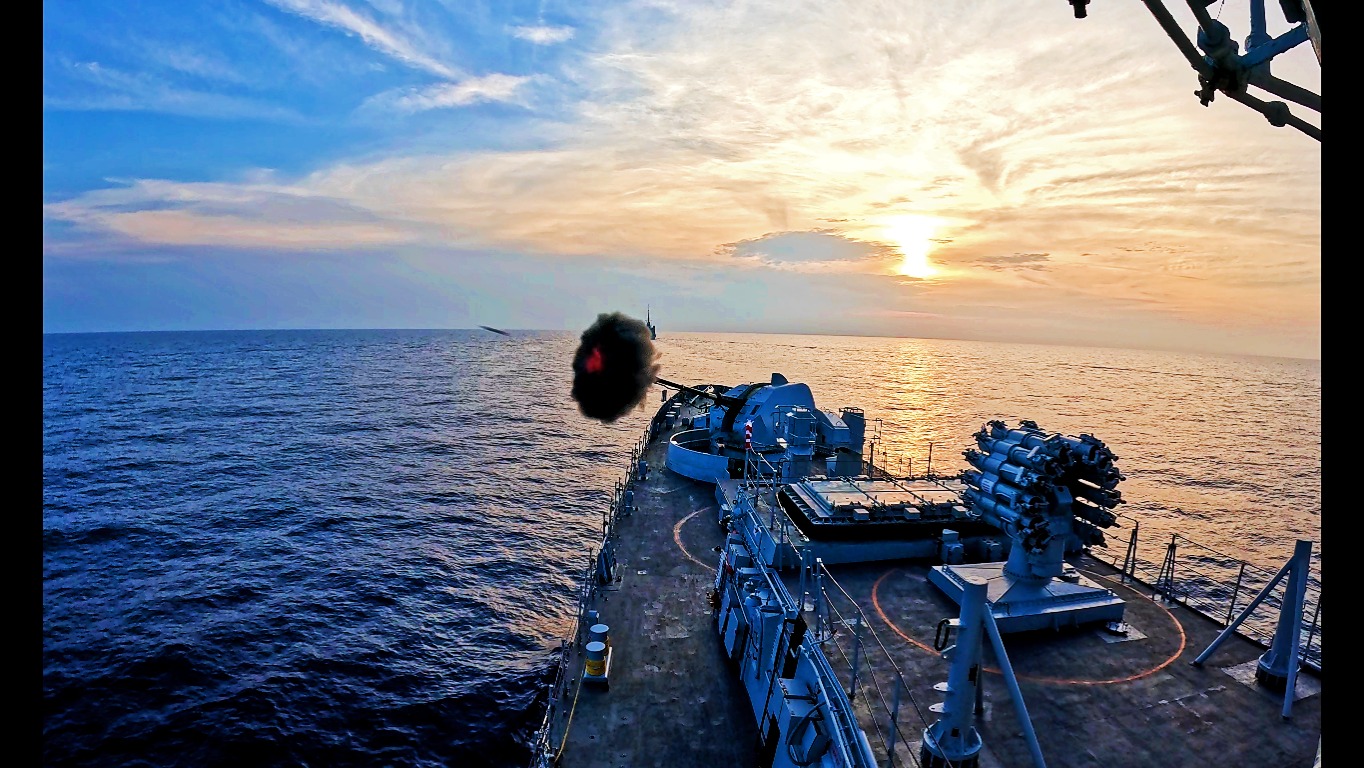
- 07 Sep 2024
In News:
The 22nd edition of the India-France bilateral naval exercise, VARUNA, took place in the Mediterranean Sea from September 2 to 4, 2024. This exercise highlights the strong maritime partnership between the Indian Navy and the French Navy, showcasing their commitment to enhancing interoperability and operational effectiveness.
Key Highlights:
- Participating Vessels and Aircraft:
- Indian Navy:
- INS Tabar: A frontline stealth frigate commanded by Captain MR Harish.
- Ship-borne Helicopter: Provided air support during the exercises.
- LRMR Aircraft P-8I: An advanced long-range maritime reconnaissance aircraft.
- French Navy:
- FS Provence: A French naval ship participating in the exercise.
- Submarine Suffren: A French attack submarine.
- Aircraft F-20: Providing air support.
- Atlantique 2: A French maritime patrol aircraft.
- Fighters MB339: Multi-role fighter aircraft.
- Helicopters NH90 and Dauphin: Providing additional aerial capabilities.
- Indian Navy:
- Exercise Activities:
- Tactical Maneuvers: Advanced maneuvers showcasing the operational capabilities of both navies.
- Anti-Submarine Warfare: Exercises designed to enhance capabilities in detecting and countering submarines.
- FLYEX (Flight Exercises): Coordinated air operations involving various aircraft.
- Air Defence Exercise: Training in defending against aerial threats.
- Live Weapon Firings: Demonstrations of weapon systems in action.
- PHOTO-EX (Photographic Exercise): Exercises designed for documenting and assessing naval operations.
- Steam Past: A ceremonial maneuver showcasing the participating ships.
- Significance of the Exercise:
- Evolution of VARUNA: Since its inception in 2001, VARUNA has become a key component of the India-France naval relationship. The exercise has evolved to improve interoperability and share best practices between the two navies.
- Strategic Importance: Conducting the exercise in the Mediterranean Sea reflects the Indian Navy's capability and commitment to operate far beyond the Indian Ocean Region (IOR). It underscores the strategic depth and outreach of the Indian Navy.
- Enhanced Interoperability: VARUNA demonstrates the mutual commitment of India and France to enhancing naval collaboration and operational effectiveness through joint exercises and shared experiences.
- Future Outlook:
- Commitment to Partnerships: The Indian Navy continues to prioritize building strong partnerships with like-minded navies worldwide. The VARUNA exercise is a testament to this ongoing commitment and the broader strategic goals of both India and France in strengthening maritime security and cooperation.
This bilateral exercise not only enhances the operational capabilities of both navies but also reinforces the strategic partnership between India and France in the maritime domain.
India-Maldives Defence Talks
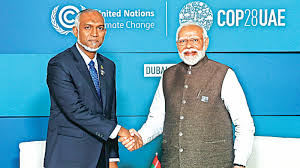
- 07 Sep 2024
In News:
- India and the Maldives held their first defence talks since India withdrew its military personnel early this year.
Significance of Talks:
- The dialogue is notable given recent tensions in bilateral relations. Relations soured after President Mohamed Muizzu's election on an "India Out" platform, leading to the withdrawal of Indian troops. The last defence cooperation dialogue was held in March 2023 under President Ibrahim Solih.
Discussion Topics:
-
- Expediting ongoing defence cooperation projects.
- Planning forthcoming bilateral military exercises.
- Enhancing high-level exchanges and capability development.
Context of Tensions:
-
- Mohamed Muizzu, who took office in November 2023, had called for the removal of Indian military personnel, a significant shift from the previous administration’s stance.
- India agreed to withdraw 80 military personnel between March and May 2024. Indian technical personnel now operate key equipment like helicopters and a Dornier aircraft in the Maldives.
Recent Developments:
-
- Maldives Foreign Minister Moosa Zameer visited India in May.
- President Muizzu attended PM Narendra Modi’s swearing-in ceremony in June.
- In August, Indian External Affairs Minister S. Jaishankar visited the Maldives to reaffirm bilateral ties.
Historical Defence Cooperation:
-
- India gifted a Dornier aircraft to the Maldives in 2020 and a patrol vessel in 2019.
- India provided a coastal radar system last year and laid the foundation for the 'Ekatha Harbour' project, enhancing Maldivian Coast Guard capabilities.
Ongoing Projects:
-
- Greater Male Connectivity Project (GMCP) - a $500 million initiative financed by India.
- Building a new Coast Guard base at Uthuru Thilafalhu (UTF) atoll.
- India’s grant for High Impact Community Development Projects (HICDPs).
Strategic Importance:
-
- For Maldives: India is a key security partner and crisis responder, with historical assistance during emergencies (Operation Neer, Vaccine Maitri). Maldives seeks to restore Indian tourist numbers, vital for its economy.
- For India: The Maldives is crucial to India's Neighbourhood First Policy and Vision SAGAR. Its strategic location between major Indian Ocean chokepoints makes it a vital partner for maritime security and countering China's influence.
Recent Changes:
-
- The Muizzu government decided not to renew a 2019 MoU for hydrographic surveying with India, ending joint hydrographic surveys conducted under the pact.
Travel and Trade:
-
- Both countries benefit from an open skies arrangement and visa-free access for tourism, medical, and business purposes
India-Middle East-Europe Economic Corridor (IMEC)
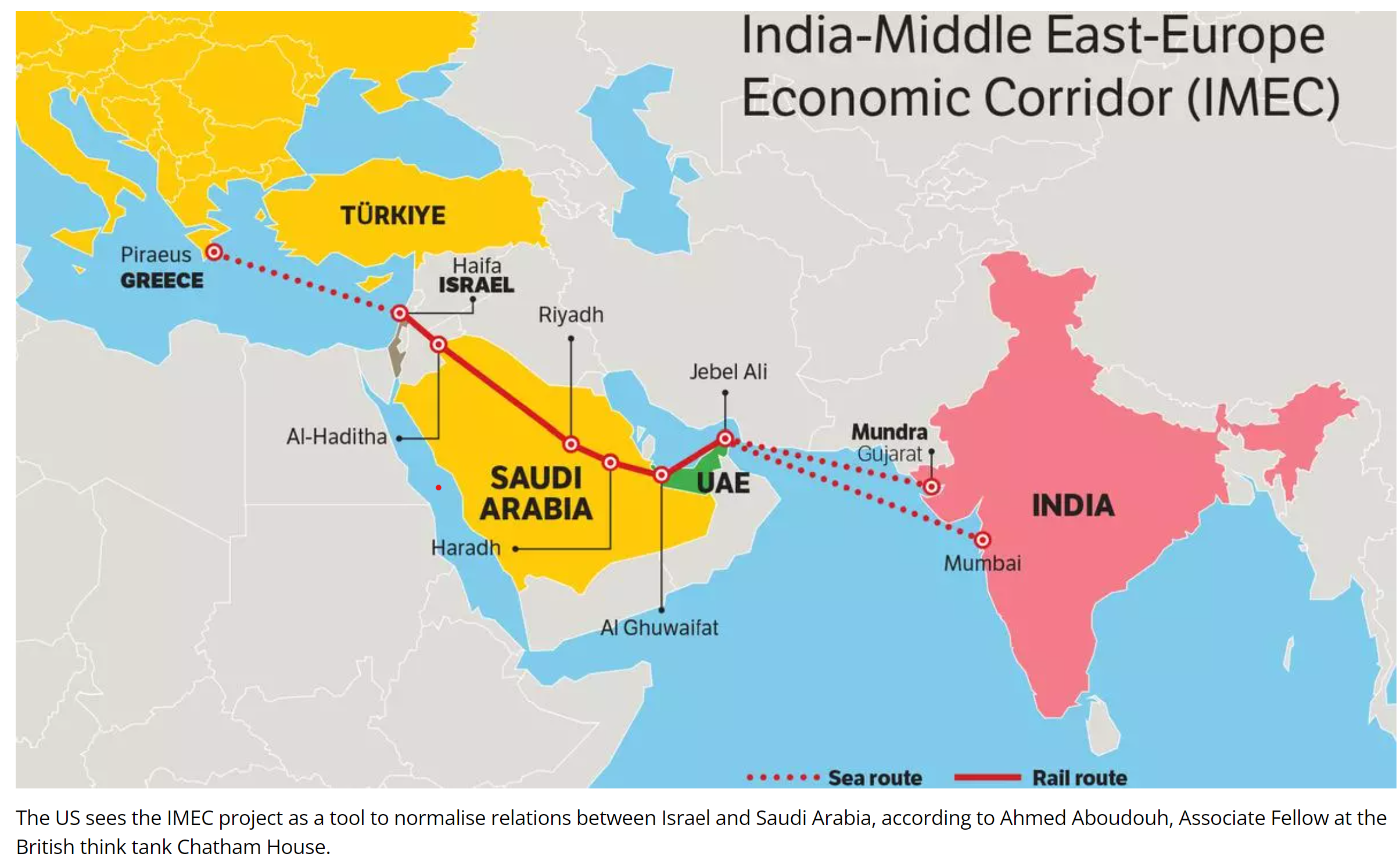
- 07 Sep 2024
In News:
IMEC is an important initiative that can add to India's maritime security and faster movement of goods between Europe and Asia, said Union Minister of Commerce & Industry at the Confederation of Indian Industry (CII) India-Mediterranean Business Conclave 2024 in New Delhi.
Key Details:
- Corridors:
- East Corridor: Connects India to the Gulf.
- Northern Corridor: Links the Gulf to Europe.
- Components:
- Railroad: Provides a reliable and cost-effective cross-border ship-to-rail transit network.
- Ship-to-Rail Networks: Integrates road, sea, and rail transport routes.
- Road Transport: Complements the overall transport infrastructure.
- Expected Benefits:
- Increased Efficiency: Enhances transit efficiency and reduces costs.
- Economic Unity: Promotes economic integration and job creation.
- Environmental Impact: Lowers greenhouse gas emissions.
- Transformative Integration: Connects Asia, Europe, and the Middle East.
- Additional Features:
- Infrastructure: Includes laying cables for electricity and digital connectivity, and pipes for clean hydrogen export.
- Implementation:
- MoU Commitments: Participants will collaboratively address technical design, financing, legal, and regulatory aspects.
- Action Plan: A meeting is planned within 60 days to develop an action plan with specific timetables.
Geoeconomic Perspective
- Economic Integration and Interdependence:
- Prosperity Through Integration: IMEC aims to foster trade and investment among India, the Middle East, and Europe, potentially leading to mutual prosperity and regional stability.
- Building Bridges: Aligns with the liberal international order by promoting economic interdependence to reduce tensions and create shared interests.
- Support from Major Powers: Backed by the US, Europe, and India, signaling a strong commitment to economic ties and regional stability.
- Economic Potential:
- Infrastructure and Trade Routes: Enhances infrastructure and trade routes, boosting economic activity, trade volumes, and investment opportunities.
- Regional Development: Promotes job creation and development in economically disadvantaged areas along the corridor.
Geopolitical Perspective
- Strategic Rivalry with China:
- Countering the BRI: IMEC is seen as a strategic counterbalance to China's Belt and Road Initiative (BRI), offering an alternative aligned with US, European, and Indian interests.
- Regional Influence: Aims to limit China’s influence in the Middle East and South Asia by establishing a competing corridor.
- Geopolitical Alliances:
- Aligning Interests: Involves strategic partnerships among the US, Europe, and India, reflecting concerns about China’s global strategy and shifting power dynamics.
- Rivalry and Competition: The IMEC could be viewed as a global positioning move, responding to China’s growing influence and securing strategic interests.
Reasons for Joining the IMEC
- Economic Enhancement:
- Boosts Indo-Gulf Relations: Enhances trade and economic ties with the Arab Gulf, addressing infrastructure gaps.
- Regional Connectivity: Links India with key partners like Israel and Jordan, boosting economic opportunities.
- Strategic Trade Routes:
- Alternative Routes: Complements existing routes like Chabahar Port and INSTC, connecting India to southern Eurasia.
- Bypassing Choke Points: Offers a shorter route to Eastern Mediterranean and Western Europe, avoiding strategic choke points.
- Energy and Trade Opportunities:
- Access to Resources: Provides potential access to Eastern Mediterranean gas fields.
- Trade Bloc Connectivity: Links India with the EU and GCC, opening up growth opportunities.
- Geopolitical Aspirations:
- Global Power Ambitions: Supports India’s goal to enhance global influence and integrate with eastern and western neighbors.
- Economic Growth: Leverages economic integration to support development and influence.
- Infrastructure Development:
- Economic Integration: Facilitates infrastructure creation for increased trade volumes and regional stability.
Centre gives clearance for ‘Mission Mausam’

- 13 Sep 2024
The Union Cabinet approved 'Mission Mausam,' a groundbreaking initiative with an investment of ?2,000 crore over the next two years. The mission, spearheaded by the Ministry of Earth Sciences (MoES), aims to significantly advance India's capabilities in atmospheric sciences and climate resilience.
Objectives and Key Focus Areas
Mission Mausam is designed to improve the accuracy and effectiveness of weather forecasting and climate management through several critical components:
- Advanced Technology Deployment: The mission will focus on deploying next-generation radars and satellite systems equipped with advanced sensors. These technologies are crucial for enhancing weather surveillance and prediction accuracy.
- Research and Development: A key objective of Mission Mausam is to bolster research and development in atmospheric sciences. This will include the development of enhanced Earth system models and advanced weather forecasting techniques.
- GIS-Based Decision Support System: An automated decision support system based on Geographic Information Systems (GIS) will be developed to facilitate real-time data sharing and improve decision-making processes.
Institutional Framework and Implementation
The Ministry of Earth Sciences will oversee the implementation of Mission Mausam. The following institutions will play central roles in the mission:
- India Meteorological Department (IMD)
- Indian Institute of Tropical Meteorology
- National Centre for Medium-Range Weather Forecasting
Additional support will come from other MoES bodies:
- Indian National Centre for Ocean Information Services
- National Centre for Polar and Ocean Research
- National Institute of Ocean Technology
Sectoral Benefits
Mission Mausam is expected to bring significant improvements across various sectors:
- Agriculture: Enhanced agromet forecasts will aid farmers in optimizing crop management and increasing resilience to climatic variability.
- Disaster Management: Improved monitoring and early warning systems will enhance disaster preparedness and response, potentially reducing loss of life and property damage.
- Defence: Accurate weather forecasting will support strategic planning and operational efficiency within the defence sector.
- Energy and Water Resources: Better weather predictions will lead to more efficient management of energy and water resources.
- Aviation: Safer aviation will be supported by more reliable weather information, reducing risks and improving travel safety.
- Tourism: Sustainable tourism will benefit from accurate weather forecasting, contributing to safer and more enjoyable travel experiences.
Mission Mausam represents a significant investment in India’s ability to manage and mitigate the impacts of climate change and extreme weather events, ultimately aiming to enhance the resilience of communities and support sustainable development.
Strengthening India-UAE Relations
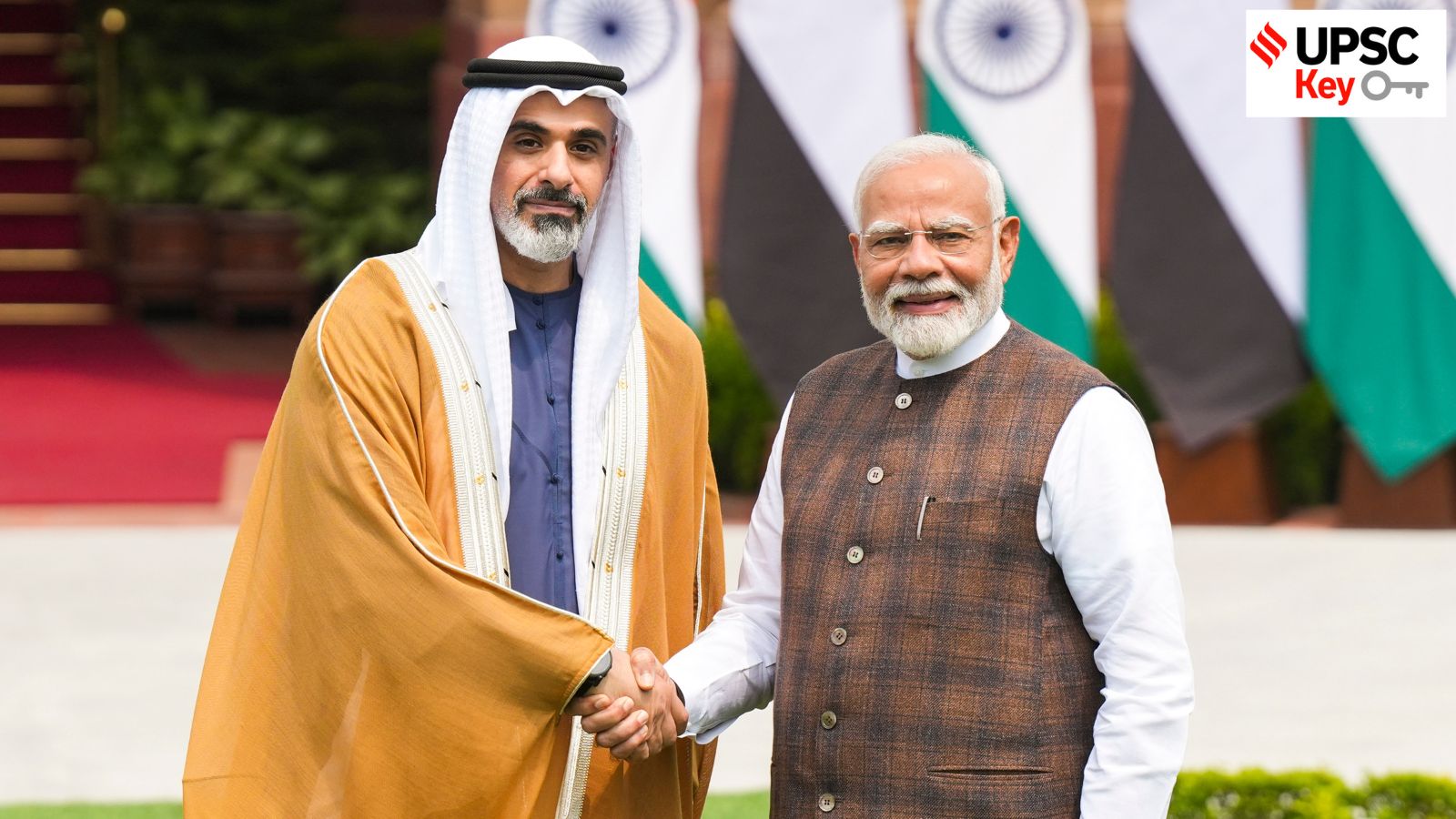
- 11 Sep 2024
The bilateral relationship between India and the UAE has flourished in recent years, marked by deepening strategic ties and multifaceted collaboration. The recent visit of Abu Dhabi's Crown Prince to India highlights the growing importance of this partnership. The UAE is now India's second-largest export destination, third-largest trading partner, and fourth-largest investor. The Comprehensive Economic Partnership Agreement (CEPA), effective from May 2022, has been transformative, boosting total trade by nearly 15% and increasing non-oil trade by 20% in the 2023-24 period.
Significance of the UAE for India
- Economic Gateway: The UAE is a crucial entry point for India into the Middle East and North Africa (MENA) region. As India's third-largest trading partner, bilateral trade reached USD 84.5 billion in FY 2022-23. The CEPA, removing tariffs on 80% of Indian exports to the UAE, has led to a 5.8% increase in non-oil trade early in 2023 and is expected to elevate trade to USD 100 billion by 2030. The UAE’s strategic location and infrastructure make it an ideal hub for re-exporting Indian goods to Africa and Europe.
- Energy Security: The UAE is India's fourth-largest crude oil supplier, with oil imports surging by 81% in January 2024. The partnership extends to renewable energy projects, aligning with India's goal of 500 GW renewable energy capacity by 2030, underscoring the UAE's role in India's energy transition.
- Investment Catalyst: FDI from the UAE to India has increased more than threefold, reaching USD 3.35 billion from USD 1.03 billion in 2021-22. The UAE-India High-Level Joint Task Force on Investments has played a key role, with significant investments like the Abu Dhabi Investment Authority’s Rs 4,966.80 crore in Reliance Retail Ventures Limited.
- Strategic Partner: The UAE has become a vital strategic ally for India in counterterrorism and maritime security. The bilateral naval exercise "Zayed Talwar" in 2021 and India's access to the UAE’s Al Dhafra air base highlight the expanding defense cooperation between the two nations.
- Remittances and Soft Power: The 3.5 million-strong Indian diaspora in the UAE is a major source of remittances and cultural influence. In 2022, India received nearly USD 111 billion in global remittances, with the UAE as a significant contributor. The diaspora also strengthens cultural ties, as evidenced by the BAPS Hindu Temple in Abu Dhabi, symbolizing the UAE’s commitment to religious tolerance.
- Tech and Innovation Hub: The UAE-India partnership is increasingly focused on technology and innovation. The I2U2 group (India, Israel, UAE, USA) aims to enhance cooperation in clean energy and food security. The UAE’s USD 2 billion investment in food parks in India and the UAE-India Artificial Intelligence Bridge, launched in 2018, facilitate joint research and position both countries at the forefront of technological advancement.
Areas of Friction
- Labor Rights: Persistent labor rights issues for Indian workers in the UAE, including passport confiscation and wage theft, remain a concern.
- Geopolitical Tensions: India’s growing ties with Israel and the UAE’s normalization with Israel complicate the geopolitical landscape, potentially entangling India in regional rivalries, especially with Iran. The UAE’s increasing ties with China also add strategic complexity.
- Energy Transition: Both nations’ commitments to net-zero targets—India by 2070 and the UAE by 2050—pose challenges to their traditional hydrocarbon-based relationship.
- Trade Imbalance: Despite growing trade, India’s trade deficit with the UAE stood at USD 16.78 billion in FY 2022-23. While the CEPA aims to address this, diversifying trade beyond hydrocarbons remains a challenge.
- Maritime Security: Coordinating responses to maritime security threats while respecting strategic autonomy is challenging. The UAE’s expanding naval presence and India’s growing maritime footprint require careful coordination.
Enhancing Relations
- Digital Diplomacy: India could use its IT capabilities to develop digital platforms for collaboration, including a real-time trade portal and a joint innovation hub, and expand cross-border digital payments.
- Green Energy Corridor: Proposing an "India-UAE Green Energy Corridor" could align with both nations’ climate goals through joint investments and research in renewable energy.
- Skill Bridge Program: A "Skill Bridge Program" could upskill Indian workers for the UAE job market, focusing on emerging sectors like AI and sustainable technologies.
- StartUp Synergy Scheme: Developing a "StartUp Synergy Scheme" could foster collaboration between Indian and UAE startups through joint incubation programs and market access facilitation.
- Maritime Cooperation Blueprint: Creating a comprehensive "India-UAE Maritime Cooperation Blueprint" could enhance collaboration in maritime security, blue economy initiatives, and port development, including joint patrols and deep-sea ports.
India, UAE ink pact for civil nuclear cooperation

- 10 Sep 2024
In News:
- Recently, India and the United Arab Emirates (UAE) signed a significant Memorandum of Understanding (MoU) for civil nuclear cooperation.
- The agreement, established between the Nuclear Power Corporation of India Limited (NPCIL) and the Emirates Nuclear Energy Company (ENEC)-led Barakah Nuclear Power Plant Operations and Maintenance, was formalized during the visit of Sheikh Khalid bin Mohamed bin Zayed Al Nahyan, the Crown Prince of Abu Dhabi, to New Delhi.
Background:
- This MoU marks the first formal agreement of its kind between NPCIL and ENEC. The collaboration aligns with the broader commitment made during Prime Minister Narendra Modi’s visit to the UAE in August 2015, which focused on peaceful nuclear energy applications, including safety, health, agriculture, and science and technology.
Trilateral Cooperation:
- The agreement follows a series of discussions on nuclear cooperation between India and the UAE. On September 19, 2022, Foreign Ministers from France, India, and the UAE met in New York during the UN General Assembly and initiated a trilateral cooperation framework. This was further solidified by a phone call on February 4, 2023. The trilateral format aims to promote joint projects in energy, emphasizing solar and nuclear energy.
Additional Agreements:
During the Crown Prince’s visit, several other agreements were also signed:
- LNG Supply MoU: An agreement was reached between Abu Dhabi National Oil Company (ADNOC) and Indian Oil Corporation Limited for long-term LNG supply.
- Production Concession Agreement: Urja Bharat and ADNOC signed an agreement for Abu Dhabi Onshore Block 1.
- Food Parks Development: The Government of Gujarat and Abu Dhabi Developmental Holding Company PJSC (ADQ) signed an MoU for developing food parks in India. This initiative aligns with the I2U2 grouping (including Israel and the United States), which envisions food parks in Gujarat and Madhya Pradesh.
Conclusion:
The visit of the Crown Prince and the signing of these agreements reflect the strengthening ties between India and the UAE. This dynamic development coincides with the first India-Gulf Cooperation Council (GCC) Foreign Ministers’ meeting held in Riyadh on September 8-9. External Affairs Minister S. Jaishankar highlighted India's growing energy demands and its significant role in future global energy markets during his remarks at the meeting.
India-Singapore Relations
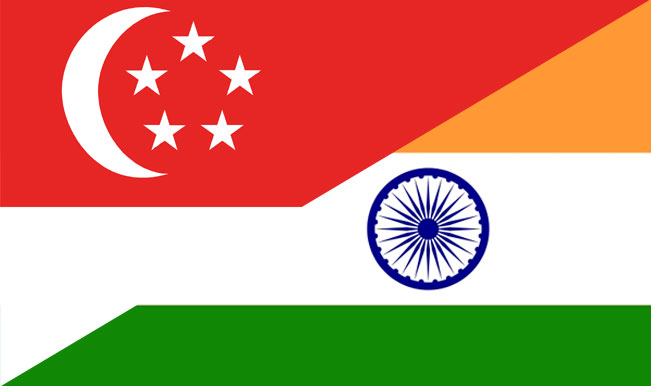
- 04 Sep 2024
- High-Level Inter-Governmental Contacts:
- Frequent and high-level exchanges, including the Prime Minister's upcoming visit.
- Recent second India-Singapore Ministerial Roundtable with senior Indian ministers.
- Key Areas of Cooperation:
- Digitalisation, skills development, sustainability, healthcare, advanced manufacturing, and connectivity.
- Broader contacts include parliamentary and judicial exchanges.
- Economic Ties:
- Singapore is India’s largest trading partner among ASEAN countries and the sixth largest globally.
- Singapore is also the largest source of foreign direct investment (FDI) for India.
- People-to-People Exchanges:
- Large concentration of IIT and IIM alumni in Singapore.
- Historical ties, including the Indian National Army's presence and the contributions of early Indian diaspora in Singapore.
- Regional Policy and Strategic Importance:
- Singapore has supported India’s “Look East” and “Act East” policies.
- Facilitated India’s dialogue partnership with ASEAN.
- Regional implications due to Myanmar’s instability, with India and Singapore both having stakes.
- Defence and Maritime Cooperation:
- Important defence component and maritime collaboration.
- Focus on the Indo-Pacific region amidst growing Chinese influence and new regional architectures like the QUAD.
- Trade and Economic Outlook:
- The visit provides an opportunity to review and expand trade and economic partnerships.
- Potential for increased Chinese FDI into India, with Singaporean entities likely to play a role.
- Complementarities and Challenges:
- Singapore's role as a global trading and investment hub complements India’s economic landscape.
- Highlights India's regulatory and structural inefficiencies, pointing to areas needing improvement for enhanced bilateral cooperation.
The League of Arab States (LAS)/Arab League
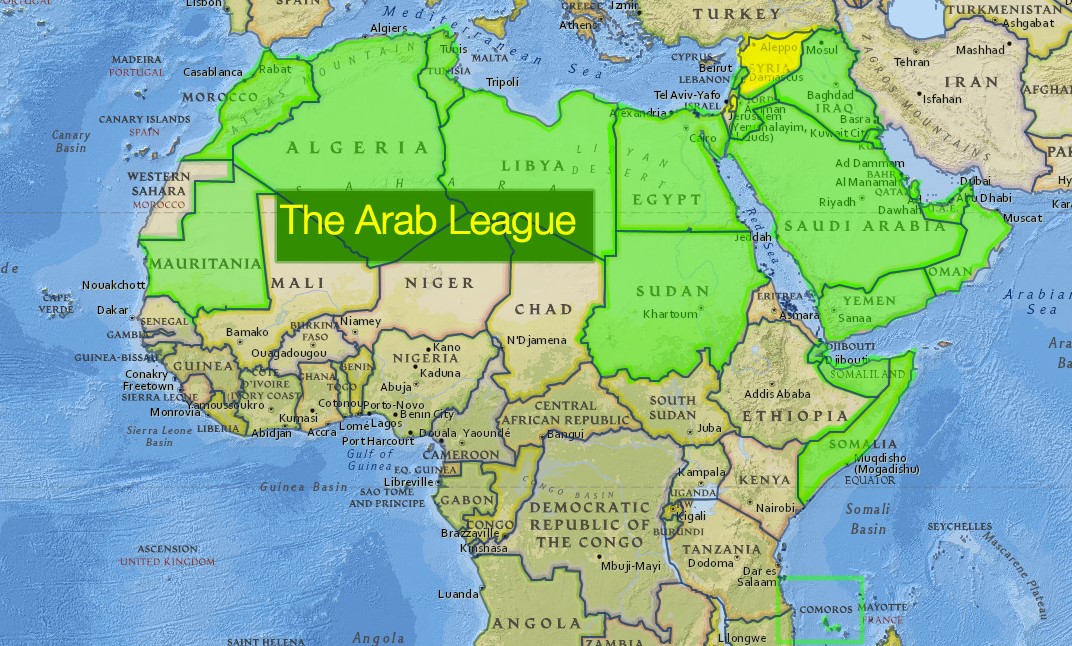
- 24 May 2024
Why is it in the News?
The Arab League called recently for a UN peacekeeping force in the "occupied Palestinian territories" at an international summit dominated by the war between Israel and Hamas.
What is the Arab League?
- The League of Arab States was formed in Cairo on 22 March 1945 with six members: Egypt, Iraq, Transjordan (later renamed Jordan), Lebanon, Saudi Arabia and Syria, with Yemen joining on 5 May 1945.
- It currently has 22 member states; Algeria, Bahrain, Comoros, Djibouti, Egypt, Iraq, Jordon, Kuwait, Lebanon, Libya, Mauritania, Morocco, Oman, Palestinian Authority, Qatar, Saudi Arabia, Somalia, Sudan, Syria, Tunisia, United Arab Emirates and Yemen.
- Four countries have been admitted as observers: Brazil, Eritrea, India and Venezuela.
- Each member state has one vote in the League Council, while decisions are binding only on those states that have voted for them.
- The official language of the Arab League and its 22 member states is Arabic.
- The league seeks to promote the political, social, and military interests of its members.
- The head of the league is known as the secretary-general.
- The secretary-general is appointed to a five-year term by a two-thirds majority of league members.
- Headquarters: Cairo, Egypt.
Goals:
- The overall aim of the league is to promote Arab interests.
- Its main goals are to strengthen and coordinate the political, cultural, economic, and social programs of its members and to try to settle disputes among them or between them and third parties.
- In 1950 the members also agreed to provide military support to help defend each other.
The Arab League Council:
- The League Council is the highest body of the Arab League and is composed of representatives of member states, typically foreign ministers, their representatives, or permanent delegates.
- Each member state has one vote.
- The Council meets twice a year, in March and September. Two or more members may request a special session if they desire.
- The general secretariat manages the daily operations of the league and is headed by the secretary-general.
- The general secretariat is the administrative body of the league, the executive body of the council, and the specialized ministerial councils.
Bay of Bengal Initiative for Multi-Sectoral Technical and Economic Cooperation (BIMSTEC)
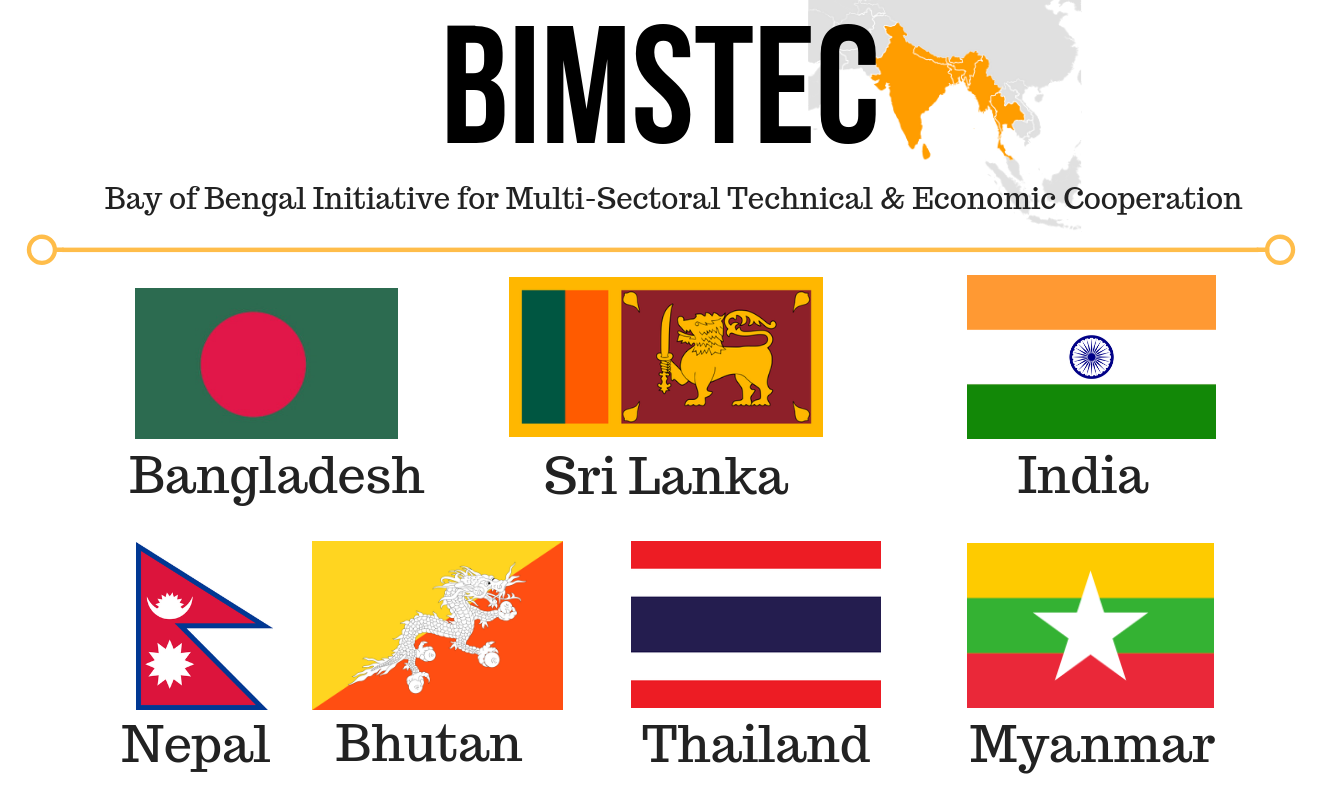
- 23 May 2024
Why is it in the News?
The Bay of Bengal Initiative for Multi-Sectoral Technical and Economic Cooperation (BIMSTEC) will now be open to new members and observers after a historic first charter of the grouping came into force on 20 May.
What is BIMSTEC?
- The Bay of Bengal Initiative for Multi-Sectoral Technical and Economic Cooperation (BIMSTEC) is a multilateral regional organization that brings together seven member states located in the littoral and adjacent areas of the Bay of Bengal, forming a contiguous regional unity.
- Aims: The primary aim of BIMSTEC is to accelerate shared growth and cooperation among littoral and adjacent countries in the Bay of Bengal region.
- Formation: The organization was initially founded as BIST-EC in June 1997, following the adoption of the Bangkok Declaration.
- The founding members included Bangladesh, India, Sri Lanka, and Thailand.
- With Myanmar's entry in late 1997, the organization evolved into BIMST-EC (Bangladesh, India, Myanmar, Sri Lanka, and Thailand Economic Cooperation).
- In 2004, the inclusion of Nepal and Bhutan led to the formation of BIMSTEC, as we know it today.
- The current member states comprise five South Asian nations: Bangladesh, Bhutan, India, Nepal, and Sri Lanka, and two Southeast Asian nations: Myanmar and Thailand.
- BIMSTEC's Permanent Secretariat is situated in Dhaka, Bangladesh, serving as a hub for regional cooperation and coordination among member states.
Areas of cooperation:
- BIMSTEC functions as a sector-driven cooperative organization, initially focusing on six key sectors: Trade, Technology, Energy, Transport, Tourism, and Fisheries.
- Over time, the scope of cooperation has expanded, and as of now, BIMSTEC has identified 14 priority areas of cooperation.
- The inclusion of Climate Change in 2008 marked the 14th priority area.
- Within these priority areas, each member country takes responsibility for leading specific sectors.
- This allows for focused efforts and utilization of regional expertise.
- India, for example, is the leading country in several crucial areas, including Transport & Communication, Tourism, Environment & Disaster Management, and Counter-Terrorism & Transnational Crime.
- This leadership role involves coordinating initiatives, sharing best practices, and driving collaborative efforts within these sectors to enhance regional development and cooperation.
International Criminal Court (ICC)
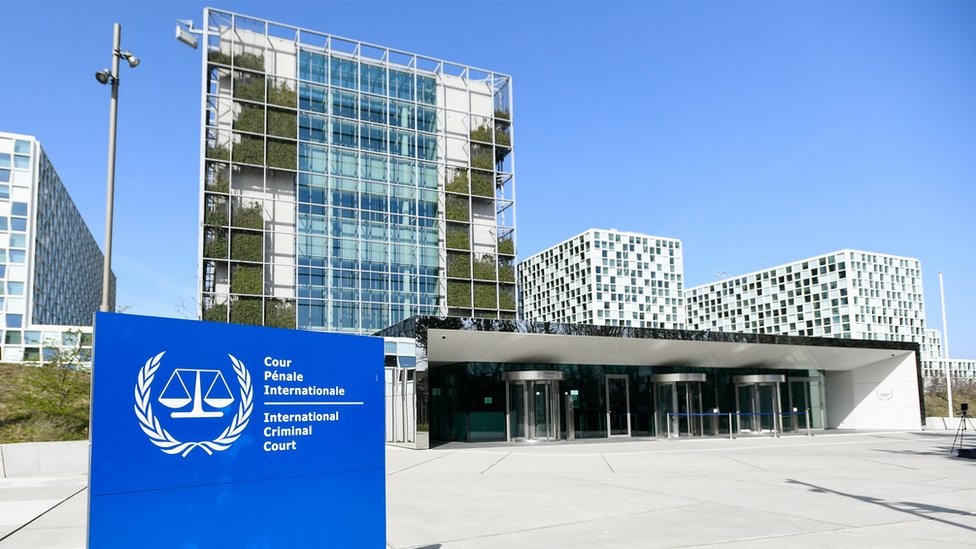
- 21 May 2024
Why is it in the News?
International Criminal Court (ICC) Chief Prosecutor recently announced that he has applied for arrest warrants against Israeli Prime Minister Benjamin Netanyahu and Defence Minister Yoav Gallant for crimes against humanity in the ongoing Gaza war.
What is the International Criminal Court (ICC)?
- The International Criminal Court (ICC) in The Hague (Netherlands) is a permanent global court established in 2002.
- The ICC was created as a result of the Rome Statute, a treaty established at a United Nations conference in Italy and signed in 1998 by 120 countries — giving the ICC its power.
- The ICC is independent of the United Nations (UN) but is endorsed by the UN General Assembly.
- It also maintains a cooperation agreement with the UN.
- It has the power to prosecute individuals and leaders for genocide, crimes against humanity and war crimes.
- Unlike the International Court of Justice (ICJ), which is an organ of the UN, the ICC does not prosecute states.
The Court does not have universal jurisdiction:
- Its jurisdiction only applies to crimes committed by nationals of States Parties or Non-States Parties that have recognized its jurisdiction through declaration and crimes committed in such States.
- The Court may also exercise its jurisdiction for crimes that have been referred to it by the United Nations Security Council, in accordance with a resolution adopted under Chapter VII of the Charter of the United Nations.
The Court’s jurisdiction is governed by the principle of complementarity:
- It does not relieve States of their primary responsibility and only intervenes when the States have been unable or did not wish, to try crimes under their jurisdiction.
- The Court is not a United Nations body. However, it is part of the international system to fight against impunity and prevent and handle crises.
How is the ICC governed?
- The Rome Statute created three bodies:
- The International Criminal Court
- The Assembly of States Parties
- The Trust Fund for Victims
- The Assembly of States Parties (ASP) is made up of representatives of States Parties.
- It provides general guidelines while respecting the independence of the Court and makes decisions relating to how it operates (in particular by electing judges and the Prosecutor and by approving the ICC’s budget).
- The Trust Fund for Victims was created by the ASP to grant individual reparations to victims by executing reparations orders handed down by the Court.
- It also contributes to their rehabilitation through psychological and physical recovery and material support.
- The Fund has financed projects in Uganda, the Central African Republic and the Democratic Republic of the Congo.
The International Criminal Court is made up of four bodies:
- The Presidency (made up of three judges) is responsible for external relations with States, organizes the Divisions’ judicial work and supervises the administrative work of the Registry;
- The Judicial Divisions – the Pre-Trial Division, the Trial Division and the Appeals Division – carry out judicial proceedings;
- The Office of the Prosecutor carries out preliminary analyses, investigations and prosecutions;
- The Registry carries out non-judicial activities related to safety, interpretation, information and outreach or support to lawyers for the defence and victims.
The recruitment process for judges at the ICC:
- Every three years, the ASP elects six new judges, a third of the 18 ICC judges, for a term of nine years.
- The candidates for the position of judge at the ICC are presented by the States Parties.
- The election of judges is governed by a unique procedure that aims to ensure, insofar as possible, that there is a balanced bench with regard to legal expertise, geographical representation and gender.
How does the International Criminal Court differ from the International Court of Justice?
International Criminal Court:
1. Part of the United Nations (UN)?
Ans. No, The International Criminal Court is independent but co-operates closely with the UN.
2. What is its aim?
Ans. To try individuals who are suspected of the crime of genocide, war crimes, crimes against humanity or the crime of aggression.
3. Where is it located?
Ans. The Hague
International Court of Justice:
1. Part of the United Nations (UN)?
Ans. No, The International Court of Justice is the principal judicial organ of the United Nations.
2. What is its aim?
Ans. To settle legal disputes between states,and to advise the UN on legal questions.
3. Where is it located?
Ans. The Hague
India Abstains from UNHRC Resolution on Gaza Ceasefire
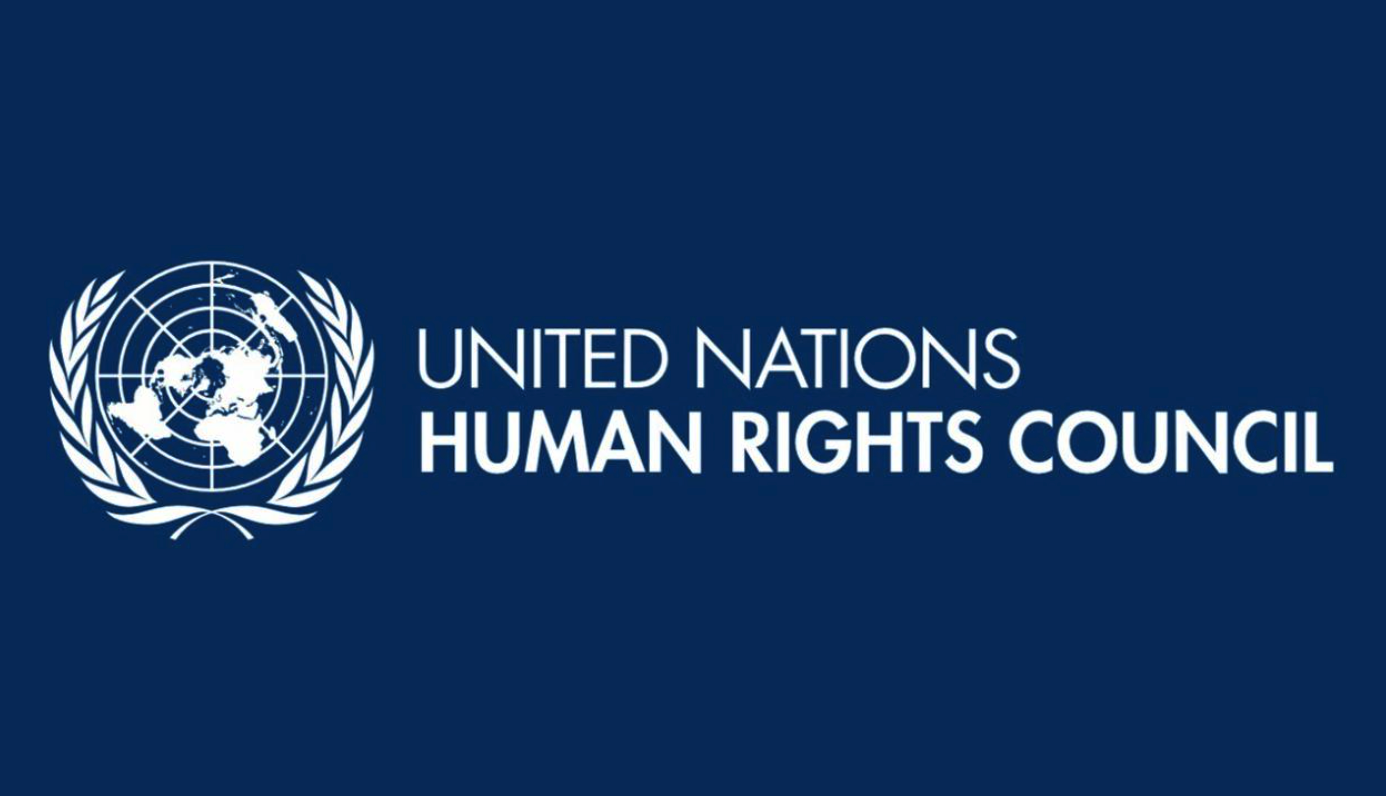
- 06 Apr 2024
Why is it in the News?
India recently abstained on a resolution at the Human Rights Council that called on Israel for an immediate ceasefire in Gaza.
India's Voting Pattern on Israel-Palestine Issues at the UNHRC:
- India's stance on the Israel-Palestine conflict has been reflected in its voting behavior at the United Nations Human Rights Council (UNHRC).
- While India has voted in favor of resolutions criticizing Israel for human rights violations, occupation of the Syrian Golan, and affirming Palestinian self-determination, it has also abstained from certain resolutions.
- In a significant development, India abstained from a resolution calling for an immediate ceasefire in Gaza and an arms embargo on Israel.
- This decision followed instances of violence, including the killing of aid workers and airstrikes.
- India's abstention is believed to be in line with its previous votes on resolutions involving "accountability."
- India's approach indicates its belief that both parties should be held accountable for their actions.
- As a result, it refrains from supporting resolutions that single out one side for condemnation.
- By taking a balanced stance, India aims to promote peace and stability in the region while advocating for the rights of all parties involved.
About the United Nations Human Rights Council (UNHRC):
- The United Nations Human Rights Council (UNHRC) is an inter-governmental body established by the United Nations General Assembly (UNGA) in 2006.
- Headquartered in Geneva, Switzerland, the council serves as a key platform for addressing human rights issues globally.
- The High Commissioner for Human Rights serves as the principal human rights official within the UN system.
- The council convenes three times annually to address human rights violations worldwide.
Membership:
- Comprising 47 member states, the council is responsible for promoting and safeguarding human rights across the globe.
- Member states are elected individually via secret ballot by a majority vote of the General Assembly.
- The election of members occurs within geographical groups to ensure equitable representation.
Tenure:
- Council members serve for a term of three years and are not eligible for immediate re-election after two consecutive terms.
The UNHRC's primary functions include:
- Promoting universal respect for human rights and fundamental freedoms.
- Addressing violations of human rights, including gross and systematic violations.
- Developing international human rights law and making recommendations to the UN General Assembly.
- Conducting investigations into alleged human rights abuses through special rapporteurs and working groups.
- Reviewing the human rights records of all UN member states through the Universal Periodic Review process.
Wadge Bank
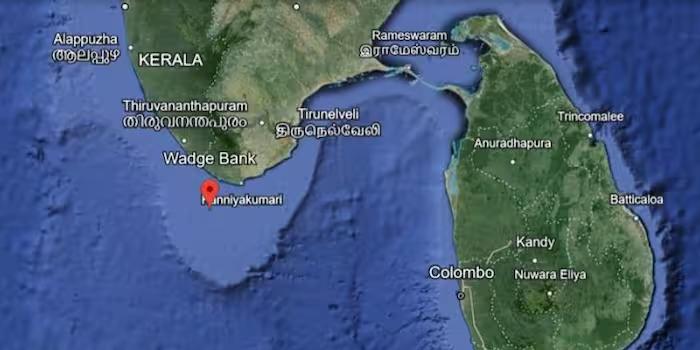
- 03 Apr 2024
Why is it in the News?
While India 'gave away' rights to Katchatheevu, in a subsequent pact, it secured sovereign rights in Wadge Bank near Kanyakumari.
What is Wadge Bank?
- Wadge Bank is a 10,000 square kilometer submarine plateau, of the sea south of Kanyakumari that is rich in biodiversity and considered India’s richest fishery resource.
- Wadge Bank, located near Cape Comorin, is home to more than 60 species of ornamental fish and other oceanic animals.
- It is a productive coastal area where three seas meet and tides create a rich fishing ground from May to October.
- Moreover, it is an invaluable treasure that indigenous people and communities depend on for food and resources, and is important to their culture.
How did India get control of the Wadge Bank?
- Wadge Bank came to India as part of the second of the two accords signed with Sri Lanka in the 1970s.
- Following the 1974 agreement under which Prime Minister Indira Gandhi ‘gave away’ Katchatheevu island to Sri Lanka, New Delhi, and Colombo signed another pact in 1976 under which the former bought Wadge Bank.
- On March 23, 1976, India and Sri Lanka signed the agreement on the maritime boundary in the Gulf of Mannar and the Bay of Bengal as part of which it was agreed that the Wadge Bank “lies within the exclusive economic zone of India, and India shall have sovereign rights over the area and its resources”.
- In the general description of Wadge Bank annexed with the treaty shared with the United Nations, it is described as “outside the territorial waters of India”.
- The Wadge Bank near Kanyakumari is rich in biodiversity and considered India’s richest fishery resource.
- As per the 1976 pact, Sri Lankan fishermen can’t engage in activities here.
- ??But at the request of Sri Lanka and as a gesture of goodwill, India agreed that Lankan fishing vessels licensed by the Government of India could fish in Wadge Bank for three years from its establishment as an exclusive economic zone of India with the stipulation that only six such vessels can fish and their catch cannot exceed 2,000 tonnes in a year.
- And, again at the request of the Sri Lankan government, India agreed to provide Colombo with 2,000 tonnes of fish of the quality, species, and at the price mutually agreed by the two sides for five years after the Lankans stopped fishing at the Wadge Bank.
BIMSTEC Charter

- 03 Apr 2024
Why is it in the News?
Recently, a significant majority in Nepal's Lower House backed the proposal to endorse the BIMSTEC Charter.
About the BIMSTEC Charter:
- The BIMSTEC Charter, officially signed and adopted during the Fifth BIMSTEC Summit in Colombo, Sri Lanka in 2022, serves as a cornerstone legal and institutional framework for the Bay of Bengal Initiative for Multi-Sectoral Technical and Economic Cooperation (BIMSTEC).
- This charter aims to establish a structured environment conducive to rapid economic development by delineating specific cooperation projects within the agreed areas of collaboration, along with potential expansions into additional areas as mutually agreed upon by Member States.
- Furthermore, the charter reaffirms the enduring commitment to the foundational principles and objectives of BIMSTEC, as articulated in the Bangkok Declaration of 1997.
The Importance of the BIMSTEC Charter:
- By officially adopting the BIMSTEC Charter, the organization transforms into a structured institution comprising member states situated along the Bay of Bengal, thereby formalizing their cooperation and dependence on this vital maritime region.
- The Charter grants BIMSTEC the authority to establish external relations with non-member states, developmental partners, as well as regional, UN, and international organizations, facilitating broader collaboration and engagement.
- Moreover, it underscores the imperative for a fair, just, equitable, and transparent global order while reiterating the commitment to multilateralism, with the United Nations at its core, and advocating for a rule-based international trading system.
About the Bay of Bengal Initiative for Multi-Sectoral Technical and Economic Cooperation (BIMSTEC):
- The Bay of Bengal Initiative for Multi-Sectoral Technical and Economic Cooperation (BIMSTEC) is a regional organization comprising seven Member States lying in the littoral and adjacent areas of the Bay of Bengal constituting a contiguous regional unity.
- This sub-regional organization came into being on 6 June 1997 through the Bangkok Declaration.
- It constitutes seven Member States:
- Five derive from South Asia, including Bangladesh, Bhutan, India, Nepal, and Sri Lanka, and
- Two from Southeast Asia, including Myanmar and Thailand.
- Initially, the economic bloc was formed with four Member States with the acronym ‘BIST-EC’ (Bangladesh, India, Sri Lanka, and Thailand Economic Cooperation).
- Following the inclusion of Myanmar on 22 December 1997 during a special Ministerial Meeting in Bangkok, the Group was renamed ‘BIMST-EC’ (Bangladesh, India, Myanmar, Sri Lanka and Thailand Economic Cooperation).
- With the admission of Nepal and Bhutan at the 6th Ministerial Meeting (February 2004, Thailand), the name of the grouping was changed to ‘Bay of Bengal Initiative for Multi-Sectoral Technical and Economic Cooperation’ (BIMSTEC).
Katchatheevu Island
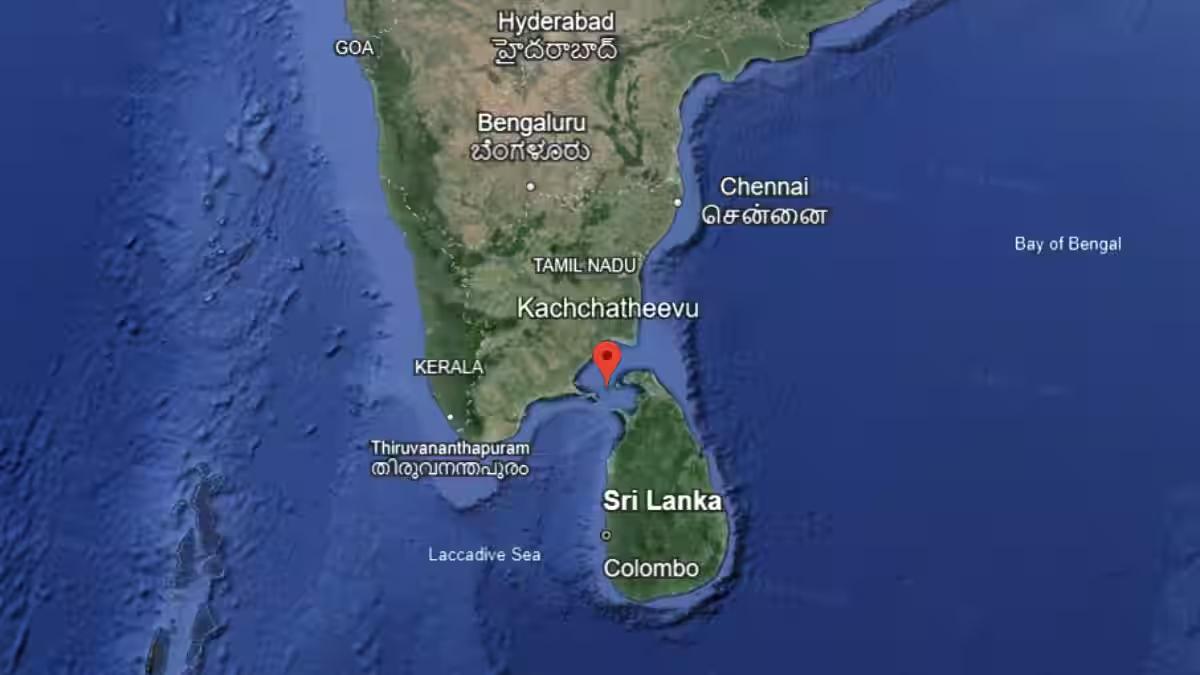
- 01 Apr 2024
Why is it in the News?
Prime Minister Narendra Modi once again attacked the Congress about its decision to “callously give away” the island of Katchatheevu.
About the Island of Katchatheevu:
- Katchatheevu is an uninhabited area located between India and Sri Lanka in the Palk Strait.
- It measures around 1.6 km in length and slightly over 300 m wide at its broadest point.
- Situated northeast of Rameswaram, it is approximately 33 km away from the Indian coast.
- Moreover, it is positioned about 62 km southwest of Jaffna, at the northern tip of Sri Lanka, and 24 km from the inhabited Delft Island, which is a part of Sri Lanka.
- Katchatheevu is not suited for permanent settlement as there is no source of drinking water on the island.
History of the island:
- Being the product of a 14-century volcanic eruption, Katchatheevu is relatively new in the geological timescale.
- In the early medieval period, it was controlled by the Jaffna kingdom of Sri Lanka.
- In the 17th century, control passed to the Ramnad zamindari based out of Ramanathapuram, about 55 km northwest of Rameswaram.
What is the dispute?
- The island became part of the Madras Presidency during the British Raj.
- But in 1921, both India and Sri Lanka, at the time British colonies, claimed Katchatheevu to determine fishing boundaries.
- A survey marked Katchatheevu in Sri Lanka, but a British delegation from India challenged this, citing ownership of the island by the Ramnad kingdom.
- This dispute was not settled until 1974.
What is the Agreement on Katchatheevu Island?
- In 1974, Indira Gandhi made attempts to settle the maritime border between India and Sri Lanka, once and for all.
- As a part of this settlement, known as the ‘Indo-Sri Lankan Maritime Agreement’, Indira Gandhi ‘ceded’ Katchatheevu to Sri Lanka.
- At the time, she thought the island had little strategic value and that ceasing India’s claim over the island would deepen its ties with its southern neighbor.
- Moreover, as per the agreement, Indian fishermen were still allowed to access Katchatheevu “hitherto”.
- Unfortunately, the issue of fishing rights was not ironed out by the agreement.
- Sri Lanka interpreted Indian fishermen’s right to access Katchatheevu to be limited to “rest, drying nets and for visit to the Catholic shrine without a visa”.
- Another agreement in 1976, during the period of Emergency in India, barred either country from fishing in the other’s Exclusive Economic Zone.
- Again, Katchatheevu lay right at the edge of the EEZs of either country, retaining a degree of uncertainty about fishing rights.
How did the Sri Lankan Civil War Impact Katchatheevu?
- Between 1983 and 2009, the border dispute remained on the back burner as a bloody civil war raged in Sri Lanka.
- With the Sri Lankan naval forces preoccupied with their task of cutting off supply lines of the LTTE based out of Jaffna, incursions by Indian fishermen well into Sri Lankan waters were commonplace.
- Bigger Indian trawlers were especially resented as they would not only tend to overfish but also damage Sri Lankan fishing nets and boats.
- In 2009, the war with the LTTE ended, and things dramatically changed. Colombo beefed up its maritime defenses and turned its focus to Indian fishermen.
- Facing a depletion of marine resources on the Indian side, they would frequently enter Sri Lankan waters as they had been doing for years, but finally began facing consequences.
- To date, the Sri Lankan navy routinely arrests Indian fishermen and there have been many allegations of custodial torture and death.
- The demand for Katchatheevu is revived each time such an incident happens.
Indian Government Stance on Katchatheevu Island:
- The Union government’s position on Katchatheevu has largely remained unchanged.
- It has argued that since the island had always been under dispute, “no territory belonging to India was ceded nor sovereignty relinquished.”
India-led ‘Group of Friends’
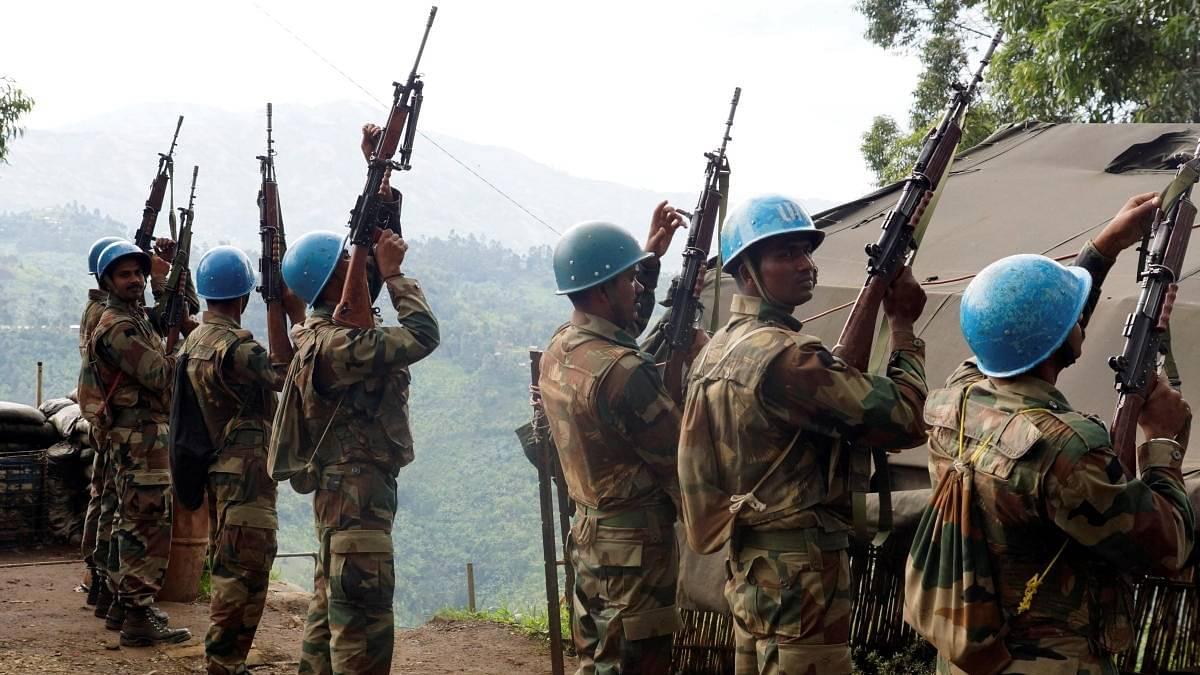
- 30 Mar 2024
Why is it in the News?
At a high-level meeting of the India-led 'Group of Friends (GOF), India launched a new database designed to record crimes against UN peacekeepers and monitor progress in holding perpetrators accountable.
About the 'Group of Friends':
- The Group of Friends (GOF) was launched by India in 2022 to promote accountability for crimes against the Blue Helmets during its presidency of the UN Security Council.
- India, Bangladesh, Egypt, France, Morocco, and Nepal are co-chairs of the GOF, which comprises 40 member states.
Key objectives of the group include:
- Engaging and sharing information with the UN Secretary-General to assist member states hosting or having hosted peacekeeping operations in bringing perpetrators of crimes against peacekeepers to justice.
- Serving as an informal platform at the UN to exchange information, share best practices, and mobilize resources to facilitate accountability for crimes against peacekeepers.
- Monitoring progress on bringing accountability for crimes against peacekeepers.
- The 'Group of Friends' will convene two meetings of its members per year and organize one event annually involving Permanent Missions and other stakeholders, ensuring greater safety and security for peacekeepers.
- This initiative represents the political will of member states, particularly troop and police contributing countries, to champion the implementation of UN Security Council resolution 2589, adopted in August 2021 under India's Presidency of the Council.
- Resolution 2589 called upon member states hosting or having hosted UN peacekeeping operations to take all appropriate measures to bring to justice perpetrators of violence against UN personnel, including their detention and abduction.
- The 'Group of Friends serves as a crucial platform for advancing this resolution, promoting accountability, and enhancing the protection of peacekeepers worldwide.
India's Significant Role in UN Peacekeeping:
- As a longstanding advocate for global peace and stability, India has demonstrated its commitment to United Nations (UN) peacekeeping operations.
- Over the past seven decades, India has contributed more than 260,000 peacekeepers, making it the largest cumulative contributor to UN peacekeeping missions.
- Despite the risks associated with such endeavors, India has remained steadfast in its support of peacekeeping efforts.
- Tragically, 177 Indian peacekeepers have made the ultimate sacrifice in the line of duty, reflecting India's dedication to fostering stability worldwide.
- Presently, India has more than 6,000 peacekeepers deployed in nine out of the twelve UN peacekeeping missions.
- As a strong proponent of accountability for crimes against peacekeepers, India plays a crucial role in advocating for the safety and security of these dedicated personnel.
United Nations High Commissioner for Refugees (UNHCR)
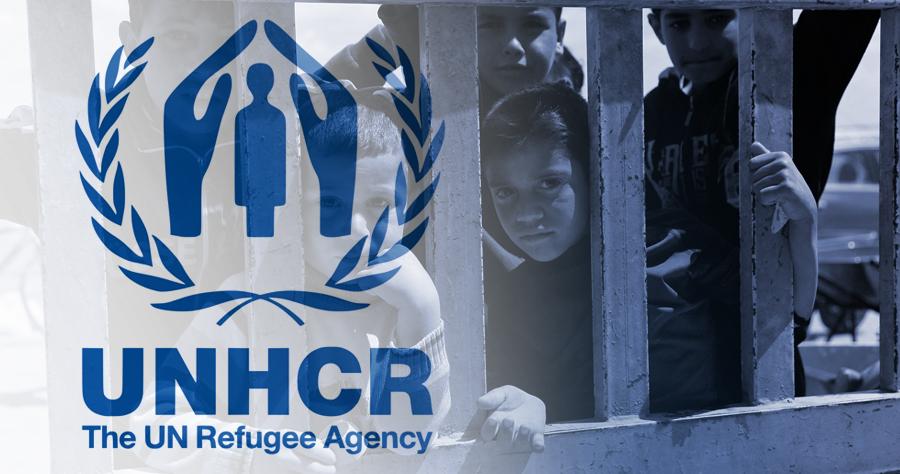
- 29 Mar 2024
Why is it in the News?
According to the United Nations High Commissioner for Refugees (UNHCR), in 2023, more than 4,500 Rohingya refugees embarked on a perilous journey across the Bay of Bengal and the Andaman Sea.
About the United Nations High Commissioner for Refugees (UNHCR):
- UNHCR, the UN Refugee Agency, is a global organization dedicated to saving lives, protecting rights, and building a better future for people forced to flee their homes because of conflict and persecution.
- It leads international action to protect refugees, forcibly displaced communities, and stateless people.
- Formally known as the Office of the High Commissioner for Refugees, UNHCR was established by the General Assembly of the United Nations in 1950 in the aftermath of the Second World War to help the millions of people who had lost their homes.
- Today, UNHCR operates in 137 countries and provides life-saving assistance, including shelter, food, water, and medical care for people forced to flee conflict and persecution, many of whom have nobody left to turn to.
- UNHCR defends their right to reach safety and helps them find a place to call home so they can rebuild their lives.
- UNHCR also collaborates with countries to improve and monitor refugee and asylum laws and policies, ensuring that human rights are upheld.
- UNHCR considers refugees and those forced to flee as partners, putting those most affected at the center of planning and decision-making.
Who are the Rohingya Refugees?
- Rohingya are an ethnic group, largely comprising Muslims, who predominantly live in the Western Myanmar province of Rakhine.
- They speak a dialect of Bengali, as opposed to the commonly spoken Burmese language.
- Though they have been living in the South East Asian country for generations, Myanmar considers them as persons who migrated to their land during Colonial rule so, it has not granted Rohingyas full citizenship.
- According to the 1982 Burmese citizenship law, a Rohingya (or any ethnic minority) is eligible for citizenship only if he/she provides proof that his/her ancestors have lived in the country before 1823. Otherwise, they are classified as “resident foreigners” or as “associate citizens” (even if one of the parent is a Myanmar citizen).
- Since they are not citizens, they are not entitled to be part of civil service. Their movements are also restricted within the Rakhine state.
Order of the Druk Gyalpo

- 23 Mar 2024
Why is it in the News?
Prime Minister Narendra Modi recently received Bhutan’s highest civilian award, the ‘Order of the Druk Gyalpo’, during his two-day State visit to the neighboring nation.
What is the ‘Order of the Druk Gyalpo’ Award?
- The Order of the Druk Gyalpo, Bhutan's most prestigious civilian award, was recently conferred upon Indian Prime Minister Narendra Modi during his two-day State visit to the neighboring nation.
- As the first foreign Head of Government to receive this esteemed accolade, Prime Minister Modi joins a select group of individuals honored for their exceptional contributions to Bhutanese society, service, integrity, and leadership.
- According to the ranking and precedence established within Bhutan's honor system, the Order of the Druk Gyalpo represents the pinnacle of lifetime achievement, taking precedence over all other orders, decorations, and medals.
- Prime Minister Modi received the award in recognition of his outstanding contributions to strengthening India-Bhutan relations and his dedicated service to the Bhutanese nation and its people.
- Past recipients of the Order of the Druk Gyalpo include:
- Her Majesty The Royal Queen Grandmother Ashi Kesang Choden Wangchuck in 2008
- His Holiness Je Thrizur Tenzin Dendup in 2008, and
- His Holiness Je Khenpo Trulku Ngawang Jigme Choedra in 2018.
- With Prime Minister Modi's recent addition to this esteemed list, the Order of the Druk Gyalpo continues to symbolize Bhutan's appreciation for remarkable individuals who significantly impact the country and its people.
Shanghai Cooperation Organisation (SCO) Startup Forum
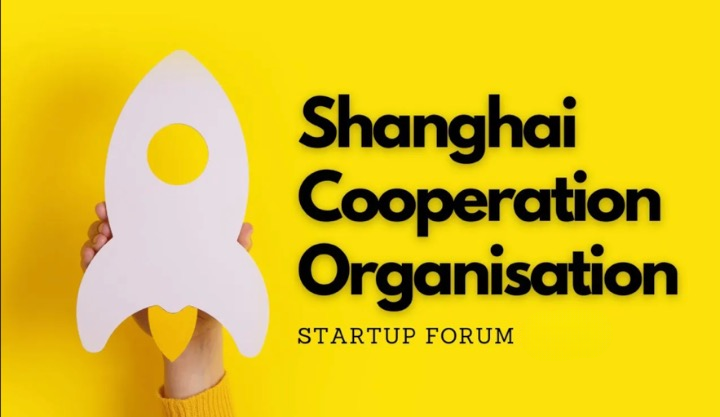
- 22 Mar 2024
Why is it in the News?
India will host the fifth meeting of the Shanghai Cooperation Organisation startup forum in January next year according to the commerce and industry ministry.
About the Shanghai Cooperation Organisation Startup Forum:
- The SCO Startup Forum is a platform for the stakeholders from the startup ecosystems from all SCO Member States to interact and collaborate.
- The entrepreneurial activities aim to empower the local startup communities in the SCO Member States.
- The SCO Startup Forum aims to create multilateral cooperation and engagement for startups among the SCO Member States.
- This engagement will empower the local startup ecosystems in the SCO Member States.
The following are the objectives of the engagement:
- Sharing of best practices to promote entrepreneurship and innovation to build knowledge-exchange systems
- Bringing Corporations and Investors across to work closely with startups and provide local entrepreneurs with much-needed support and market access
- Increasing scaling opportunities for startups by providing solutions in the field of social innovation and providing Governments with a plethora of innovative solutions
- Creating open procurement channels to enable matchmaking for procuring innovative solutions from startups
- Facilitating cross-border incubation and acceleration programs that will enable the startups to explore international markets and get focused mentorship.
Upcoming Events:
- India is set to host the second meeting of the Special Working Group for Startups and Innovation (SWG) in November 2024 and the SCO Startup Forum 5.0 in January 2025.
Past Initiatives:
- SCO Startup Forum 1.0: Established in 2020, laying the groundwork for multilateral cooperation among SCO Member States' startups.
- SCO Startup Forum 2.0: Held virtually in 2021, introducing the SCO Startup Hub, a centralized platform for the SCO startup ecosystem.
- SCO Startup Forum 3.0: Organized physically in 2023 by the Department for Promotion of Industry and Internal Trade (DPIIT), marking a significant milestone for SCO Member States' startup collaboration.
- 1st Meeting of the SWG: Led by India, the first meeting of the SCO Special Working Group on Startups and Innovation in 2023 focused on the theme 'Growing from Roots', emphasizing foundational growth within the startup ecosystem.
Countries hope to bring BBNJ or High Seas treaty into force by 2025
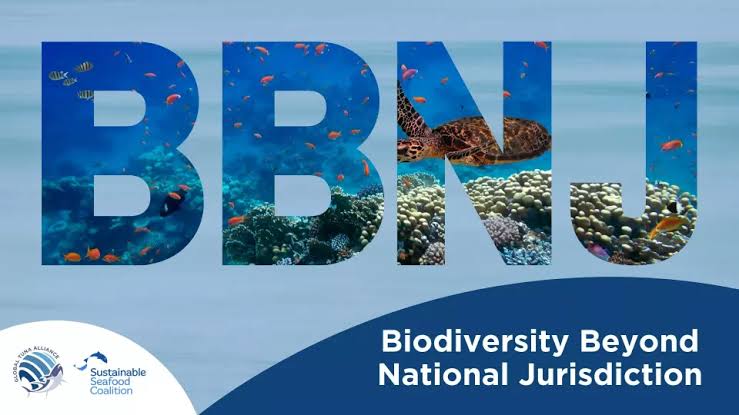
- 08 Mar 2024
Why is it in the News
The Blue Leaders High-Level Event on Biodiversity Beyond National Jurisdiction was held in Belgium on March 7, 2024, to urge nations to ratify a new treaty to protect the high seas from pollution, climate change and overfishing.
What is the BBNJ Treaty?
- The BBNJ Treaty, also referred to as the Treaty of the High Seas, is an international agreement aimed at conserving and sustainably managing marine biological diversity in areas beyond national jurisdiction, operating within the framework of the UNCLOS.
- These areas encompass the high seas beyond exclusive economic zones or national waters.
- It represents nearly half of the Earth's surface and is characterized by minimal regulation and understanding of their biodiversity, with only 1% currently under protection.
- Launched at the One Ocean Summit in February 2022, the High Ambition Coalition on Biodiversity Beyond National Jurisdiction seeks to unite various delegations involved in BBNJ negotiations toward a comprehensive and ambitious outcome.
- The negotiations focus on key elements agreed upon in 2015, including the conservation and sustainable use of marine genetic resources, area-based management tools such as marine protected areas, environmental impact assessments, and initiatives for capacity-building and technology transfer in marine science and management.
- India is yet to sign the treaty. However, it called on efforts for entry into force and implementation of the treaty at the G20 New Delhi Leaders’ Declaration held in September 2023.
The Importance of a Legally Binding Instrument for BBNJ:
- Biodiversity in areas beyond national jurisdiction is crucial for ocean health, coastal communities' welfare, and global sustainability, constituting 95% of the ocean and offering essential ecological, economic, social, cultural, scientific, and food-security benefits.
- Despite their significance, these areas face escalating threats such as pollution, overexploitation, and the impacts of climate change, compounded by the anticipated rise in demand for marine resources in the future.
- Even the deep seafloors, considered one of the most inhospitable habitats, are experiencing the onset of extinction processes, with alarming statistics showing that 62% of assessed mollusc species are threatened, including critically endangered, endangered, and vulnerable species, while the International Seabed Authority permits deep sea mining contracts.
- It is imperative to establish a legally binding framework for managing and regulating biodiversity in areas beyond national jurisdiction, as over 60% of this resource in the global seas remains unmanaged and unprotected, necessitating comprehensive conservation measures.
Grey-zone Warfare Latest Entry in Lexicon of Warfare
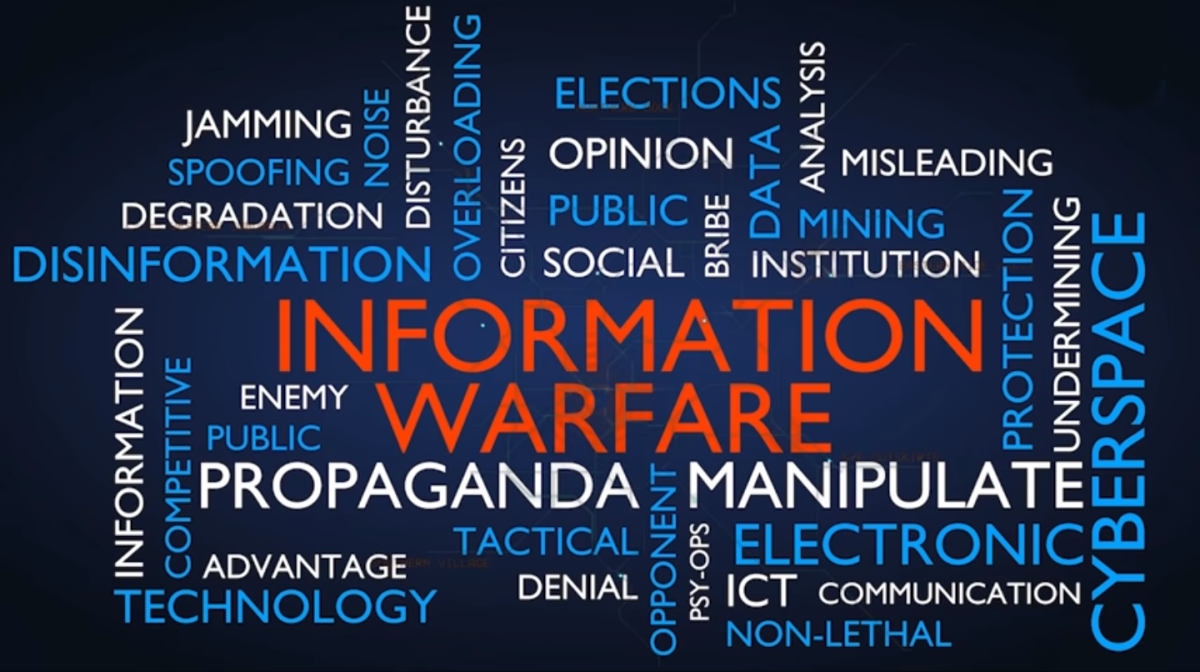
- 04 Mar 2024
Why is it in the News?
On the last day of the 2024 Raisina Dialogue (February 24), India’s Chief of Defence Staff General Anil Chauhan said that “grey zone warfare” is the latest in informal warfare.
What is the Grey Zone Warfare?
- Grey zone warfare refers to a strategic approach where a nation seeks to gain advantages over others without engaging in overt conflict.
- It involves a series of tactics, including cyberattacks, disinformation campaigns, and economic pressures, aimed at subtly undermining or destabilizing adversaries.
- China has notably employed this strategy against India and neighboring countries.
What are the China's Grey Zone Tactics Against India?
- South China Sea Activities: China asserts its dominance in the South China Sea using naval and civilian vessels, raising tensions with neighboring countries like India.
- Infrastructure Near Borders: China constructs infrastructure and settlements near India's borders, bolstering territorial claims and strategic positioning.
- Digital Investments: China invests in Indian digital platforms and media, influencing public narratives and perceptions.
India's Counter-Measures:
- Inter-Agency Collaboration: India promotes collaboration among defense, intelligence, and law enforcement agencies to devise comprehensive strategies to counter grey zone threats.
- Enhanced Vigilance: India increases surveillance and presence in border areas and strategic locations to detect and respond to covert Chinese activities.
- Regulating Foreign Investments: India scrutinizes foreign investments in critical sectors, particularly technology, to safeguard national security interests.
Long-Term Implications for India:
- Information Warfare: Grey zone conflicts often involve digital misinformation, influencing public opinion and perceptions.
- Economic Leverage: Dependency on foreign investments poses vulnerabilities if used as leverage by investing nations.
- Technology Dependency: Heavy reliance on foreign technology exposes India to risks, emphasizing the need to bolster indigenous technological capabilities.
Conclusion
Grey zone warfare encompasses a multifaceted strategic landscape, blending digital, economic, and geopolitical tactics. India recognizes these challenges and is actively devising strategies to navigate this complex terrain.
Several OPEC+ nations extend oil cuts to boost prices
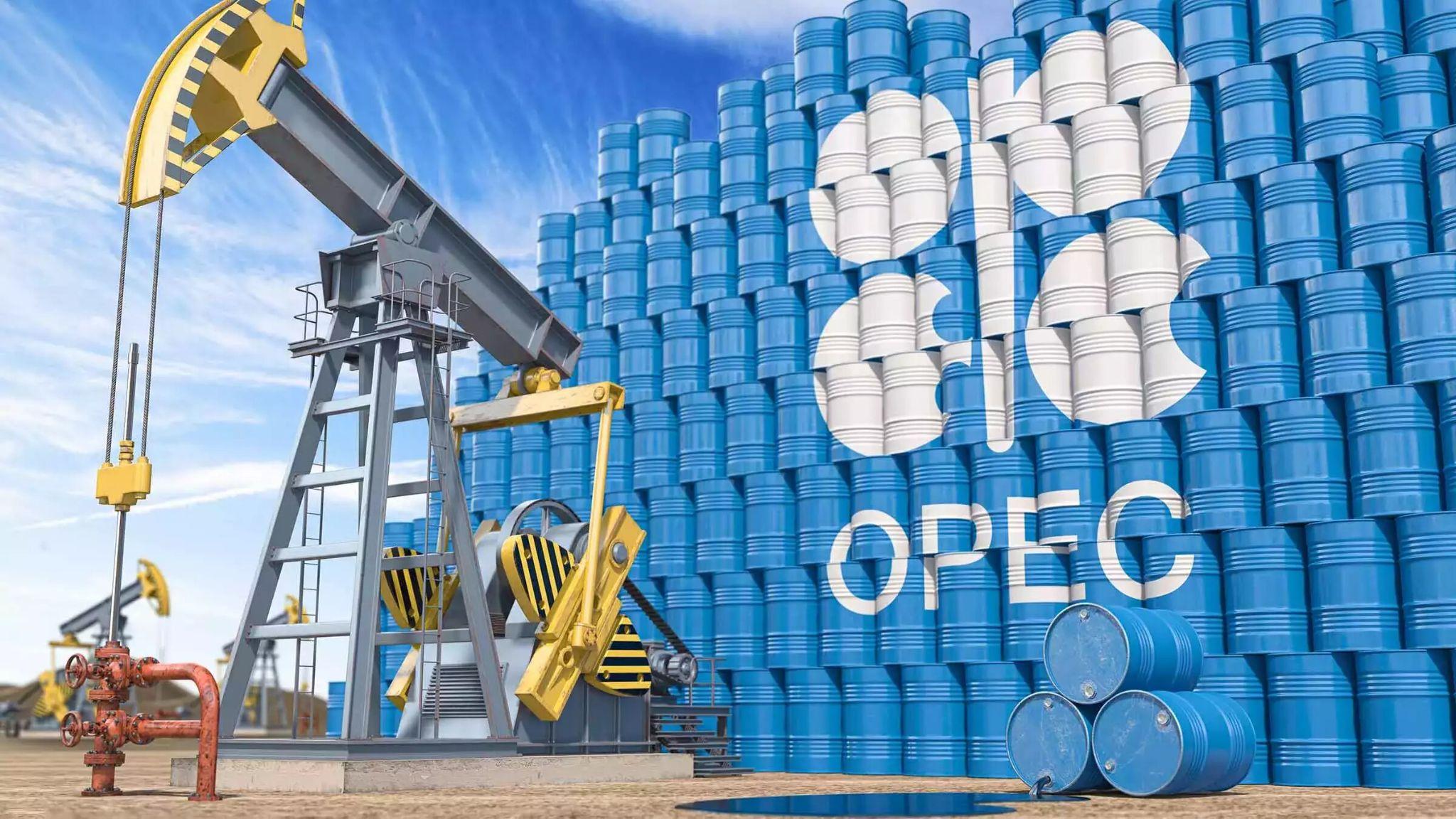
- 04 Mar 2024
Why is it in the News?
Moscow, Riyadh, and several other OPEC+ members announced extensions to oil production cuts first announced in 2023 as part of an agreement among oil producers to boost prices following economic uncertainty.
What is the OPEC+ Oil Alliance?
- OPEC+ is a coalition of oil-exporting nations that convenes regularly to determine the quantity of crude oil to offer on the global market.
- Origin: This alliance was established in late 2016 to formalize a framework for collaboration between OPEC and non-OPEC oil-producing nations on a consistent and sustainable basis.
- The primary objective of these nations is to collaborate on regulating crude oil production to stabilize the oil market.
- OPEC+ collectively controls approximately 40% of global oil supplies and holds over 80% of proven oil reserves.
- At its core, OPEC+ consists of OPEC member states, predominantly comprising nations from the Middle East and Africa.
- Membership: It includes OPEC member states along with Azerbaijan, Bahrain, Brunei, Kazakhstan, Russia, Mexico, Malaysia, South Sudan, Sudan, and Oman.
About the Organization of the Petroleum Exporting Countries (OPEC):
- OPEC, short for the Organization of the Petroleum Exporting Countries, is a permanent intergovernmental organization comprised of oil-exporting nations.
Mission:
- To coordinate and harmonize the petroleum policies of its member countries.
- To ensure the stability of oil prices in global oil markets, aiming to eliminate detrimental and unnecessary fluctuations.
- Formation: Founded in 1960 by the five original members - Iran, Iraq, Kuwait, Saudi Arabia, and Venezuela.
- Presently, it consists of 13 member countries, which include Algeria, Angola, Congo, Equatorial Guinea, Gabon, Libya, Nigeria, and the United Arab Emirates.
- Headquarters: Located in Vienna, Austria.
India halts Pakistan-bound ship suspected of carrying CNC machines from China
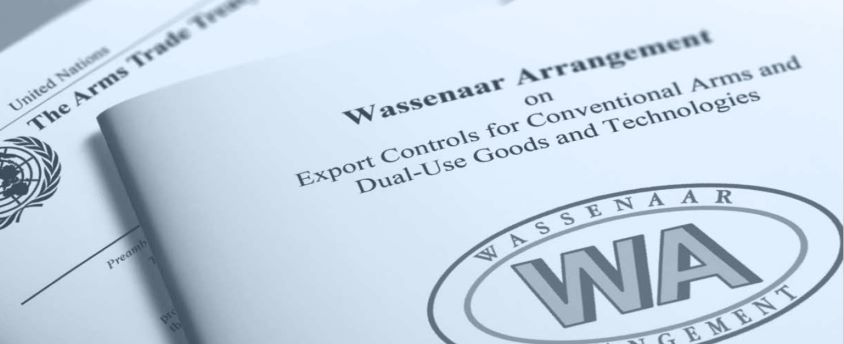
- 04 Mar 2024
Why is it in the News?
Recently, Indian security agencies have intercepted a Pakistan-bound ship from China at Mumbai's Nhava Sheva port.
What are CNC Machines and Wassenaar Arrangements?
- CNC machines are controlled by a computer and offer efficiency, consistency, and accuracy not possible manually.
- These machines have been included in the Wassenaar Arrangement since 1996.
- This international arms control regime aims to stop the proliferation of equipment with both civilian and military uses, with India being among the 42 member countries exchanging information on transfers of conventional weapons and dual-use goods and technologies.
About the Wassenaar Arrangement:
- The Wassenaar Arrangement is a voluntary export control framework established in July 1996.
- Comprising 42 member nations, it facilitates the exchange of information regarding transfers of conventional weaponry and dual-use goods and technologies.
- Dual-use items possess the capacity for both civilian and military applications.
- The arrangement's secretariat is headquartered in Vienna, Austria.
Membership:
- The arrangement boasts 42 member states, predominantly consisting of NATO and EU nations.
- Members are obligated to report arms transfers and dual-use goods and technology transfers or denials to destinations beyond the arrangement biannually.
- India became a member of the Arrangement in 2017.
Objectives:
- Central to its operation is the continual exchange of technology-related information, encompassing both conventional and nuclear-capable technologies, among member states.
- This information exchange involves the maintenance and refinement of comprehensive lists of materials, technologies, processes, and products deemed militarily significant.
- The primary goal is to regulate the movement of technology, materials, or components to entities or nations that could jeopardize global security and stability.
Wassenaar Arrangement Plenary:
- The WA Plenary is the decision-making and governing body of the Arrangement.
- It is composed of representatives of all Participating States who normally meet once a year, usually in December.
- Chairmanship of the Plenary is subject to annual rotation among Participating States.
- In 2018, the United Kingdom held the Plenary Chair, while Greece assumed the position in 2019.
- Decisions within the Plenary are made through consensus.
How the development of Agaléga figures in India’s vision for its maritime neighbourhood
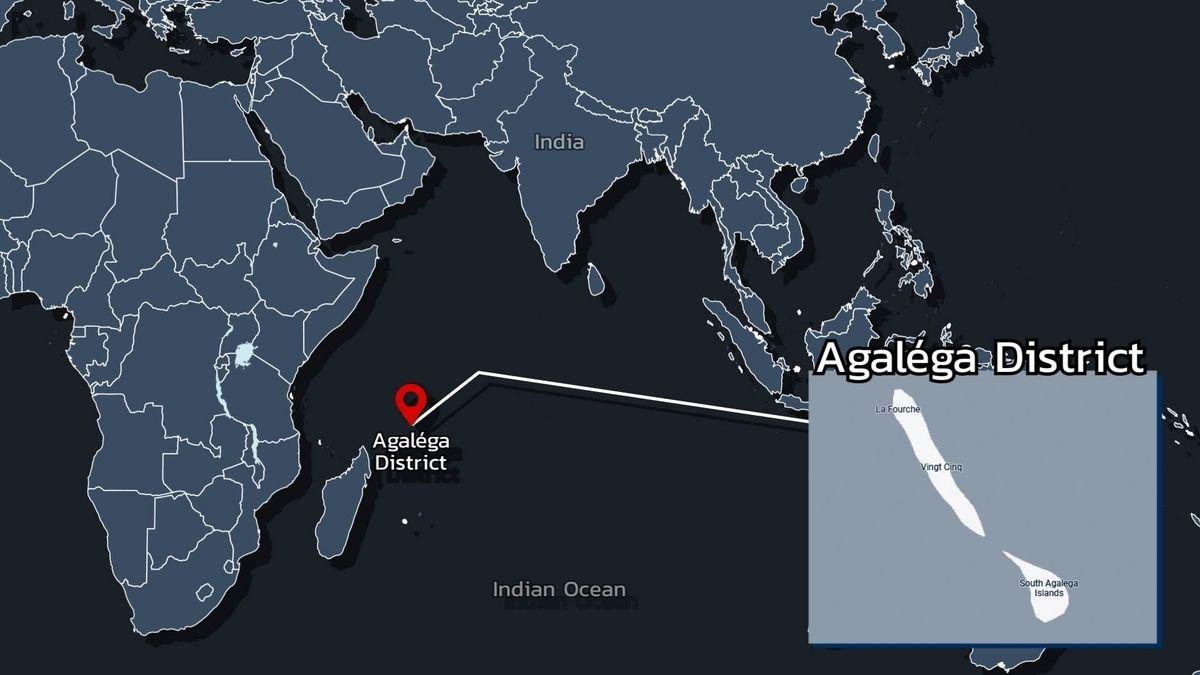
- 02 Mar 2024
Why is it in the News?
Recently, Prime Ministers Narendra Modi and Pravind Jugnauth jointly inaugurated an airstrip and the St James Jetty on North Agaléga Island in the Indian Ocean.
About Agalega Islands:
- Agaléga Island comprises two islets, a long and thin northern island and a shorter, round southern island.
- It is slightly over 3,000 kilometres from the nearest mainland Indian coast, deep in the Indian Ocean near Madagascar.
- Despite its pristine appeal, Agaléga remains largely undiscovered by tourists and there are no hotels, water bungalows, or bustling tourist shops.
- Instead, approximately 300 islanders sustain themselves through coconut cultivation and fishing, maintaining a way of life passed down through generations.
Importance of Agalega Islands:
- The development of the Agalega Islands holds significant socio-economic and national security implications for Mauritius, aligning closely with India's maritime vision.
- Despite being a dependency of Mauritius, the islands have long remained underdeveloped, posing challenges to the sustainability and well-being of their inhabitants.
- Necessities often required referral to Mauritius due to the lack of infrastructure.
- Moreover, the absence of an official government or security presence posed a serious vulnerability, necessitating urgent attention.
- Recognizing the potential to transform this vulnerability into a strategic asset, Mauritius prioritized the development of the islands and the establishment of facilities capable of accommodating ships and aircraft.
- In this regard, the construction of a jetty and an airstrip emerged as imperative steps to bolster the islands' infrastructure.
- Given the shared interests and cooperation between Mauritius and India, the government of Mauritius selected India as its preferred development partner for this ambitious initiative.
Why did Mauritians Choose India?
- Ties between India and Mauritius go back to 1948, 20 years before the country’s independence from Britain.
- Seventy percent of the inhabitants of Mauritius are of Indian origin, and the two countries share deep historical, social, and cultural bonds.
- The consistent feature in the history of bilateral relations has been friendship and trust at all levels — the political leadership, the diplomatic and military communities, as well as between the peoples of the two countries.
- The development of these strategically located islands required trust more than anything else. India was the obvious choice.
Significance for India:
- The goodwill and trust between the two countries will be further enhanced. India will welcome opportunities to further develop these islands in collaboration with Mauritius as the latter deems appropriate.
- The joint development of Agaléga underscores India’s commitment to the vision of Security And Growth for All in the Region (SAGAR), and its willingness to assist smaller maritime nations in building capacity and developing capability.
- It will indicate to other maritime neighbours that India is a benign and friendly country that respects the sovereignty of independent nations.
- India would like to emerge as the preferred development and security partner in the Indian Ocean Region.
The NB8 visit to India focuses on cooperation and trust
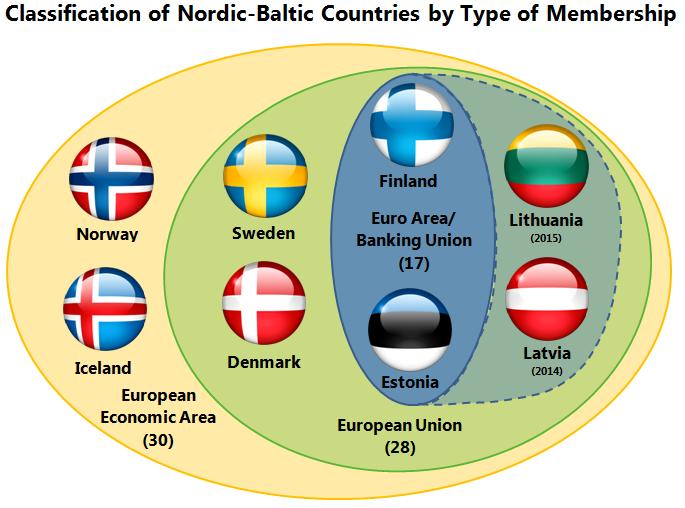
- 24 Feb 2024
Why is it in the News?
External Affairs Minister S Jaishankar hosted the India-Nordic-Baltic meeting on the sidelines of the ongoing Raisina Dialogue 2024 recently.
What are the Nordic-Baltic Countries?
- The Nordic-Baltic countries, also known as the NB8, are a group of Northern European countries that share historical, cultural, and geopolitical ties.
- The group includes
- Nordic countries of Denmark, Finland, Iceland, Norway, and Sweden, and
- Baltic countries of Estonia, Latvia, and Lithuania.
- These countries collaborate on various regional issues, such as security, economy, environment, and culture, and often work together within international organisations and forums.
- The term "Nordic-Baltic" highlights the close relationship and cooperation between these neighbouring states in the Baltic Sea region.
India's Relations with NB8 Countries:
- India's collaboration with NB8 nations is broadening, exemplified by initiatives like the India-Denmark Green Strategic Partnership, the India-Norway Task Force on Blue Economy, and cooperation on sustainability and ICT with Finland, including the 'LeadIT' (Leadership for Industry Transition) initiative with Sweden.
- Cooperation extends across various sectors, including innovation, green transition, maritime affairs, healthcare, intellectual property rights, emerging technologies, space exploration, and artificial intelligence.
- Trade and investment between the NB8 region and India are on a steady rise, reflecting deepening economic ties.
- Moreover, the security dynamics of the Nordic-Baltic region and the Indo-Pacific are intertwined, underlining the interconnectedness of regional security challenges.
Significance of NB8:
- The NB8 nations embody advanced economies characterised by their outward orientation, emphasis on innovation, complementarity, and seamless integration into the European Common Market, the world's largest single market area.
- The Baltic states, in particular, stand out as pioneers in IT, digitization, cyber technology, and green innovations, showcasing their leadership in these critical domains.
- Moreover, all NB8 members share a steadfast commitment to democracy and human rights, serving as advocates for an international order grounded in principles of multilateralism and adherence to international law.
NB8 Proposals for India:
- In light of the Ukraine conflict and its ripple effects on global food and energy security, supply chains, macro-financial stability, inflation, and growth, the NB8 seeks to collaborate with India in the following ways:
- Recognizing Shared Challenges: In an increasingly interconnected world, challenges such as the Ukraine conflict, global health crises, climate-related events, and geopolitical tensions affect us all.
- Acknowledging these shared challenges underscores the necessity for collaborative efforts to address them effectively.
- Embracing a Positive Agenda: There is an urgent imperative to pivot towards a more positive agenda for global cooperation.
- Leveraging our mutual commitment to the multilateral system, the NB8 proposes to enhance dialogue and cooperation on issues that are paramount to India's priorities and those of other global partners.
India contributes $1 million to fund combating poverty and hunger

- 21 Feb 2024
Why is it in the News?
Recently, India has contributed 1 million US Dollars to the Poverty and Hunger Alleviation Fund established by India, Brazil, and South Africa, IBSA.
What is the IBSA Fund?
- Established in 2004 and operational since 2006, the IBSA Fund embodies the collaborative efforts of India, Brazil, and South Africa.
- Contributing one million dollars annually each, the IBSA countries unite in a spirit of partnership to champion Southern-led, demand-driven projects in developing nations.
- With a focus on identifying replicable and scalable initiatives, the fund aims to address pressing development challenges in recipient countries.
- Supported projects align with partner countries' national priorities and international development agendas, including the Sustainable Development Goals (SDGs).
- The fund's objectives encompass diverse areas such as promoting food security, combating HIV/AIDS, and expanding access to safe drinking water, among others, to advance sustainable development.
- To date, the IBSA Fund has allocated USD 50.6 million, funding 45 projects across 37 countries in the Global South.
- The United Nations Office for South-South Cooperation (UNOSSC) fulfils the roles of Fund Manager and Secretariat for the IBSA Fund.
What is IBSA?
- IBSA stands for the India, Brazil, and South Africa Dialogue Forum, a unique platform that unites three major democracies and significant economies from diverse continents, collectively addressing common challenges.
- Formally established as the IBSA Dialogue Forum during a historic meeting of the Foreign Ministers from India, Brazil, and South Africa in Brasilia on June 6, 2003, the forum's inception was marked by the issuance of the Brasilia Declaration.
- To date, five IBSA Leadership Summits have been convened, with the 5th Summit held in Pretoria on October 18, 2011.
- In 2021, India held the chairmanship of IBSA under the theme "Democracy for Demography and Development."
- On March 2, 2023, Brazil assumed the rotating presidency of the India, Brazil, South Africa Dialogue Forum (IBSA), further advancing the forum's collaborative agenda.
Global leaders converge in Delhi for Raisina Dialogue 2024
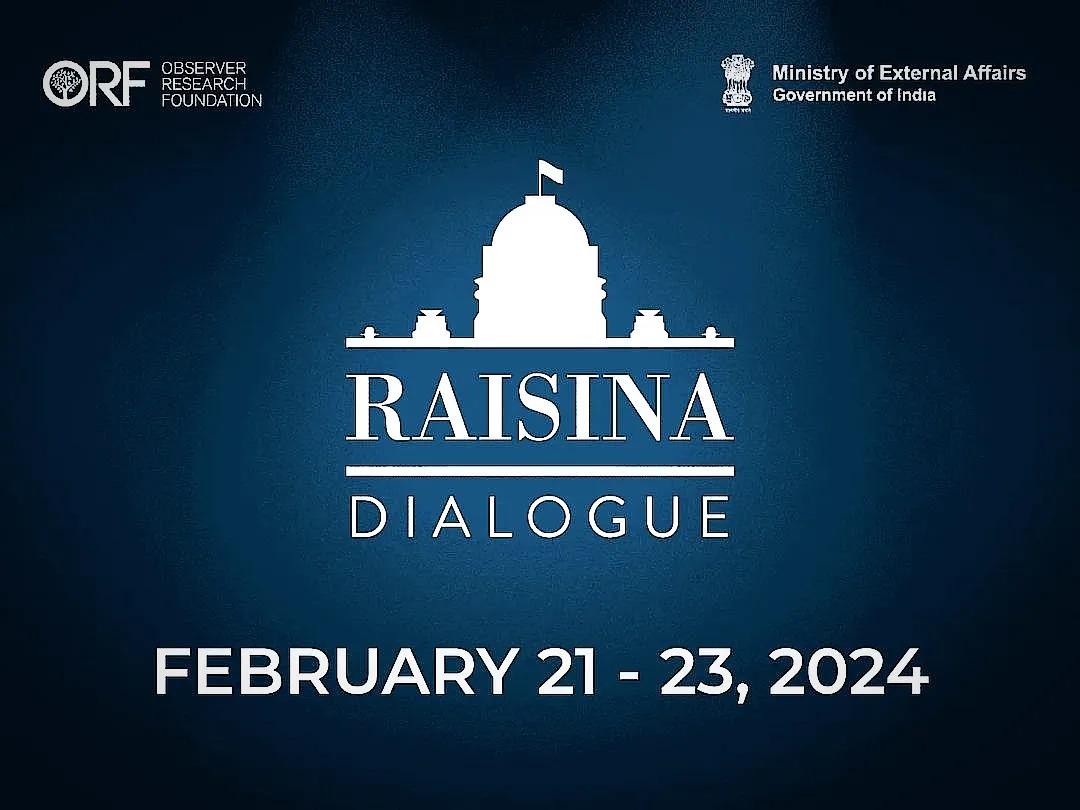
- 21 Feb 2024
Why is it in the News?
The ninth edition of the Raisina Dialogue will be held from today till Friday (February 23) in New Delhi.
What is the Raisina Dialogue?
- The Raisina Dialogue is India’s premier conference on geopolitics and geoeconomics committed to addressing the most challenging issues facing the global community.
- Every year, leaders in politics, business, media, and civil society converge in New Delhi to discuss the state of the world and explore opportunities for cooperation on a wide range of contemporary matters.
- The Dialogue is structured as a multi-stakeholder, cross-sectoral discussion, involving heads of state, cabinet ministers and local government officials, who are joined by thought leaders from the private sector, media and academia.
- The conference is hosted by the Observer Research Foundation in partnership with the Ministry of External Affairs, Government of India.
- This effort is supported by a number of institutions, organisations and individuals, who are committed to the mission of the conference.
- The theme of the 2024 edition is “Chaturanga: Conflict, Contest, Cooperate, Create”.
- During the three-day conference, the participants will engage with each other over six “thematic pillars”. These include:
- Tech Frontiers: Regulations & Realities
- Peace with the Planet: Invest & Innovate
- War & Peace: Armouries & Asymmetries
- Decolonising Multilateralism: Institutions & Inclusion
- The Post 2030 Agenda: People & Progress; and
- Defending Democracy: Society & Sovereignty.
India, and ASEAN discuss the review of the trade agreement
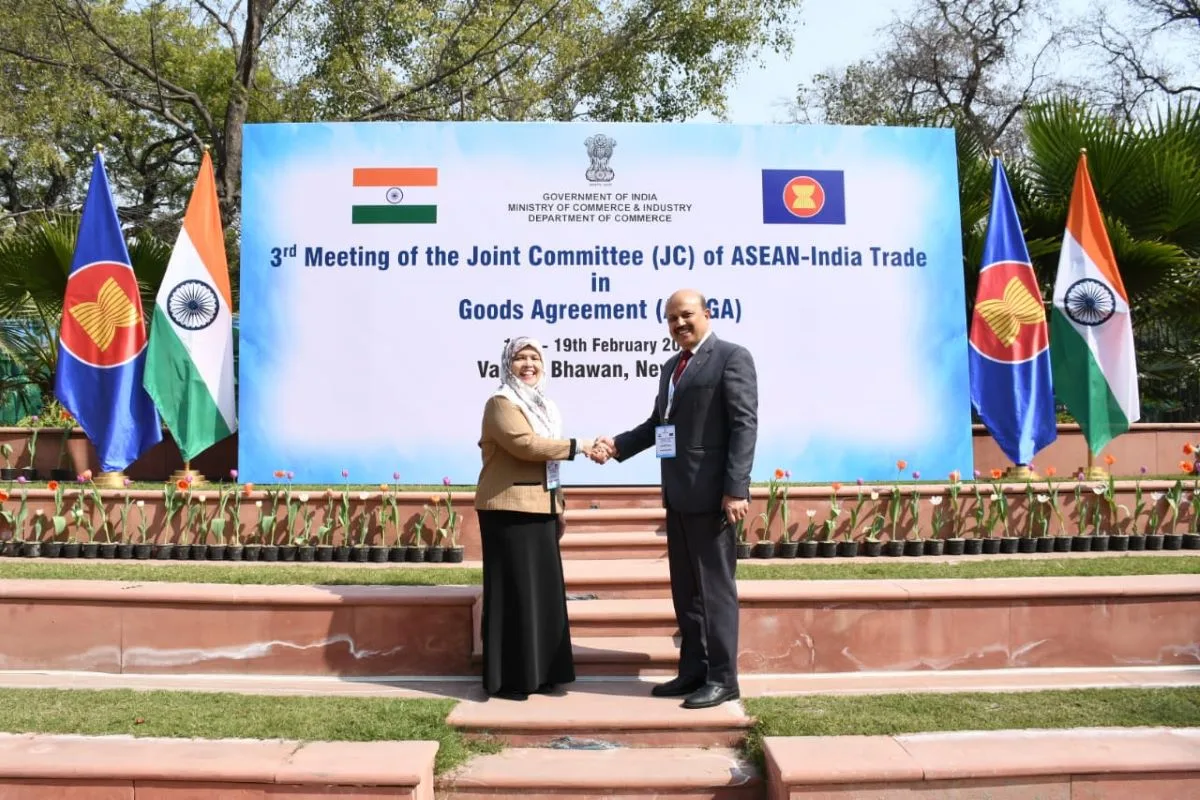
- 20 Feb 2024
Why is it in the News?
India hosted the 3rd meeting of the AITIGA Joint Committee, which focused on reviewing the ASEAN-India Trade in Goods Agreement at Vanijya Bhawan in New Delhi from February 16th to 19th, 2024.
About the ASEAN-India Trade in Goods Agreement (AITIGA):
- The ASEAN-India Trade in Goods Agreement (AITIGA) is a trade deal between the ten member states of ASEAN and India.
- ASEAN and India signed the Agreement at the 7th ASEAN Economic Ministers-India Consultations in Bangkok, Thailand in 2009.
- The Agreement, which came into effect in 2010, is sometimes referred to as the ASEAN-India Free Trade Agreement.
- The Agreement originated out of the Framework Agreement on Comprehensive Economic Cooperation between India and ASEAN created in 2003.
- The Framework Agreement laid a sound basis for the establishment of an ASEAN-India Free Trade Area (FTA), which includes FTA in goods, services and investment.
- The Agreement has led to steadily increasing trade between ASEAN and India since its signing.
- In 2019-20, trade between India and ASEAN was worth US$86 billion.
About ASEAN:
- The Association of Southeast Asian Nations, or ASEAN is an intergovernmental organization of ten Southeast Asian countries:
- Brunei, Cambodia, Indonesia, Laos, Malaysia, Myanmar, the Philippines, Singapore, Thailand, and Vietnam.
- ASEAN's primary objectives are to promote political and economic cooperation and regional stability among its member states.
- The organization operates on the principles of mutual respect, non-interference in internal affairs, and consensus-building. ASEAN's motto, "One Vision, One Identity, One Community," underscores its commitment to fostering unity and solidarity among Southeast Asian nations.
- Economically, ASEAN has made significant strides towards integration through initiatives like the ASEAN Economic Community (AEC), aimed at creating a single market and production base.
- This has facilitated trade, investment, and economic development within the region.
- Additionally, ASEAN serves as a platform for dialogue and cooperation on a wide range of issues, including security, environmental sustainability, cultural exchange, and disaster management.
